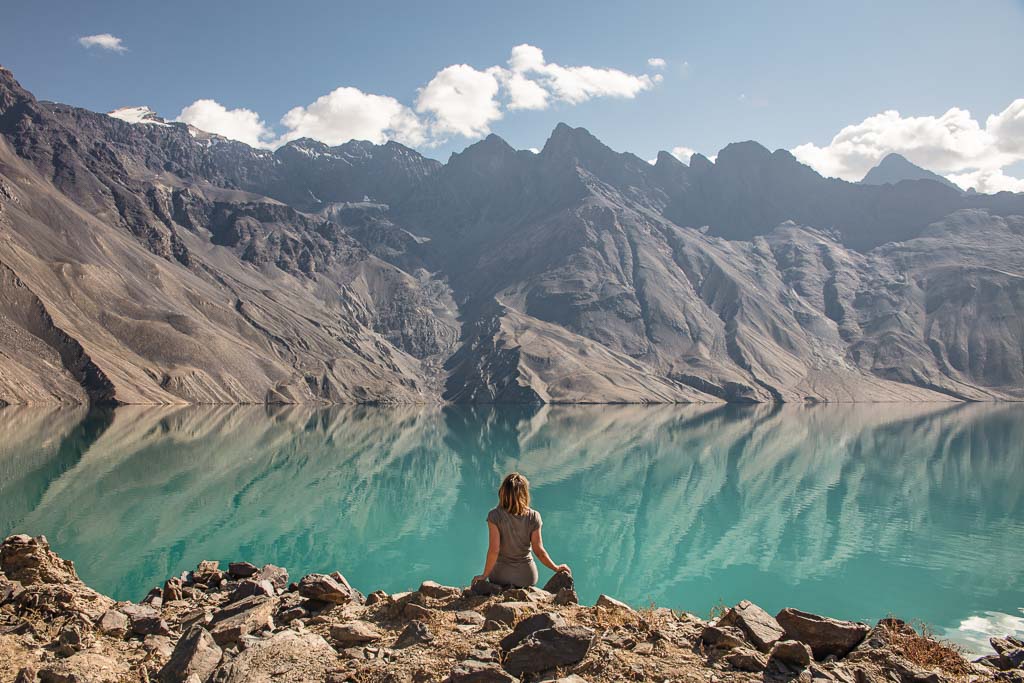
The Ultimate Tajikistan Travel Guide
Updated April 2024,The Ultimate Tajikistan Travel Guide was originally written December 2016
Where Carib-blue glacial lakes reflect atmosphere scraping mountains, hospitality is something of legend and where travel is just opening up. Without a doubt traveling in Tajikistan is a rewarding experience. Wild and rugged, Tajikistan is a country that attracts few adventurers, but those who dare go here are more than rewarded.
If you’re looking for idyllic raw nature where few others roam Tajikistan is the place for you. But don’t worry, there are a few stops to get in some creature comforts for those not as intrepid. Here is everything you need to know about Tajikistan travel.
I can honestly say after so many trips I’ve lost count and several months years spent in Tajikistan, it is my favorite country in the world. There’s nowhere else I’ve spent more time (aside from home) and nowhere else I’ve written this extensively about. Here is literally everything I’ve learned on the road in all my Tajikistan travel experience.
Need Travel Insurance and Evacuation Services for Tajikistan?
Start shopping for travel insurance plans over at IATI Insurance. Readers of the Adventures of Nicole get a 5% discount off your plan.
The Adventures of Nicole partners with Global Rescue to offer the world’s leading medical evacuation and security advisory services. To travel with peace of mind, shop evacuation coverage at Global Rescue.
- General Travel Info
- Food in Tajikistan
- Accommodation
- Tajikistan Travel: Top Things To See & Do
- Where To Go In Tajikistan
- Trekking In Tajikistan
- Tajik Festivals
- Tajikistan Travel & Tour Operators
- Tajikistan Travel Budget
- Tajikistan Travel Packing List
- Great Online Tajikistan Travel Resources
- Internet & Mobile
- Tajikistan Travel Health & Safety
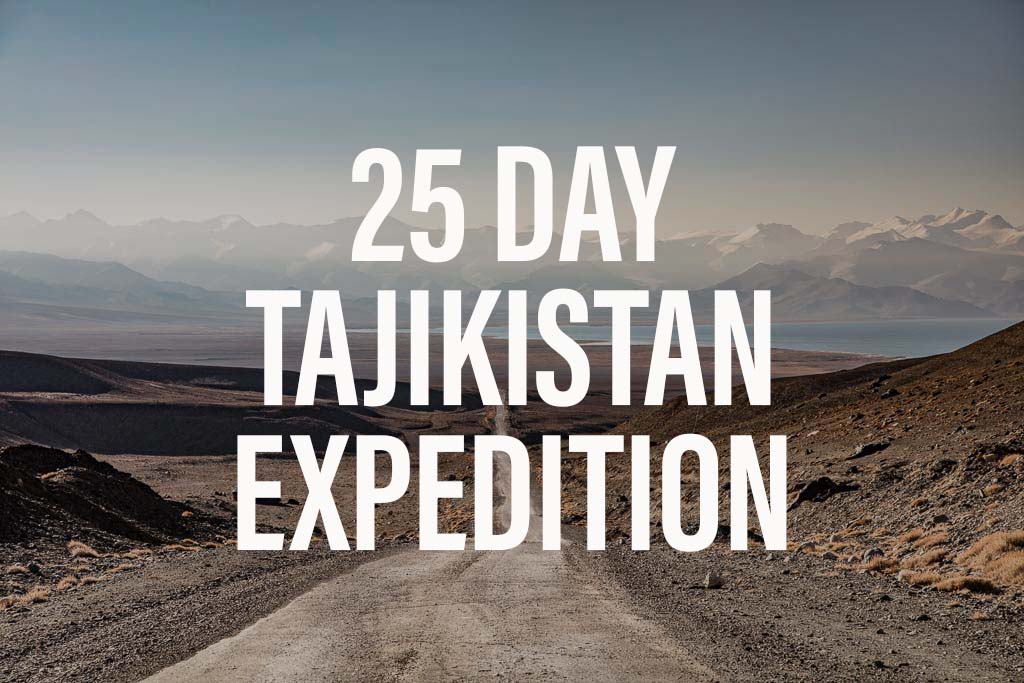
Wanna join an epic trek in the Fann Mountains or a Journey along the Pamir Highway?
I will be leading a 12 day trek that takes in the best of Tajikistan’s Fann Mountains again this summer, followed by a 12 day trip down the Pamir Highway. The Fann Mountains Trek will take place June 12-23, 2024 and the Pamir Highway Expedition will be from June 25-July 6, 2024, with the option to combo both into a 25 day Tajikistan Expedition.
General Travel Info
Money
Tajikistan’s currency is the Tajik Somoni (TJS for short). As of April 2024, the exchange is now:
- $1 USD=11.00 TJS
- €1=11.60 TJS
- £1=13.35 TJS
Gone are the days of the black market, and since 2019 ATMs in major cities and towns generally work! This was a welcomed change from my previous years spent in Tajikistan where 80% of ATMs were out of money, 19% didn’t take foreign cards, leaving that rare 1% to serve you.
I still recommend bringing some USD in with you in the event ATMs go back to their old ways– USD is still widely accepted for larger payments, but money can be exchanged quite easily if need be.
I have found ATMs accepting foreign cards in Dushanbe, Khujand, Khorog, Qalaikhumb, Istaravshan, and Panjakent. Murghab still does not have an ATM as of 2023.
Tipping
Tipping isn’t standard in Tajikistan, however, those in services that cater toward tourists like guides and drivers will likely expect a tip of 10%. Many restaurants in cities will include a 10% gratuity as a service charge on the bill.
Just starting to plan your visit to Tajikistan? Grab a copy of Bradt’s Tajikistan guidebook
Hospitality
Tajiks are extremely welcoming and hospitable so it’s not uncommon for complete strangers to invite you to their home for a meal or to spend the night with their family. Typically Tajiks will not accept any kind of payment in this case, so it is recommended to either hide a few Somoni in the home or give it to the eldest child.
The country isn’t particularly wealthy and people will go above and beyond and even into debt to show you Tajik hospitality. Bringing small gifts is another great idea to show your appreciation.
Language
Long story short, learn basic phrases in Russian and/or Tajik before you head to Tajikistan.
Tajik is the official language of Tajikistan. It is more or less a dialect of Farsi spoken in Iran and Dari spoken in Afghanistan. The one thing that sets Tajik the furthest apart from Dari and Farsi is the use of the Cyrillic alphabet over the Persian-modified Arabic script.
Russian is still commonly used and understood especially among locals over the age of 30, if traveling the whole of Central Asia, Russian will most likely prove the most useful to learn. Then, of course, there are several regional languages: Pamiri, Bartangi, Wakhi, Yagnobi/Sogdian, and so on. Children and teenagers may know a few words of English as it is becoming more popular.
Make sure you can read Cyrillic script before you come to Tajikistan or Central Asia. Many signs and menus in Tajikistan are written in Cyrillic.
Religion
Islam is the main religion in the country. The majority of people are Sunni.
In Khorog, the Wakhan, and the Bartang Valley you’ll find a large number of Ismaili Muslims who are a quite progressive Shia sect. Of course, there is a small number of other religions practiced, such as Zoroastrianism, Christianity, Russian Orthodoxy, and so on.

What To Wear
As with most majority Islamic countries, respectful dress will make your trip much easier. Tajikistan is a somewhat conservative society but is nowhere near as conservative as other Islamic nations.
For Women
For women, as long as you don’t show too much skin you should be fine (even if you do, you will still likely be fine, just stared at). Great outfit options for women are harem pants with loose-fitting shirts, or leggings and tunics. Another good idea would be to have a Tajik style dress (similar to a shalwar kameez) made.
Covering your hair is not required or the norm, but do have a scarf handy with you just in case you find a mosque you’d like to explore. While the headscarf isn’t necessary, you will still see some women wearing it. Mostly they tend to wear a scarf tied around their hair wrapped in a bun.
For men
For men, you can likely wear similar clothing to what you would wear at home. You’ll see men wearing jeans and t-shirts, as well as dress pants and button-down shirts. Shorts above the knee aren’t common.
Men do cover their heads when entering mosques, many mosques will have loner doppa caps you can borrow, or you can pick up a doppa at a bazaar.
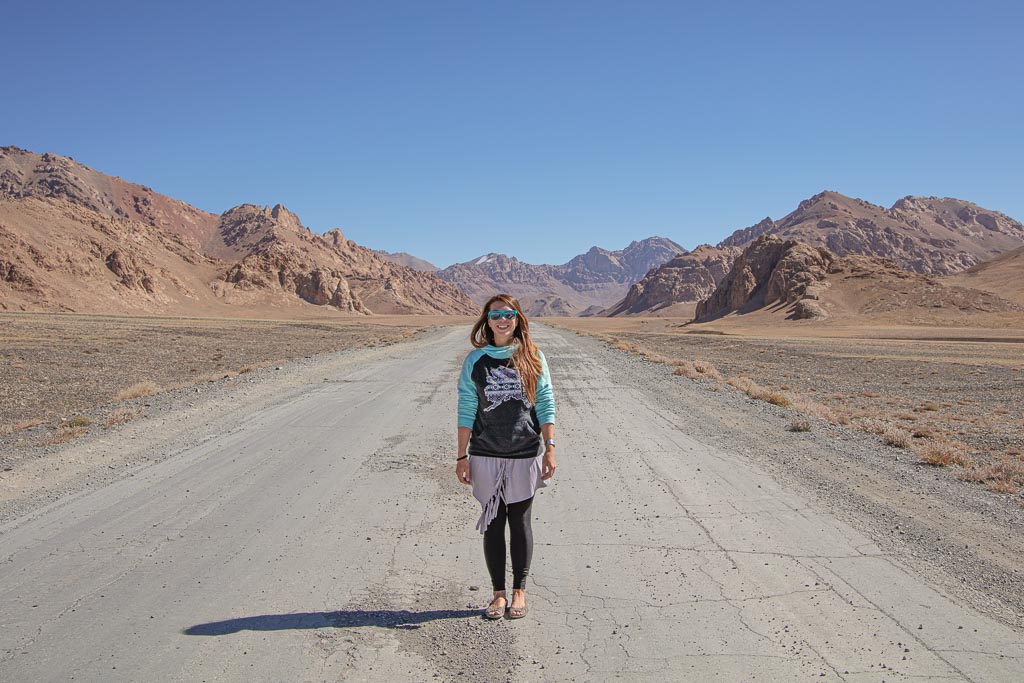
How Long To Travel Tajikistan
This depends largely on what you plan to do and where you’d like to go. Most Tajik visas given out are 60 days in length which is a decent amount of time to get to know the country. 2-3 weeks is a good amount of time to fit in the highlights of Tajikistan.
The biggest attraction in Tajikistan is the famed Pamir Highway road trip, followed by trekking in the Fann Mountains.
The typical amount of time needed to travel the Pamir Highway between Dushanbe and Osh, Kyrgyzstan is 6-9 days, though it is possible to do it in as little as three days. I do not recommend trying to cover the Pamir Highway in 3 days as this would mean sitting in the car for 8-16 hours each day and doesn’t give you any time to actually get out of the car except for to sleep at night.
Usually, people take between 5 and 9 days to complete it. However, those wanting to really get a feel for the region and get some trekking in could spend weeks here and not feel like they scratched the surface.
For those visiting the Fann Mountains, most will spend 2-10 days in the area trekking in the mountains to the beautiful lakes. Of course, you can spend 2 weeks to a month easily if wanting to more thoroughly explore the Fanns as well as the nearby Yagnob Valley.
Here Are A Few Examples Of Time Allotments For Those Planning Tajikistan Travel
- Pamir Highway (without the Wakhan Valley): 5-7 days
- Pamir Highway (with the Wakhan Valley): 7-9 days
- Fann Mountains Trekking (Lakes Loop): 3-5 days
- Haft Kul (7 Lakes of Marguzor or Shing) Trekking: 1-2 days
- Yagnob Valley Trekking: 4-10 days
- Jizeu Trek: 1-2 Days
- Dushanbe: 1-2 days
- Khujand 1-2 days
- Khorog: 1 day
- Murghab: 1 Day
- Istaravshan: 1 Day
Read: 1-4 Week Tajikistan Itinerary Ideas
When To Travel Tajikistan
The best time of year to visit Tajikistan is largely dependent on what you plan to do. The best time to access mountain passes, camp, and even travel around the Pamir Highway is from mid-June to mid-September.
Summer stretches from June to August, this is when the high-altitude passes are most easily accessible.
The lower-lying cities such as Dushanbe, Khujand, Kulab, and even Khorog can be downright scorching hot in summer. Fall is the best time to visit cities as temperatures start to cool down in September and steadily drop through October.
Trekking is still possible and quite beautiful in fall, although October can get quite cold toward the end of the month and snow can be expected at higher elevations.
Winter stretches from November to March and roads through passes will be closed at times. Winter can be a great time to visit for those wanting to ski Tajikistan’s nearly untouched mountains.
The spring months of April & May bring wetter weather and landslides to the Fanns and Pamirs making travel difficult. In spring head for the Karotegin Valley, or into the rarely-touristed southwest of Tajikistan.
Get Around
Most of your transportation in Tajikistan will be by shared taxi, minibus/marshrutka, private 4×4 hire. Hitchhiking is possible but can vary in difficulty depending on where in the country you’re at or plan to go. Note that pretty much anyone with a car will function as a taxi driver, so even when planning to hitchhike many drivers will still expect some payment.
Shared taxis and marshrutka/minibusses tend to only leave when full from taxi stands and bus stations in cities and towns. They typically have a fixed price per seat, so if you are in a hurry and would like to depart sooner it’s possible to pay for the empty seats. The prices listed below are a rough estimate of shared taxi prices based on my most recent visit (summer 2023), do plan to haggle with drivers.
Private 4×4 hire is a common way tourists get around the country as well, although more expensive. Most travelers will travel the Pamir Highway by 4×4 hire split amongst a group of backpackers. Prices tend to fall between 0.70-0.90 (USD) per kilometer.
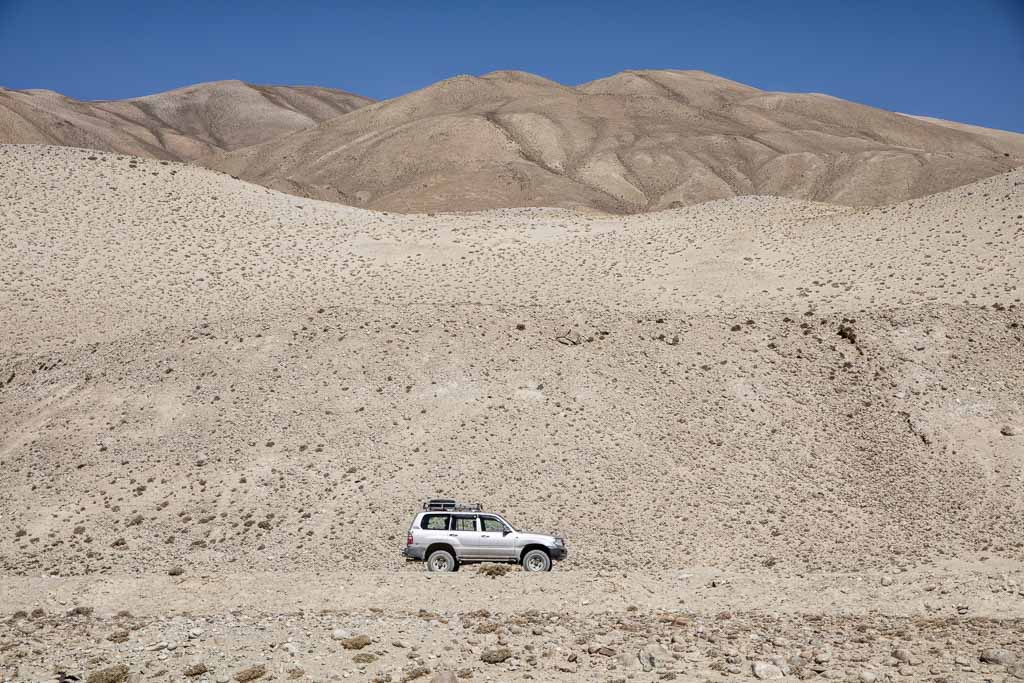
Shared Taxi Prices Per Seat Unless Stated Otherwise
- Dushanbe-Penjikient: 130 TJS
- Dushanbe-Sarvoda: 50 TJS
- Sarvoda-Alovaddin: 200 TJS (entire car)
- Sarvoda-Margib: 300 TJS (entire car)
- Penjikent-Khujand: 120-150 TJS
- Khujand-Istaravshan: 20 TJS
- Khujand-Isfara: 30 TJS
- Dushanbe-Khorog: 400 TJS to Khorog, 350 TJS back to Dushanbe
- Khorog-Ishkashim: 50 TJS
- Ishkashim-Langar: 70 TJS
- Langar-Khorog: 120 TJS
- Khorog-Murghab: 120 TJS
- Murghab-Osh: 200 TJS
Private Car Hire On Popular Routes
For private car hire there are two ways of doing this and one is often substantially more expensive. If you will be going on a popular route such as the ones listed above for shared taxis, you can simply go to a shared taxi stand and offer to purchase all the seats in the vehicle and leave right then and there. For example, if you want to go from Dushanbe to Sarvoda- a seat in a shared taxi would normally cost 50 TJS and there are four passenger seats in the car, so you’ll pay 200 TJS to charter the entire car.
The other way that is more expensive, though you’ll be able to guarantee your departure time, will most certainly have a better quality vehicle, and you don’t have to deal with haggling a price is to book a car in advance with a tour operator in the country. Doing it this way you will spend anywhere between .70-.90 per kilometer and if you have a group, you can split this cost amongst your group members.
Get In & Out
The only ways you can enter Tajikistan are by air or by land (train or car).
By Plane
Both Dushanbe and Khujand have international airports. Somon Air is Tajikistan’s sole national carrier, otherwise, Tajikistan is served by an array of international carriers: Turkish Air, China Southern, Kam Air, Air Astana, Air Manas, Avia Traffic Company, FlyDubai, Nordstar, S7, Ural Airlines, Utair, Uzbekistan Airlines, and Yamal. Cities connected to Tajikistan by flight are Almaty, Astana, Bishkek, Kabul, Tashkent, Urumqi, Beijing, Dubai, Istanbul, Delhi, Frankfurt, and several cities across Russia.
By Land
Note that some land border crossings can take hours, and the crossings with Uzbekistan used to be the most notorious, though the newly re-opened Samarkand-Panjakent border is a breeze.
Tajikistan has several border crossing points with Afghanistan, Kyrgyzstan, and Uzbekistan, and one border crossing with China. To see all of Tajikistan’s land border crossings and which are and aren’t open to foreigners, please check out my Tajikistan Border Crossings article.
There are several reports online of border guards extorting bribes from travelers or being pervy if you’re a solo female. From personal experience, I’ve never had any issues crossing the Kyzyl-Art-Bordobo between Tajikistan and Kyrgyzstan, or at the recently reopened Panjakent-Samarkand crossing between Tajikistan and Uzbekistan.
I did have a little bit of a hassle when I was exiting Tajikistan at Ishkashim into Afghanistan because my e-visa had not been stamped when I entered the country at Khujand (I don’t know why this was an issue as my passport had a stamp in it), however, after arguing for a couple of minutes I was allowed to exit Tajikistan with no further problems.
Two exciting updates have happened more recently, in 2017 the Qolma Pass into China is now open to foreigners (it has reopened following Covid in July 2023 as I received confirmation of the first foreigner to cross) and as of 2018 the Panjakent border to Uzbekistan is open again after a several-year-long pissing match between Tajikistan and Uzbekistan.
By Train
The train isn’t a viable option to travel in Tajikistan and is realistically only used by those heading for Uzbekistan. Trains link Khujand with Uzbekistan, and in the south, a train links Dushanbe to Kulob, and Qurgonteppa with Uzbekistan. Read more on Caravanistan.
There is a 5 day long train to Moscow from Dushanbe. It can be difficult due to the train crossing into Uzbekistan, Turkmenistan, and Kazakhstan, and from the sounds of it you may need to have transit visas in order.
Need more in-depth info in Tajikistan’s border crossings? Read my post on all of Tajikistan border crossings here
Plan the perfect trip with my 10 day Uzbekistan & Tajikistan itinerary
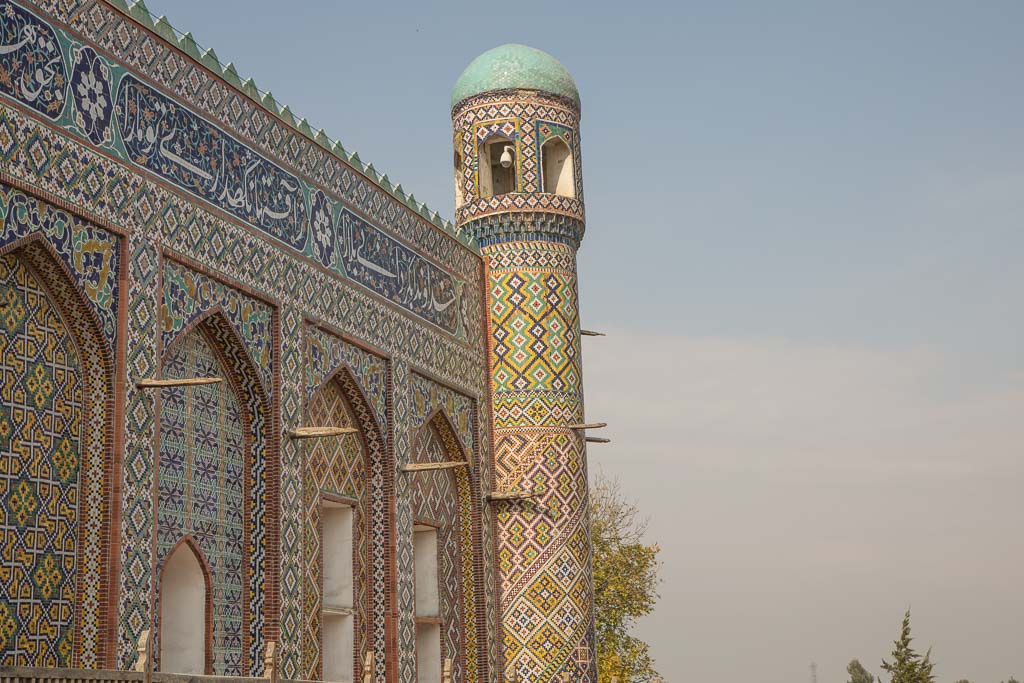
Visas
Starting January 2022 Tajikistan became visa-free for stays up to 30 days for a number of passport holders. The 2016 e-visa system is still in place as well, as several countries will still need to obtain an e-visa in order to enter the country.
Those not on the visa-free or e-visa lists will need to obtain a visa from their nearest Tajik Embassy or Consulate.
Check out my Tajikistan Visa Guide for in-depth details on the visa policy of Tajikistan
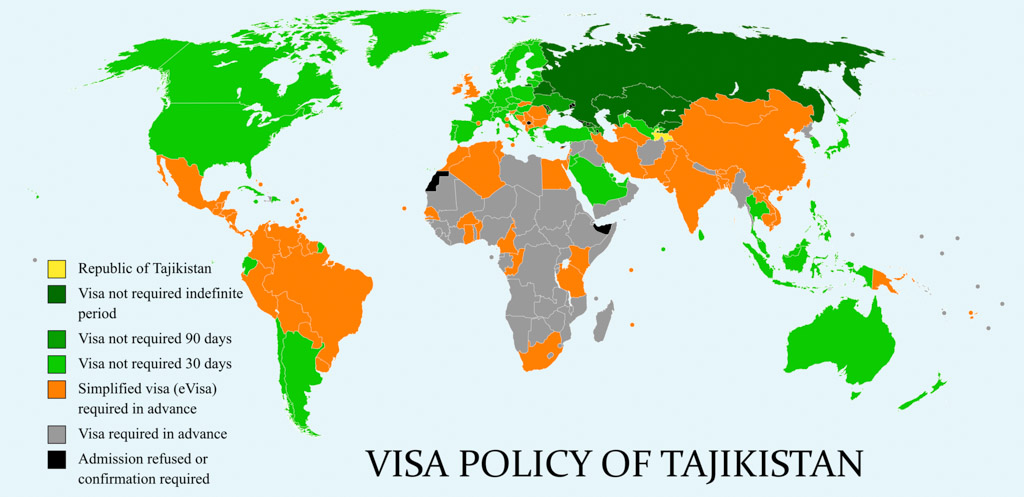
Tajikistan Travel Permits
The previously mentioned GBAO Permit is a must for travel in the Gorno Badakhshan Autonomous Oblast. The GBAO region makes about for the eastern half of the entire country, and those traveling along the Pamir Highway will travel through most of the GBAO. There are police posts set up along the Pamir Highway and it will be checked.
The only other required permits are for the Tajik National Park, Lake Sarez, and for Zorkul.
GBAO Permit- $20: This is a must for anyone traveling the Pamir Highway and anywhere in the eastern half of the country. It is easiest to apply for it at the same time when applying for your e-visa (you can apply for it at embassies and consulates when applying for your visa as well), otherwise, you’ll have to visit the OVIR office in Dushanbe (located at Mirzo Turzunzade Street 5, quick turn-around, permit costs 20 TJS). I believe that if you don’t have it arranged and you’re traveling from Osh to Dushanbe you’re just shit out of luck.
Lake Sarez- $50/day: There is varying information out there on getting the permit. I had read they will be issued for free in Dushanbe from the Ministry for Emergency Situations and can take a month or more to be issued and I’ve also read info stating that you can arrange through tour agencies at a cost of $50/day and a guide is required.
In 2017 I visited Lake Sarez and the Usoi Dam with Nurmuhammed, the owner of Sarez Travel, and I was told by him that a guide is mandatory and that the guide must apply for the permit for you. This is all the more information I know.
When researching the permit before my trip last summer and even asking Tajik friends I got varying responses from “you can just pay KGB if you meet them out there” to “you must have a guide, Sarez Travel is the only organization that can go out there”, and “if you’re caught without a guide and permit you can be thrown in jail and deported”, but most commonly the response I got was that they just flat out didn’t know.
No one was able to give me information on whether or not you need the permit to visit the lake from the south via the Mountain Lakes of Bachor and Bulunkul/Yashilkul, so if anyone has first-hand information please comment at the end of the post or email me at adventuresoflilnicki @ gmail.com.
The Tajik government is really cautious about people visiting Lake Sarez because if the Usoi Dam were to ever breach it would have catastrophic consequences.
Zorkul- $10/day: Lake within a protected area on the Afghan border in very remote eastern Tajikistan. You will be checked for permits at the post from Khargush Pass. I was told it is only available by applying at PECTA (Pamir Eco-Cultural Tourism Association) in Khorog’s City Park. I have read that it is available in Murghab as well, but I am not sure if this is true.
Tajik National Park- 18 TJS/day: The Tajik National Park is massive, to say the least. You should have a permit for visiting anywhere on the map below that falls within the green area (sorry for the water stains on my permit & map).
Popular places in the Tajik National Park includes are: treks around the Bartang Highway (including Grum Grijmailo Glacier, Khafrazdara Valley, Lake Sarez), trekking around the Vanj Valley Road (including Poi Mazar & Fedchenko Glacier), the Mountain Lakes of Bachor, Yashilkul, Pshart Valley, Madiyan Valley, and trekking much beyond the shores of Karakul from Karakul Village.
You can purchase your Tajik National Park pass from PECTA in Khorog, or from park rangers once you are in the park. You may very well never meet a park ranger when exploring Tajik National Park, my only time having crossed paths with any was when I ended a trek from the Karotegin Valley.
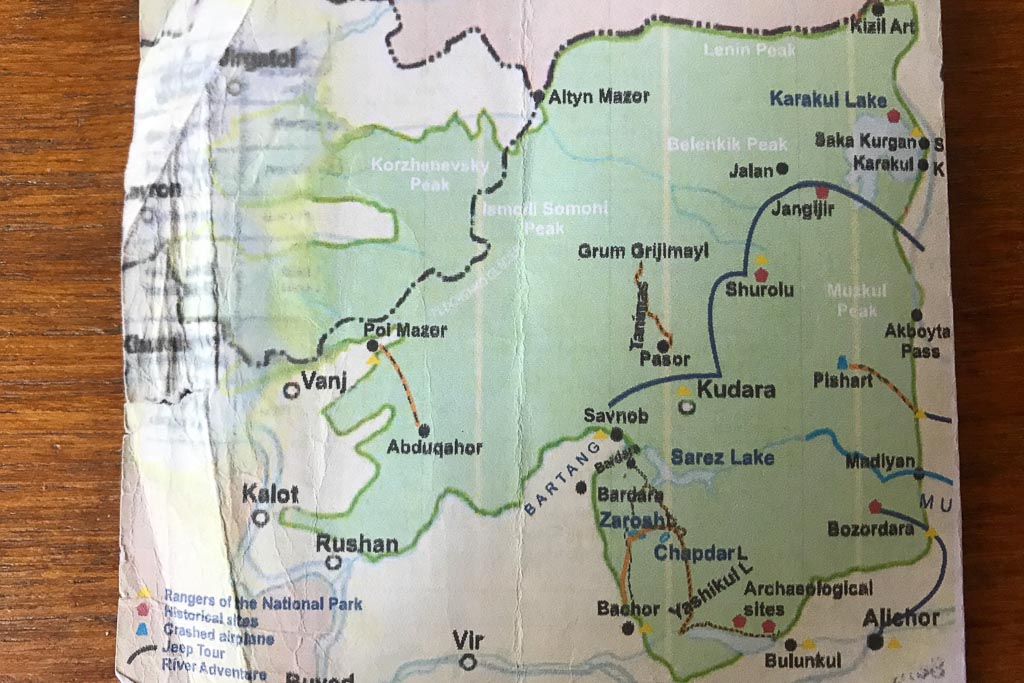
Food in Tajikistan
Nomadic ways meet the Soviet Empire. Tajikistan as well as the greater Central Asia region is not known as a foodie destination. Meals are simple and meat-centric, with little spice. With that said there are some great dishes like Qurutob, which is a personal favorite Tajik dish.
In Dushanbe and to a lesser degree in Khorog international food including Indian, Italian, and more can be found. The best places to go for traditional Tajik fare are chaikhanas (tea houses) or bazaars. Most homestays include at least breakfast and dinner in your nightly fee.
If you want to check out some of the best dishes to try in Tajikistan check out my post on Tajik food and drink.
Here is a list of common dishes you will likely encounter in Tajikistan.
- Plov
- Qurutob
- Shashlik
- Shorbo
- Manti
- Sambusa
- Yogurt
- Non
- Chai
*One thing to note: Tajikistan, as well as the rest of greater Central Asia, have very meat-heavy diets. Vegetarians and vegans will have a challenge outside of cities (more so for vegans). Vegetarianitz/vegertarianka is what vegetarians can call themselves and many people do understand.
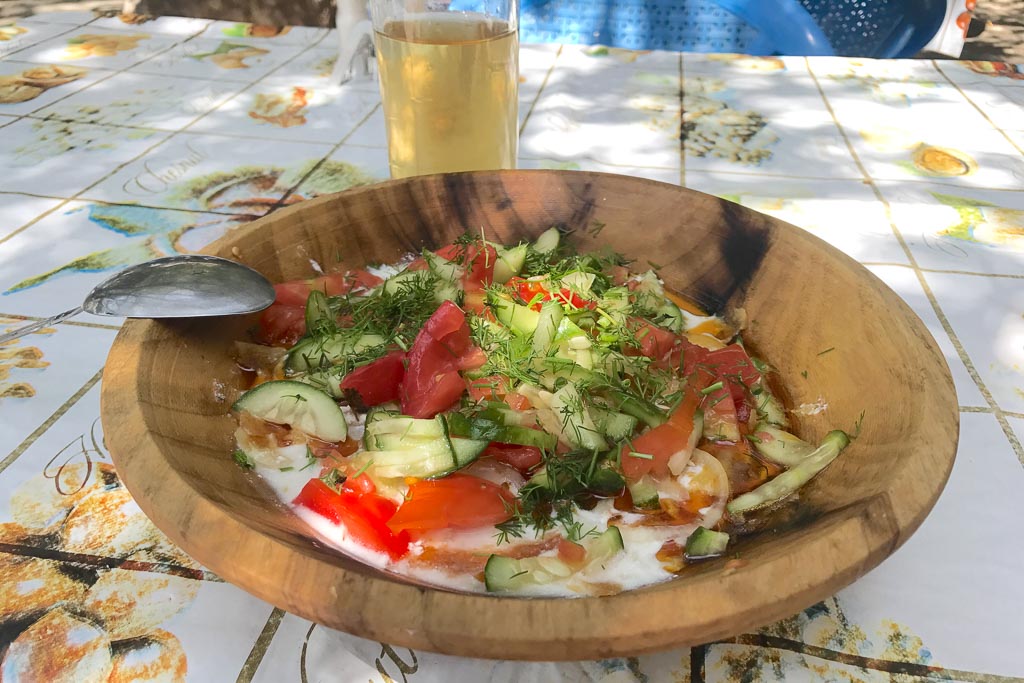
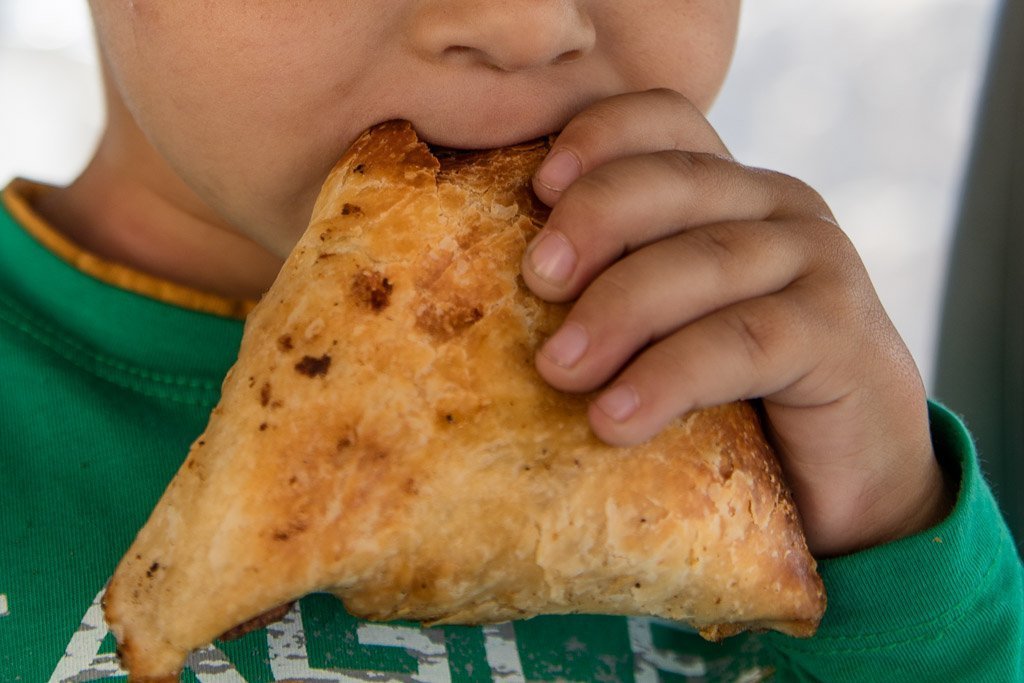
Read: Best Restaurants in Dushanbe to find out where to get the best Kurutob
Accommodation
In cities such as Dushanbe, Khorog, Panjakent, and Khujand you will have a wider variety of accommodation options but outside them, you can expect simple guesthouses and homestays.
If you plan to do any trekking it would be wise to bring a tent if you want to stray away from known settlements.
For those that require luxury, I don’t recommend leaving Dushanbe, and you may want to consider traveling to a different country altogether.
Here are some of my favorite accommodations I’ve stayed at in my travels in Tajikistan, note that many of the accommodations listed do not have websites, but you can call to reserve or go to Pamir Top, and they can usually book just about anywhere for you online.
Dushanbe
- Dushanbe: Hello Hostel Dushanbe
- Dushanbe: Green House Hostel
- Dushanbe: Taj Palace Hotel
- Dushanbe: Hyatt Regency
- Dushanbe: Serena Dushanbe
Pamir Highway
- Qalaikhumb: Roma Jurayev (+992 934712117 or +992 919268610)
- Khorog: Welcome Inn (+992 937035393)
- Bachor: Sultansho Qurboniev Homestay (+992 501849454
- Alichur: Rahima Doronshoeva Homestay (+992 908482612 or +992 931065658)
- Murghab: Erali Guesthouse (+992 93563751421618)
- Murghab: Tulfabek Guesthouse (+992 935389159)
- Murghab: Tillokhan Guesthouse
- Karakul: Tildakhan Homestay (+992 906554831)
- Jarty Gumbez: Jarty Gumbez Guesthouse & Hunting Camp
Wakhan Valley
- Ishkashim: Hanis Guesthouse (+992 935825820)
- Yamchun/Vichkut: Charshanbe Homestay(+992 938305239)
- Hissor: Davlatakhon Homestay (+992 935148819)
- Langar: Yodgor Homestay (+992 934288869)
Bartang Valley
- Jizeu: Lola Homestay (+992 906886676)
- Barchidev: Nurmuhammed Homestay (+992 935004150)
- Pasor: Gulsiyat Homestay (+992 900505573)
Fergana Valley
- Khujand: Sharq 21 Guesthouse
- Istaravshan: Sadbarg (+992 919887048)
Fann Mountains
- Panjakent: Salom Hostel
- Panjakent: Hotel Umariyon
- Haft Kul: Najmidden Homestay (+992 926366748 or can be booked through ZTDA)
- Iskanderkul: Shezok Guesthouse (+992 939048921)
- Sarytag: Shaboz Guesthouse (+992 903436200)
- Sarytag: Dilovar’s Homestay (+992 927882235 or can be booked online through ZTDA)
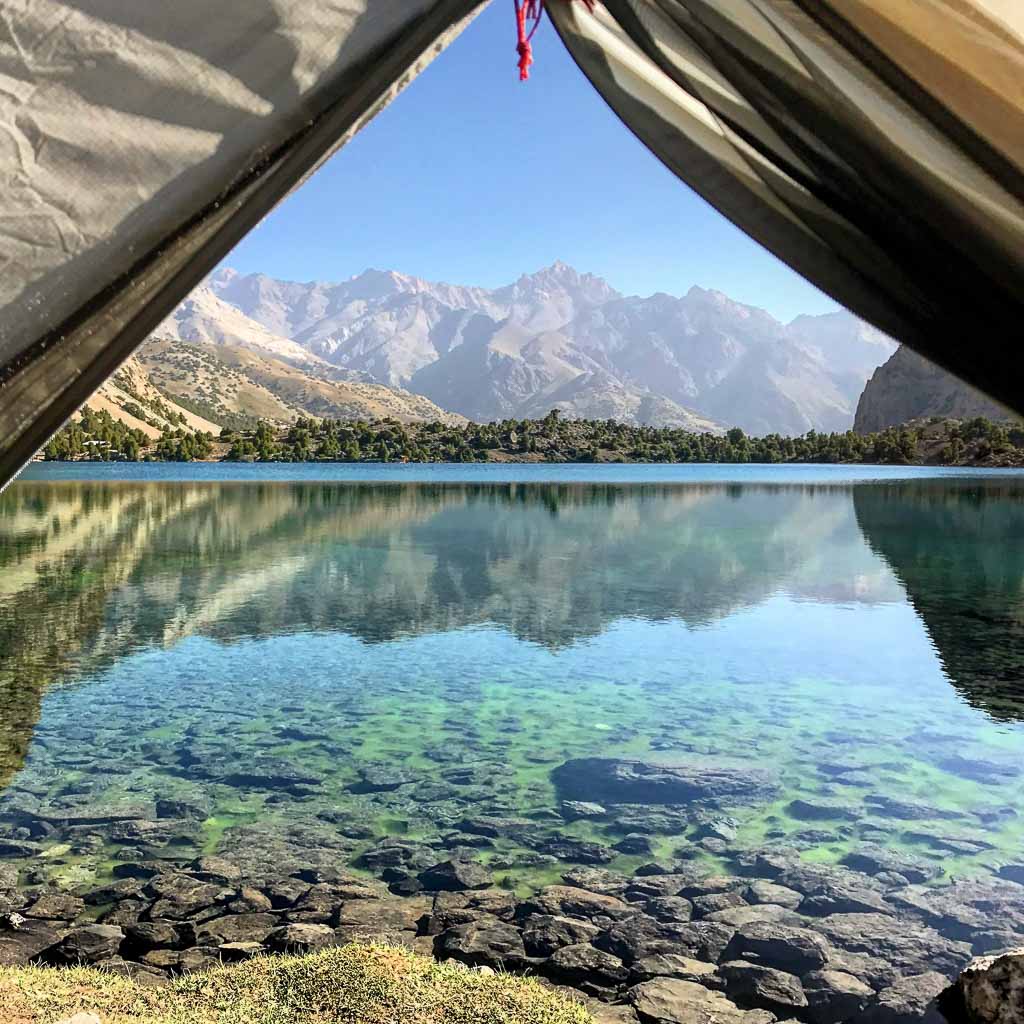
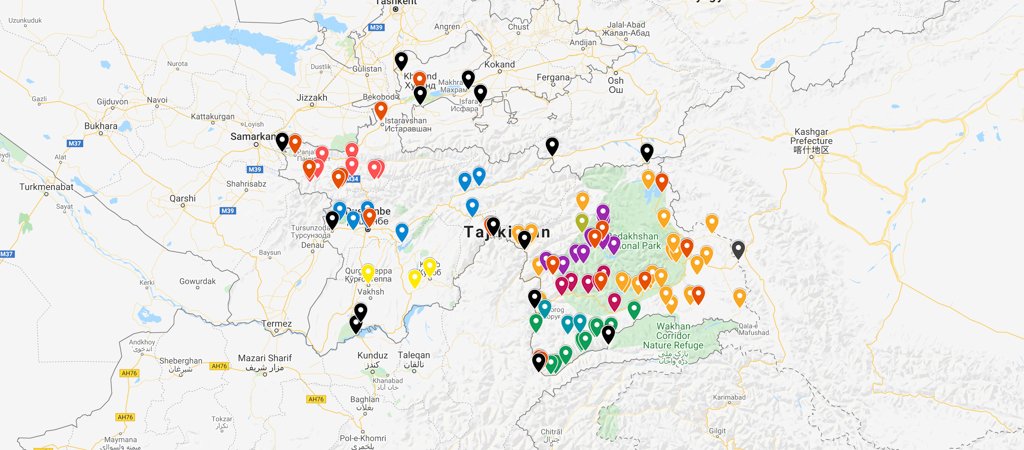
Tajikistan Travel: Top Things To See & Do
Where to start, where to start… Tajikistan is one of the most stunning countries I’ve visited. The mountains and remoteness are usually the main allure for most tourists who travel to Tajikistan. Here are a few popular adventures:
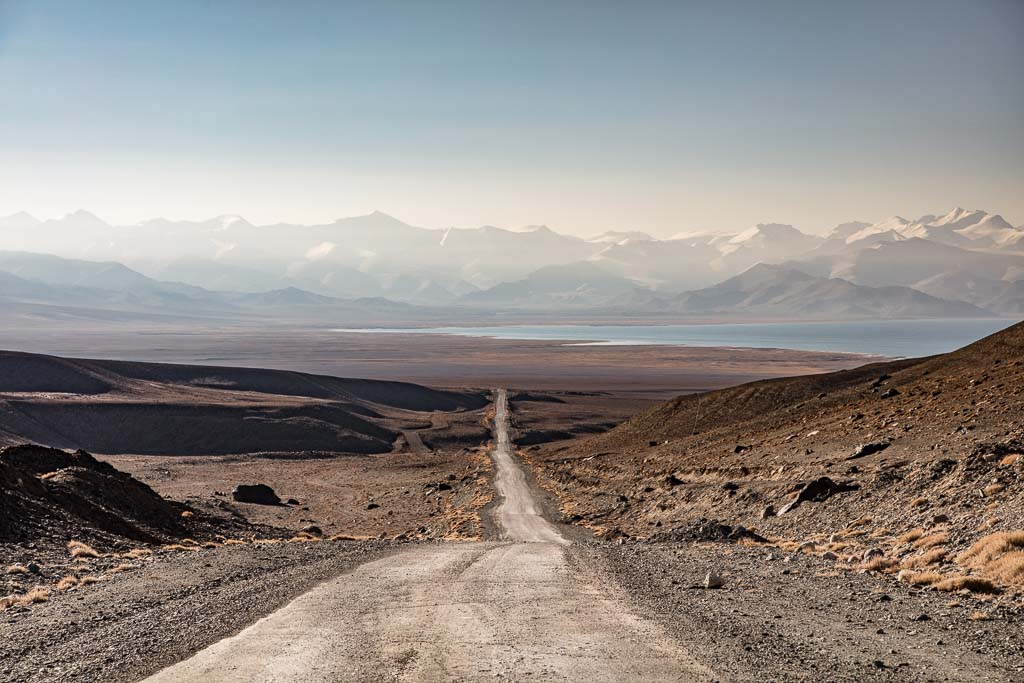
The Pamir Highway (M41)
The Roof of The World or ‘Bam-i-Dunya’ as the Pamiris call it.
Note that there is extensive construction happening on the Pamir Highway in summer 2023! The roadwork is happening between Qala i Khumb and Khorog and is causing major delays, so it’s adviseable to split the Dushanbe-Khorog jounrye into two days, spending a night in Qala i Khumb.
The Pamir Highway is the most popular reason people come to Tajikistan. This is the mother of all road trips.
The Pamir Highway actually extends from Mazar i Sharif, Afghanistan, makes a quick bend into southeastern Uzbekistan, traverses Tajikistan from west to east to north, and then terminates in Osh, Kyrgyzstan (there are arguments as to the beginning and end of the highway though).
The main stretch of the Pamir Highway most tourists travel on is between Dushanbe and Osh. This road trip will take you through high altitude passes, Pamiri and Kyrgyz villages, jagged mountains, crystal clear lakes, and even give you glimpses into the Pakistani Hindi Kush and rural northern Afghanistan just a mere few meters across the Panj River. It also provides access to many treks into the Pamirs ranging in difficulty from easy to hardcore mountaineering.
Expect to pay in the range of 0.70 -0.90 USD per kilometer for a Landcruiser or Pajero with a driver. On my first trip to Tajikistan I chose to travel by private car hire (I wanted to really get the most out of my Pamir Highway adventure, little did I know I’d be back yearly). The driver, Khorasan I ended up arranging to get me from Dushanbe to Khorog from Hello Hostel was absolutely lovely, so once we arrived in Khorog and he offered me a generous $0.70 per kilometer off the starting gate to take me from Khorog to Osh I immediately took him up on it.
I did numerous side trips and ended up racking up 1,500 km between Khorog and Osh so my grand total came to $1,050 USD. If you were to drive straight from Khorog to Osh it’s about 730 km, which would be substantially cheaper than what I did.
You can also cut down on costs if hiring a private 4×4 by putting a note up on the board at the PECTA office in Khorog’s City Park (Pamir Eco-Cultural Tourism Association), or even contacting them via e-mail and arranging a group of you to go in on a 4×4 to bring down the cost. You can also essentially do the same thing in Osh and Murghab if you are headed in the opposite direction. A great place to check to find other travelers is on the Caravanistan Forum.
The cheapest way to do this trip would be of course cycling (most the travelers I met in the Pamirs were cycling it), or walking if you’re really determined (there was one man walking the road when I was there). If a private 4×4 even split amongst travelers is out of your budget and you aren’t up for a looooong bike ride or walk, the next cheapest option is to go by means of shared taxis.
Shared taxis will be a fraction of the cost of a Landcruiser of Pajero. However, you sacrifice the freedom of stopping every kilometer to take a photo and the possibility of being ‘stuck’ in a place for a few days until you can arrange the next leg out.
It is possible to make the trip between Dushanbe and Khorog in 3 days, but why? Most who travel the highway making side trips and treks will take around 9 days. For those really wanting to see the area, a month can even not yield enough time.
I personally have spent 2 weeks along the Pamir Highway in 2016, and over 4 weeks in 2017, and yet there is still a lot I haven’t seen in the Pamirs and GBAO region.
If you need help planning and budgeting your Pamir Highway adventure go check out my Pamir Highway Guide. If you want help curating the perfect itinerary, check out my 10 day Pamir Highway itinerary.
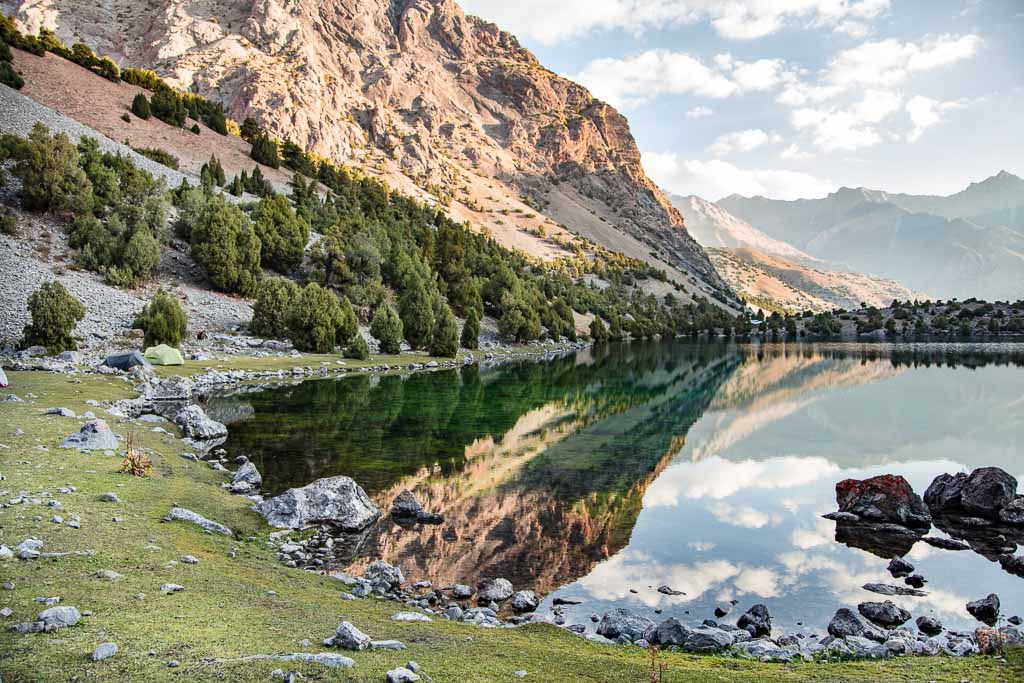
Trekking in the Fann Mountains, Haft Kul & Yagnob Valley
The Fann Mountains are the best trekking destination you’ve never heard of. With many jagged peaks, stunningly beautiful crystal clear lakes, glacially carved valleys, and a decent network of homestays to experience rural Tajik culture and life it’s easy to see why the Fanns are the second most visited part of the country. Treks range from easy to extremely difficult ascent to summit 5000+ meter peaks.
The Fanns are located in northwestern Tajikistan, the main jumping-off points into the Fanns is the small city of Panjakent. For those wanting to combine trekking in the Fanns with the historical Silk Road city of Samarkand across the border in Uzbekistan, it became easy yet again with the re-opening of the Panjakent-Samarkand border crossing in 2018.
Artuch Base Camp can be reached by shared taxi or minibus from Panjakent, and Panjakent can be easily reached by shared taxi and minibus from Dushanbe, Khujand, Sarvoda, Ayni, and Samarkand. The popular and easiest to access trek in the area is the Seven Lakes of Marguzor (the Haft Kul). The lakes can easily be reached by shared taxi and minibus from Panjakent. Note that your passport and e-visa will be checked at the checkpoint near Shing Village on your way down to the lakes.
Popular treks and sites in the Fanns include the Haft Kul, the Lakes Loop Trek, Iskanderkul, Kulikalon Bowl, Chimtarga Pass, Dukdon Pass, Lake Alovaddin, Bolshoi Allo Lake, and Kaznok Pass. To find out more about the Fanns and arrange homestays and guides, visit ZTDA (Zerafshan Tourism Development Association). To learn more about traveling in the Fann Mountains and trekking recommendations check out my Fann Mountains Travel Guide, Haft Kul Trekking Guide, Chimtarga Pass Guide, and Lakes Loop Trekking Guide.
The Yagnob Valley is much less visited than the Fann Mountains albeit being not very far away. The draw here is to visit villages where people have lived traditionally for hundreds of years and still speak the ancient Sogdian language. The Yagnob valley can be reached by a shared taxi from Sarvoda to Margib.
Margib is the jumping-off point for trekking into the Yagnob Valley. Read my Yagnob Valley Trekking & Travel Guide that was recently written after my visit in 2019. ZTDA can help arrange transport, guides, porters, homestays, and more.
Need more hiking ideas? Read the 10 best treks in Tajikistan
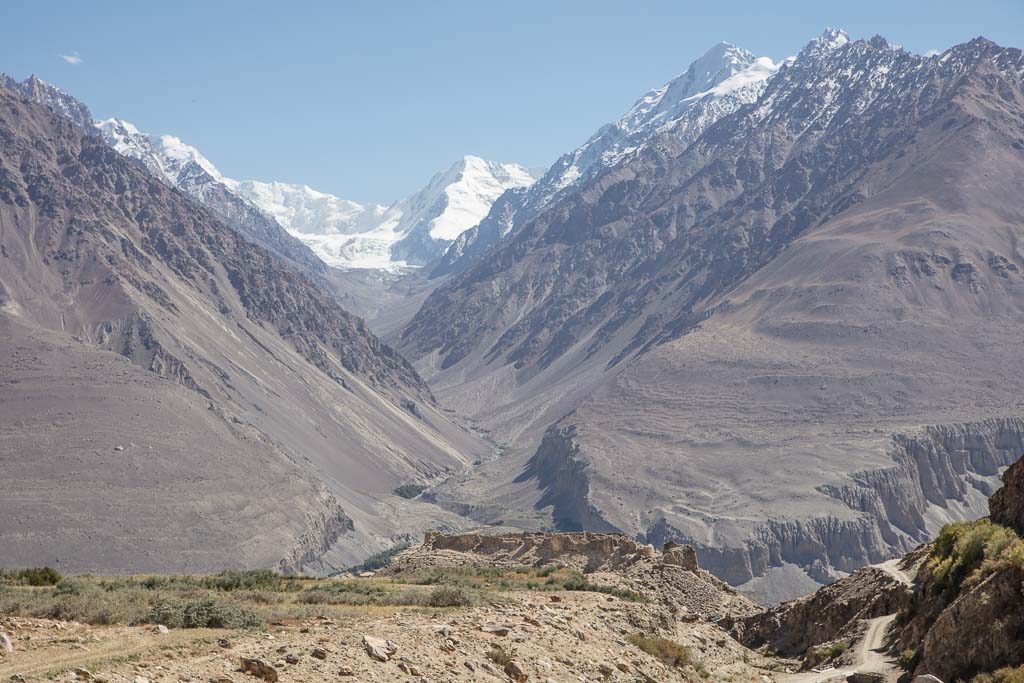
The Wakhan Valley
Many include the excursion through the Wakhan Valley as an alternative route on their Pamir Highway trip. From Khorog, rather than follow the true M41 through the Ghunt Valley toward Jelondy and Bulunkul, you will head south to the beautiful Tajik Wakhan Valley and meet back up with the M41 via the Khargush Pass near Bulunkul.
The Wakhan Valley follows the Afghan border through some truly amazing scenery with glimpses of the ice-capped Hindu Kush forming the natural border of Afghanistan and Pakistan across the Pamir River, which forms the natural border between Tajikistan and Afghanistan.
You will pass through the picturesque villages of Ishkashim, Namadgut, Darshai, Yamchun, Yamg, Vrang, Zong, Langar, and finally Ratm as you travel along the valley. At every turn, there are sights your eyes will be glued to, but make sure to stop off at Garam Chashma (hot spring), Qaaqa Fortress, Darshai Gorge, Yamchun Fortress, Bibi Fatima (hot spring), Vrang’s Buddhist Stupa, and so many more.
Find more information on traveling in the Wakhan and more check out the Tajik Wakhan Valley Guide.
Ishkashim is also the jumping-off point and the border crossing into the Afghan Wakhan Corridor. In 2017 I did make the visit across into the Afghan Wakhan. Check out my article on what it was like to travel as a solo woman in the Afghan Wakhan, learn how to get an Afghan Visa in Khorog, and see photos from my travels in the Afghan Wakhan & Great Pamir Mountains.
Ishkashim is also home to the popular cross-border Saturday market where Tajiks and Afghans come to buy and sell goods with each other, which takes place on an island in the Panj River (technically on the Afghan side). The main reason tourists visit the market is for the bragging rights of saying they’ve been to Afghanistan, however without having to shell out big money for the visa. The market was sporadically open in 2016 and was closed for 2017 as far as I am aware.
If you happen to be in the area and the day lines up, ask locals if it may be on, but as of right now, do not expect it to be.
Got the Afghan Wakhan on your mind?

Bartang Highway & Valley
This is probably the wildest ride you’ll have in Tajikistan and is a popular alternative for traveler and cyclists to the Pamir Highway. This road cuts through the super remote Western Pamir along the Bartang River Valley. The Bartang Highway links up with the Pamir Highway at the village of Rushan (50 km north of Khorog) in the south, and near Karakul in the north.
The best time of year to travel the Bartang Highway is from mid-July until mid-September. Earlier in the spring, the road is usually inaccessible due to the river running high and landslides and in the later fall because of heavy snow.
The most visited stretch of the Bartang Highway is just a few kilometers up from Rushan where travelers get dropped off at suspension bridge and make the short trek to the beautiful village of Jizeu.
Other excursions in the Bartang Valley include the Khafrazdara Valley/Grum Grijmailo Glacier, experiencing the remote life of the Bartangi people (they’re famed for their legendary hospitality), Lake Sarez, trekking in Basid & Badara, visiting remote sites between Gudara & Kök Jar, and trekking beyond Jizeu to the Ravmed Valley.
Learn more about visiting the Bartang Valley in the Bartang Valley Guide. I also have articles on How to Visit the Khafrazdara Valley, How to Visit Lake Sarez, and the Jizeu trek.
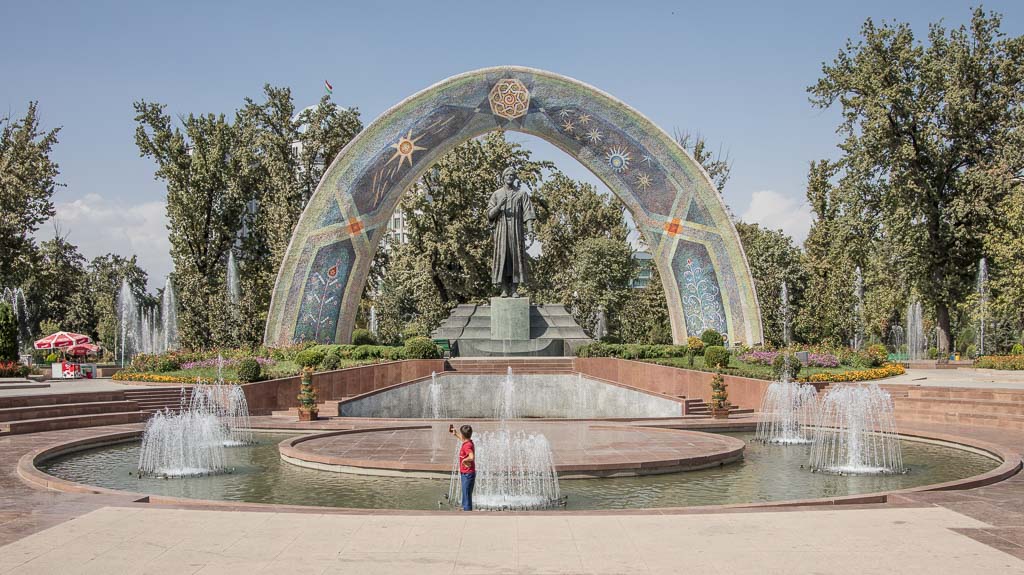
Dushanbe
This is the bustling capital of Tajikistan and a likely entry point for those flying into the country. There are a number of attractions around the city including the world’s second-tallest flagpole, the world’s largest teahouse, Mehrong Bazaar, Rudaki Park, and more.
Check out the Dushanbe City Guide for more information on everything you need to know before visiting Dushanbe. Looking for the best places to eat in Dushanbe? Check out my post: Best Restaurants in Dushanbe.
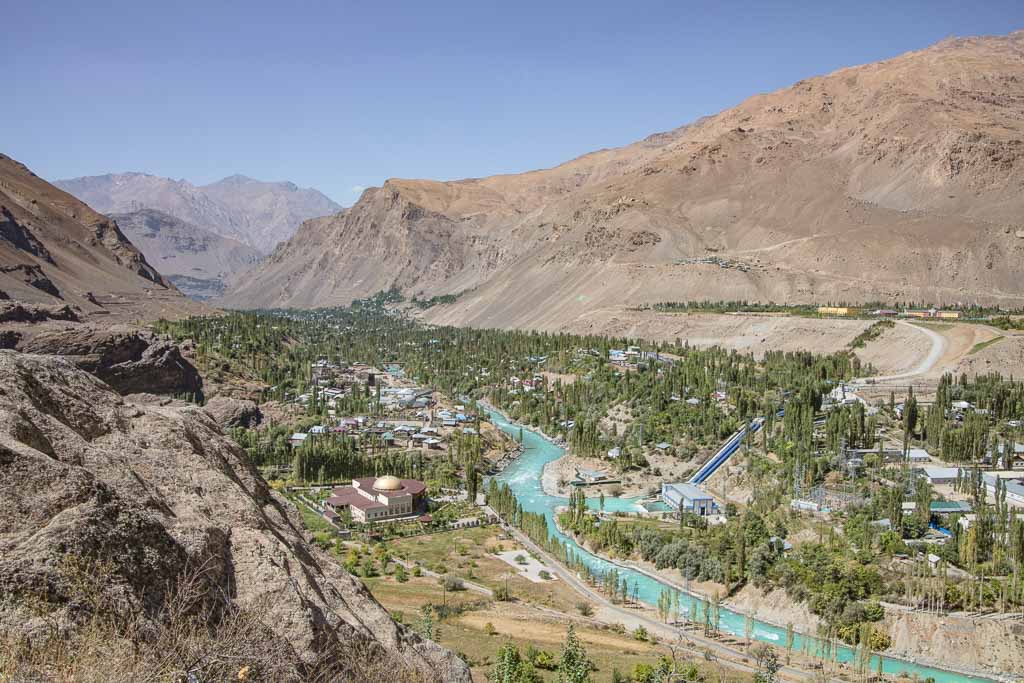
Khorog
This is the largest city in the GBAO region and home to most of Tajikistan’s Ismaili population- Ismailis are Shia and known for their very progressive interpretation of Islam. Khorog is a great jumping-off point for many adventures in the Badakhshan, making arrangements if you plan to travel across the border into Afghanistan, getting an Afghan Visa, and a nice place to relax between adventures in the Pamirs.
Make sure to spend an afternoon at Khorog’s Central Park, where you’ll find a large swimming pool, carnival, walking paths, a couple of chaikhanas, and home to the PECTA office. Other sites to visit include the Botanical Garden, Aga Khan Foundation, and the Central Asia University.
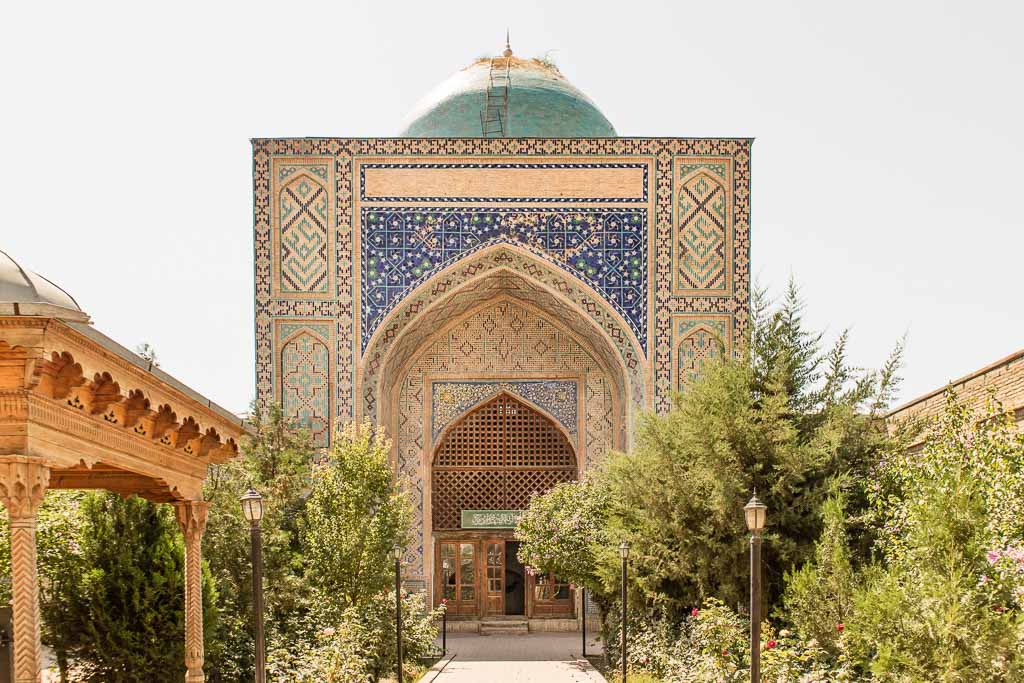
The Tajik Fergana Valley
Khujand is the main city in the Tajik Fergana Valley with enough sites to keep you busy for a couple of days. Make sure to visit the bustling Panshanbe Bazaar, Sheikh Massal ad-Din Mausoleum & Complex, the ancient Citadel & Kamoli Khujandi Park, and the tallest Lenin Statue still standing in Central Asia.
Istaravshan is another popular stop in the Tajik Fergana Valley, located only about 90 minutes by shared taxi from Khujand. Istaravshan has several lovely mosques and madrasa without the large crowds that Samarkand and Bukhara draw on the other side of the border. The attractions here include Mug Teppe, Shahr-e-Kuhna, Hazrat-i-Shah Mosque, Hauz-i-Sangin Mosque, Sary Mazar, Chor Gumbez, and Abdullatif Sultan Madrasa.
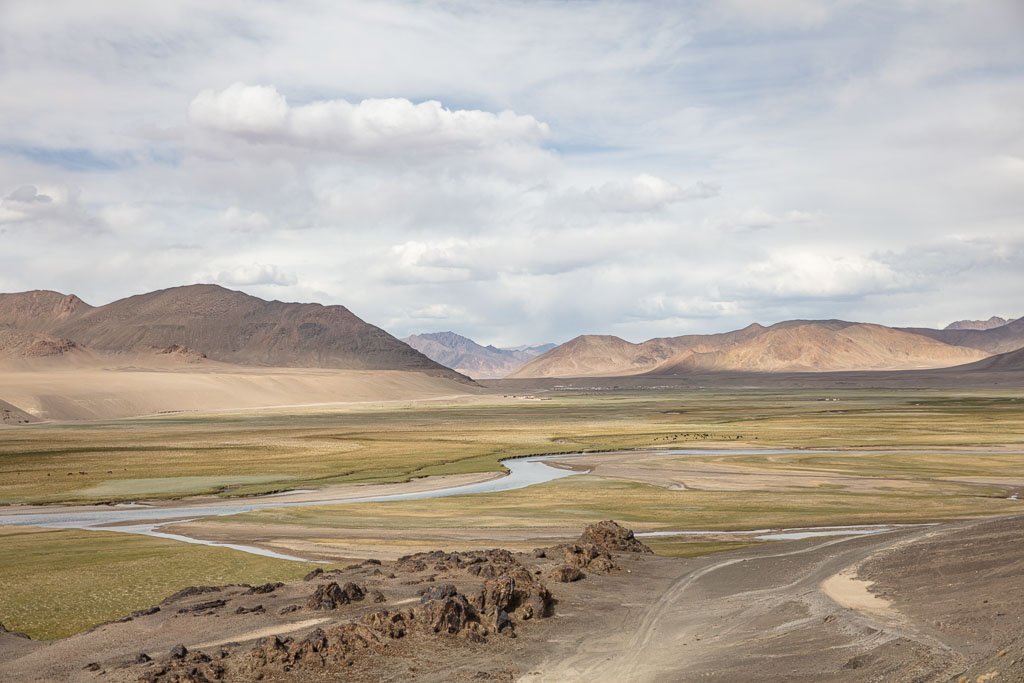
Murghab
You’ve officially made it to the wild wild East. Beautiful surrounding valleys, but Murghab isn’t the most picturesque village/town. A great jumping-off point for adventures into the Eastern Pamir– Pshart Valley, Rang-Kul, Madiyan Vally, Shaimak, and more.
For those headed for the Chinese border at Qolma Pass, you will likely spend a night in Murghab before or after crossing.
Zorkul
Part of the Zorkul Nature Reserve (I unfortunately still have not visited here). Known for its surrounding green valley and remoteness. On the Afghan border near to the Khargush Pass and Keng Shiber.
You do need a Zorkul permit to visit which can be obtained at the PECTA office in Khorog (see the previous section on permits).

Lake Sarez
This large lake sits smack in the middle of Tajikistan and only exists because of disaster. In 1911 a magnitude 7.4 earthquake shook down a mountain face that crushed the villages of Usoi and Sarez, naturally creating the Usoi Dam. This dam blocked off the Murghab River and began to fill the valley.
This is a beautiful lake in remote Tajikistan, but you should have a guide and permit before visiting. Learn more about how to get to Lake Sarez in my Lake Sarez Guide.
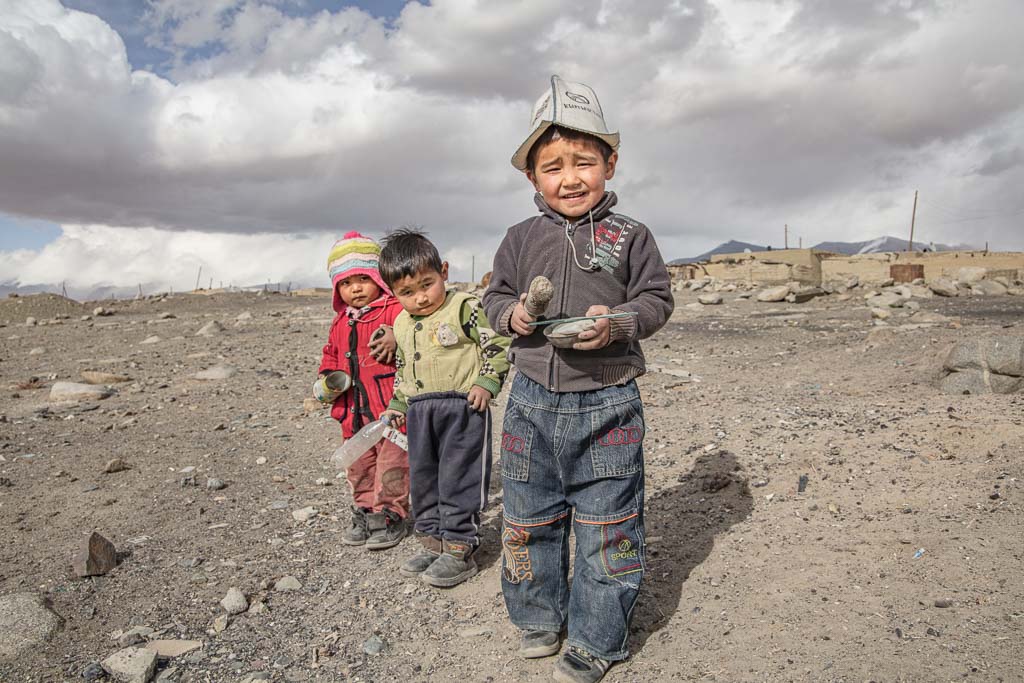
Karakul
Just north of the Ak-Baital Pass is Karakul (sometimes spelled Qarakul), Tajikistan’s largest lake sitting alongside the village of the same name. Karakul is believed to be a crater formed by a meteor impact about 10 million years ago, that is now a salt lake, but still freezes in the winter.
There are a handful of homestays here in Karakul where you could break up your Osh to Murghab journey. Attempts are being made to declare Karakul the highest navigable lake in the world, beating out Lake Titicaca in Peru/Bolivia.
Where To Go In Tajikistan
Dushanbe & Around
Dushanbe and the surrounding areas are often overlooked by most travelers to Tajikistan that are headed to the country for wild mountain adventures in the Pamirs & Fanns. The Rasht Valley and many of the sites around Dushanbe are popular with expats, especially on the weekends.
Dushanbe
Dushanbe is the capital and largest city in Tajikistan. Must-see highlights include Bayrak (the world’s second-tallest flagpole), Rudaki Park, Mehrong Bazaar, Kohki Nowruz, Mevlana Yakub Charki Mosque, Victory Park, and more.
Dushanbe is a great place to relax between adventures in the Fanns and Pamirs as well. Read more about what to do, where to stay, and what to eat in my Dushanbe City Guide. Shop Dushanbe accommodations here.
Plan your visit to Dushanbe and where to eat in the city
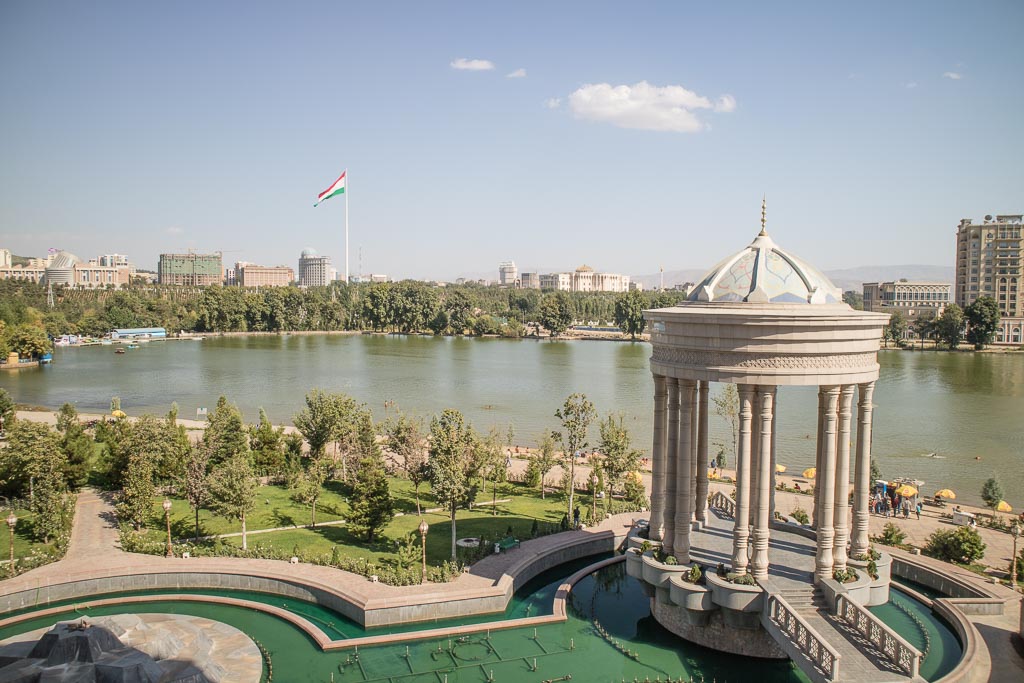
Hisor
Hisor is one of the more popular half-day trips from Dushanbe. Travelers come here to explore the Fortress of Hisor and Hisor Caravanserai, as well as the 16 & 17th-century madrasas at the fortress that house a museum. Learn more about how to visit Hisor here.
How to visit Hisor Fort on public transport
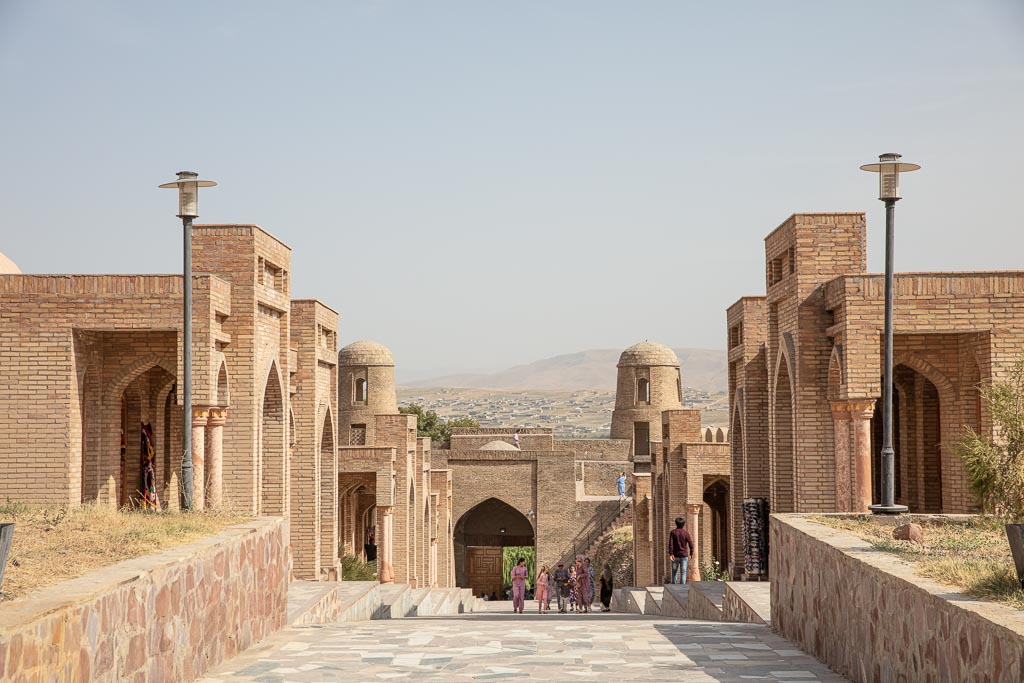
Varzob
Just a short drive north of Dushanbe Varzob Valley is a great day trip away from the bustle of Dushanbe. Make sure and trek out to Gusgarf Falls On your visit. Read more on how to get to Varzob Gorge & Gusgarf Falls here.
Timur Dara Lake
This beautiful lake sits in the Karatag Valley near the villages of Shahrinav & Hakimi about 45 km west of Dushanbe at the southern fringes of the Fann Mountains. This trek can be done as a long day trip, or as a multi-day trekking trip in the Karatag Valley. I finally made a day trip from Dushanbe out to Timur Dara in August 2019, well worth the effort.
Read more about getting to Timur Dara Lake here.
Read the Timur Dara Trekking Guide and start planning
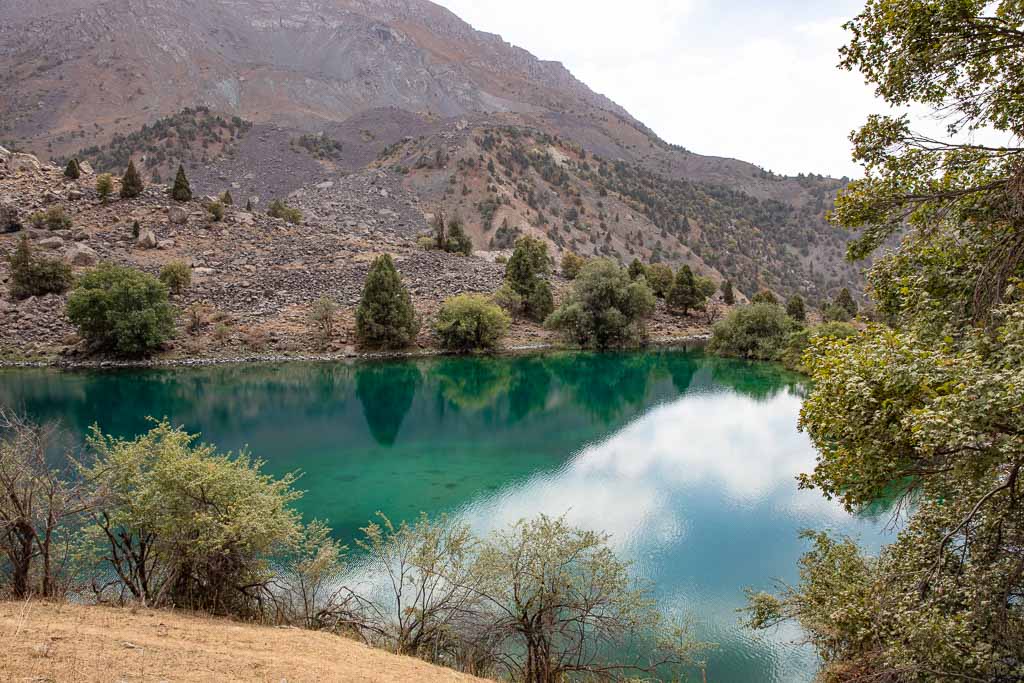
Nurek
Nurek Dam & Reservoir sits about 80 km southeast of Dushanbe along the route most start the Pamir Highway trip from. Nurek Dam is the second highest manmade dam in the world, blocking of the Vakhsh River. Renting a houseboat and lazing around in the water at the Aqua Club are popular excursions from Dushanbe. Read more here.
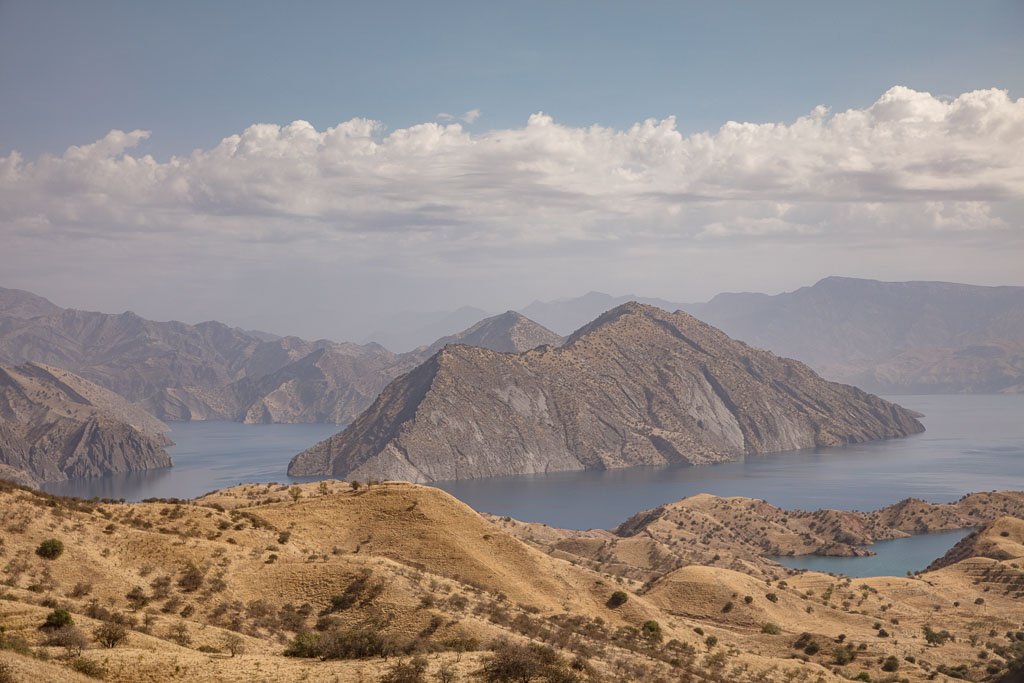
Rasht Valley
Garm
Located in the Rasht Valley (also called Karotegin Valley) in north-central Tajikistan. The main draw to Garm is trekking in this little-visited part of the country. Treks can be arranged that will take you on a loop around from Hazor Chashma Village. Caravan Tours can arrange trips to visit the Rasht Valley.
Jafr
Located along the main road between Garm and Jirgatol is the picture-perfect village of Jafr. This is one of the most scenic parts of the Rasht Valley Road. One of the main reasons to come to Jafr is to meet Mirzosho Akabirov. Mirzosho has an amazing botanical garden with exotic fruit trees that he has spent years grafting to grow various fruits.
Tavildara
Tavildara is a larger town along the Pamir Highway for those taking the Northern Route between Dushanbe and Qalaikhumb. Nearby to Tavildara is the Sagirdasht Pass that is typically closed from October to May due to snow.
Jirgatol
Jirgatol is a small town and the last town along the Rasht Valley Road before hitting the (closed to foreigners) Karamyk border crossing. The main appeal to Jirgatol is to head to nearby Jelondy to take on the Gardan i Kaftar hike and trek across the Peter the First Range to a village named Langar, not too far from Tavildara. Jirgatol is also the jumping-off point for those taking on the climb up Peak Somoni.
Plan your visit to the Rasht Valley: The Rasht Valley Travel Guide
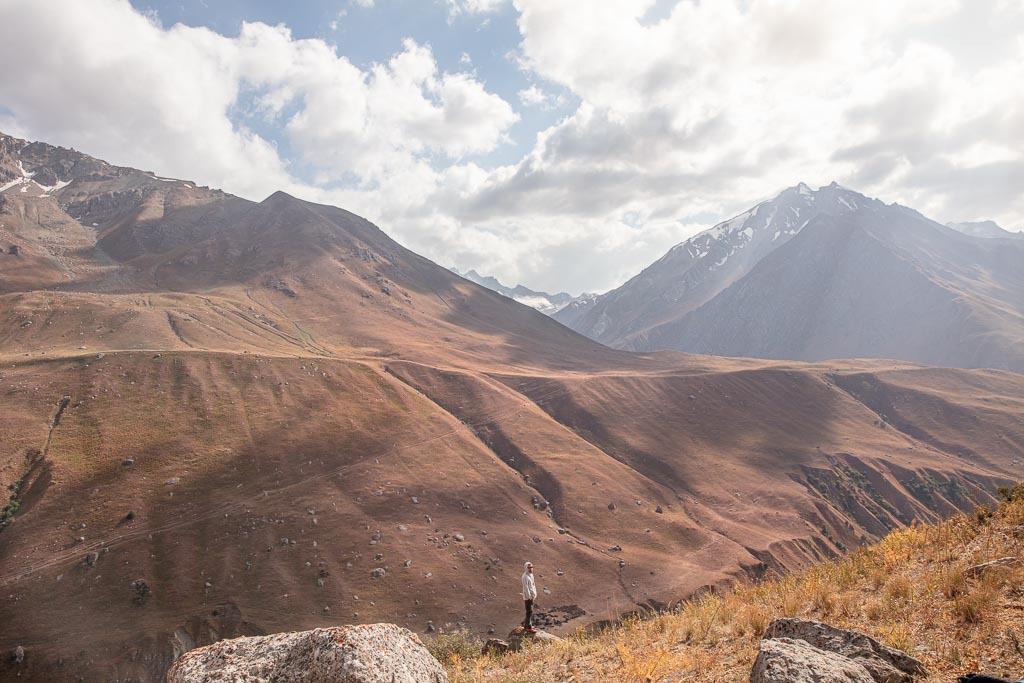
Gorno Badakhshan Autonomous Oblast
The Badakhshan, or commonly just called by its acronym GBAO accounts for about half of Tajikistan’s landmass. With that said, the GBAO is desolate, with only 3% of Tajik citizens calling it home. The GBAO is the most popular draw for tourists wanting to take on the famed Pamir Highway.
Qala i Khumb
Qala i Khumb feels like a great oasis for those making the long journey between Dushanbe and Khorog. I highly recommend splitting the trip into two days, by spending the night in Qala i Khumb. Qala i Khumb is small and easily walkable with a few shops, restaurants, and accommodations.
I recommend spending the night at Roma Jurayev Guesthouse that sits right on the river. Run across the street for a riverside dinner at the Oriona Chaikhana (they serve wine, you’re welcome). Shop other Qala i Khumb accommodations here.
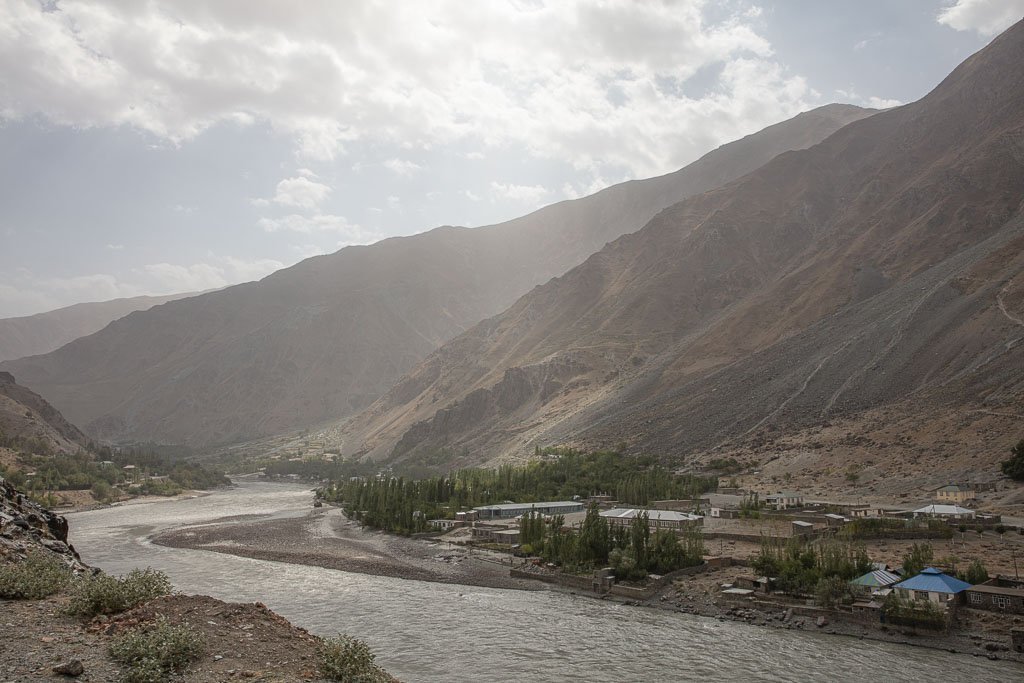
Check out my travel guide to Qala i Khumb, especially if you plan to spend any time there
Vanj
Continuing along the Pamir Highway toward Khorog brings us Vanj. Vanj is the jumping-off point for explorations of Fedchenko Glacier, the world’s longest non-polar glacier.
Head east off the M41 on the Vanj Valley Road to Poi Mazar. From Poi Mazar the nose of the glacier is a long day hike there and back but can be split into an overnight trip. There are two homestays along the Vanj Valley the can be booked through Pamir Top.
Rushan
Rushan is located about 65 km north of Khorog and is the jumping-off point for further explorations into the Bartang Valley. If planning to spend the night in Rushan before departing into the Bartang Valley, Mubarek Homestay comes recommended (+992 934052304).
Bartang Valley
The Bartang Highway is a wild adventure for anyone wanting to explore into the remote Bartang Valley in the Western Pamir. The most popular excursion along the Bartang Highway is the short and gentle trek to the beautiful village of Jizeu. From KM 23, cross the suspension bridge across the Bartang River and follow the trail for about 2 hours to reach the lower village of Jizeu.
7 of the 14 homes in Jizeu act as homestays and will gladly take you in. I stayed at Lola Homestay when I visited Jizeu in 2016 and had a wonderful time there.
But the Bartang Valley is more than just Jizeu. Two of my favorite treks begin from the Bartang Valley. The trek to the wildly remote Khafrazdara Valley & Grum Grijmailo Glacier begins from the quaint village of Pasor, as well as the start of the journey to Lake Sarez from the village of Barchidev.
Other stops along the Bartang Highway include trekking around Basid & Badara, the adorable village of Savnob, going beyond Jizeu into the Ravmed Valley, and more. Read up more on travel in the Bartang Valley in my Bartang Valley Travel Guide.
Everything you need to know before taking on the Bartang Highway
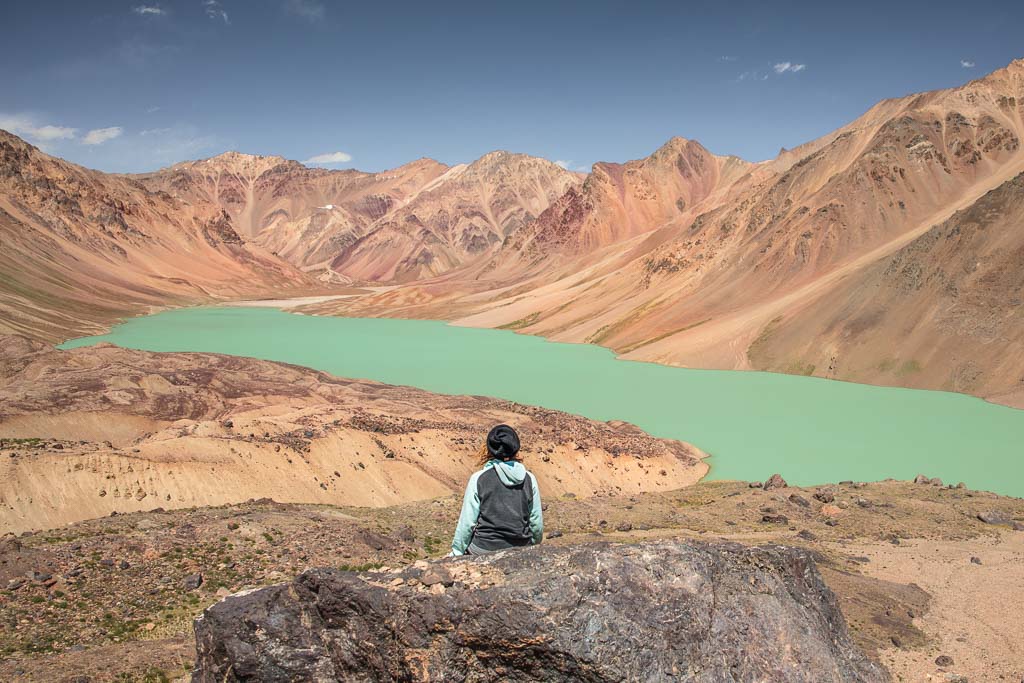
Khorog
Khorog is the only real town you’ll find in the GBAO region, home to just under 30,000 people. It’s a laid-back and fairly liberal town in regards to much of the rest of Tajikistan. The population is largely of Ismaili faith- a Shia branch of Islam. It’s not uncommon to see women and girls wearing knee-length skirts, and the headscarf is less popular.
English is fairly widely spoken as Khorog is a well-educated town in Tajikistan thanks to the Aga Khan Foundation’s efforts. You’ll often find yourself being stopped on the streets by friendly locals wanting to speak English with you. Attractions in Khorog include the City Park, Botanical Garden, and Regional Museum. Khorog is a great place to relax between trekking adventures into the Pamirs.
There are a number of guesthouses, hostels, and hotels in Khorog, so check them out here, and here. For lunch try Nan Melan’s Qurutob, for a cup of coffee, walk over to Cafe Luni, and for dinner head to Dehli Darbar for great Indian food. If you need to stock up on anything head to the busy bazaar.
Plan your visit to Khorog: The Khorog Travel Guide + 6 Things To Do
Gunt Valley
For those wanting to stay on the true Pamir Highway between Khorog and near Jelondy, this is the route. As you head out of Khorog you’ll pass a number of green orchard villages along the sky-blue Gunt River, with some of the most impressive mountain backdrops happening around Dehmyona.
For those wanting to trek the stunning lakes of Bachor, you’ll need to get a minibus to Shazud Village on the Pamir Highway (20 TJS, go to the main taxi stand by the Khorog Bazaar and start asking for Shazud). Once to Shazud ask around for a taxi to Bachor (should cost about 100-120 TJS). From Bachor, the hike takes off toward the east where you’ll eventually run into signs pointing you toward Zarojkul (north, to your left), or Yashilkul (east, straight forward).
To make the loop up to Langar Pass, Uchkul, Zarojkul, back down to Tsaxinkul, and back to Bachor plan for 5-7 days trekking. You can arrange guides and pack animals in Bachor.
Don’t forget to order Jan Bakker’s ebook, Trekking in the Pamirs for a detailed guide on reaching the Mountain Lakes of Bachor. Technically you’re supposed to have a Tajik National Park permit to trek around in this area.
The next attraction off the M41 after Shazud and Bachor is the hot springs at Jelondy. Jelondy is a popular weekend trip for people living in Khorog. Further east of Jelondy you will cross up and over the 4,272 meter Koi-Tezek Pass into moon-like landscapes.
There are some treks that can be done in the Koi-Tezek Pass area, including a summit of 5,700 meter Kyzyldong, one of a handful of non-technical summits you can find in the Pamir.
Further east of Koi-Tezek you will descend to the turn off for Bulunkul and Yashilkul, continuing a little further you will pass by Sassykul and the turnoff toward Khargush Pass and the Wakhan Valley. Continuing east will take you toward Alichur and on to Murghab.
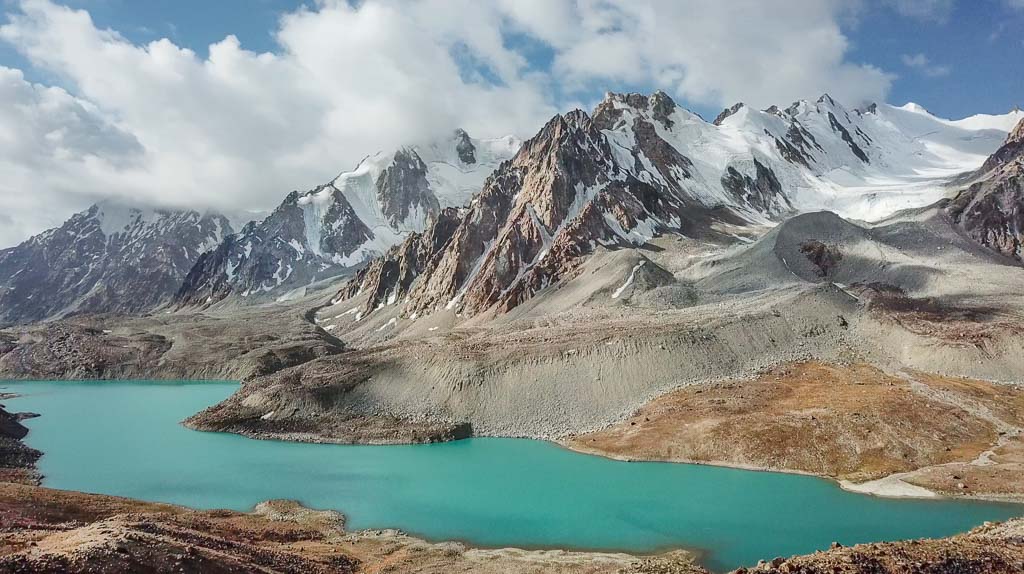
Shokhdara Valley
The Shokhdara Valley runs nearly parallel and in between the more popular Wakhan Valley and Gunt Valley. If you want to explore a lesser-visited stretch of the Pamirs, this is it. Sites to check out along the valley include the ancient shrine in Tandem, the main town of Roshtaqala and the Red Fort it gains its name from, the beautiful lake of Durum Kul, views of Pik Engles & Pik Karl Marx, and up the tough Maisara Pass to rejoin the M41 near Jelondy.
Homestays are available along the valley at Vezdara, Sindev, Shohirizm, Javshanguz, and Bodomara. It is possible to make several treks from the Shokhdara Valley into either the Wakhan Valley or the Gunt Valley. I personally have not traveled along the Shokhdara Valley in my Tajikistan travels yet. For information on some of the treks between the Wakhan Valley and the Shokhdara Valley, click here.
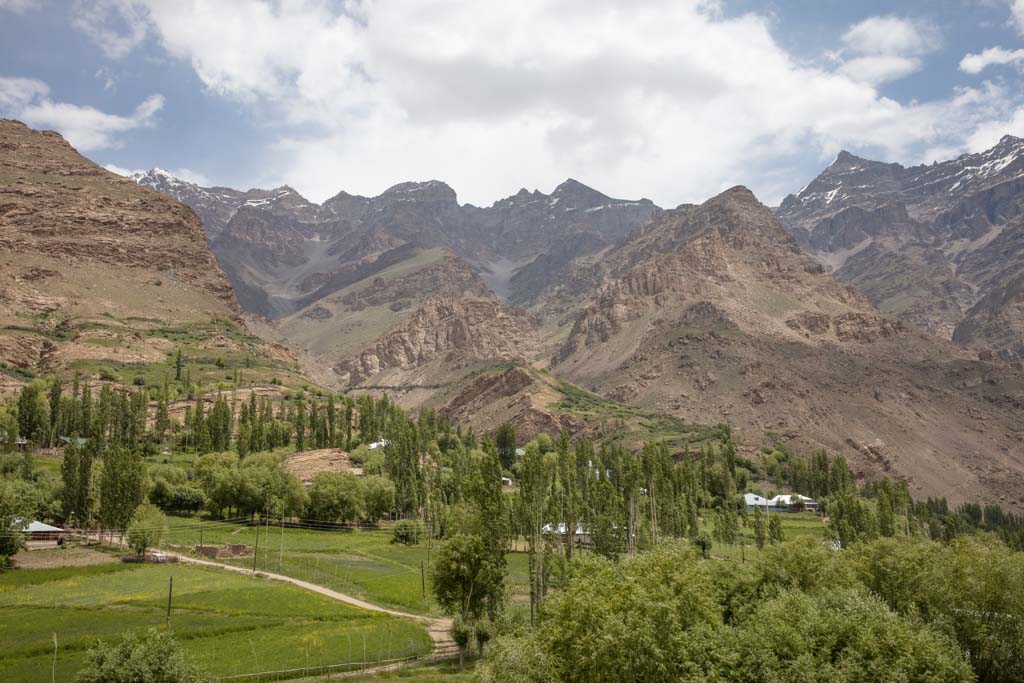
Little-visited but well worth the effort: Plan your traverse of the Shokhdara Valley
Wakhan Valley
The much-talked-about Wakhan Valley is a highlight for many in their travels in Tajikistan. As you twist and turn down the Wakhan Valley road you’ll at times feel so close to the villagers walking the narrow dirt path on the Afghan side of the border just across the river that you could have a conversation with them (hint: you pretty much can!). And the backdrop of the white-capped Hindu Kush Mountains that form the Afghan-Pakistani border.
Popular stops along the Wakhan Valley include the largest village of the Tajik Wakhan Valley- Ishkashim, the Qaaqa Fortress near Namadgut, the trek up to Darshai Gorge, Yamchun Fortress and Bibi Fatima Hot Spring near the village of Vichkut, the Buddhist Stupa in Vrang, the adorable green village of Langar and finally the last scattering of houses up the hill at the village of Ratm.
A great trek to try in the Wakhan is the Pik Engles Meadow Hike that can be done from Zong to Langar or vise-versa.
If you’re planning to visit the Wakhan Valley, make sure and read my Tajik Wakhan Valley Guide.
Before you go: The Tajik Wakhan Valley Guide
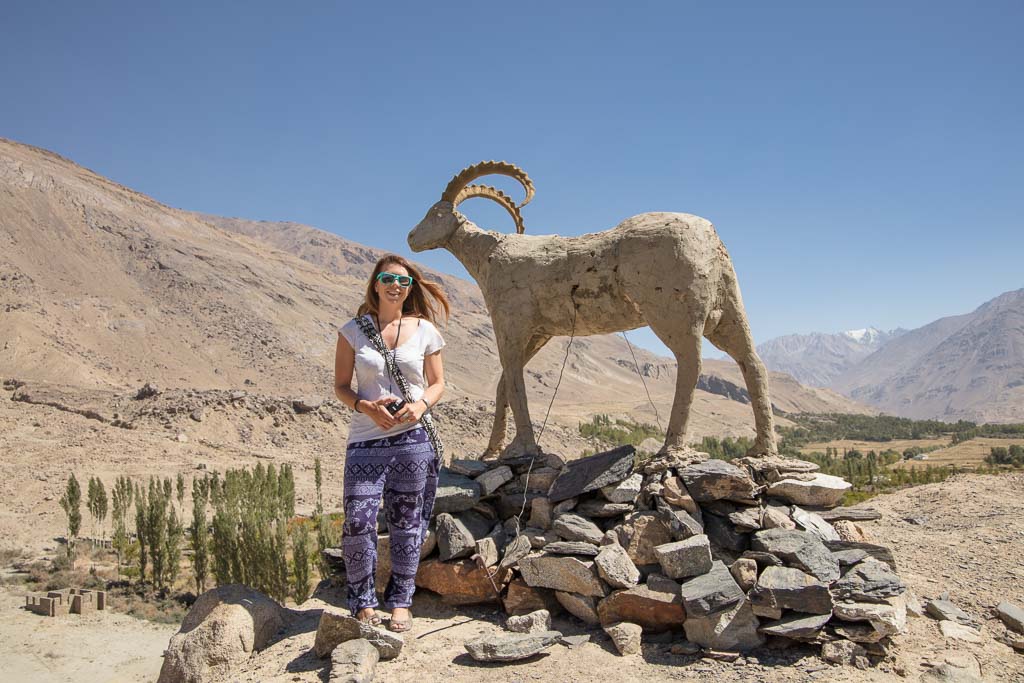
Zorkul
Zorkul is a large lake and nature reserve that sits right on the Afghan border near to the Khargush Pass and Keng Shiber. You do need a Zorkul permit to visit which can be obtained at the PECTA office in Khorog. North of Zorkul back towards Shakhty are grand Neolithic cave paintings. There are several treks that can be done in the Zorkul area.
Bulunkul & Yashilkul
Bulunkul & Yashilkul sits 14 km north off the M41. Bulunkul is allegedly the coldest place in all of Tajikistan with winter temperatures that can drop below -40 C.
There are a couple of homestays in the small scattering of whitewashed buildings that comprise the village of Bulunkul. Bulunkul is still a good option to spend a night as sunrise on the lake is a sight to see with perfect reflections of the surrounding mountains. The wind usually picks up later in the morning, so you’ll want to get an early start for perfect reflections.
Another 4 km away sits Yashilkul which translates out to green lake. Yashilkul is much bigger than Bulunkul in size and the lake is more of a blue color than the green it’s named after. From Yashilkul it’s possible to trek to Langar Pass and the mountain lakes, or straight west to Bachor.
Technically you are supposed to have a Tajik National Park Permit for visiting Yashilkul, however, I’ve never been asked for it or seen a ranger out there.
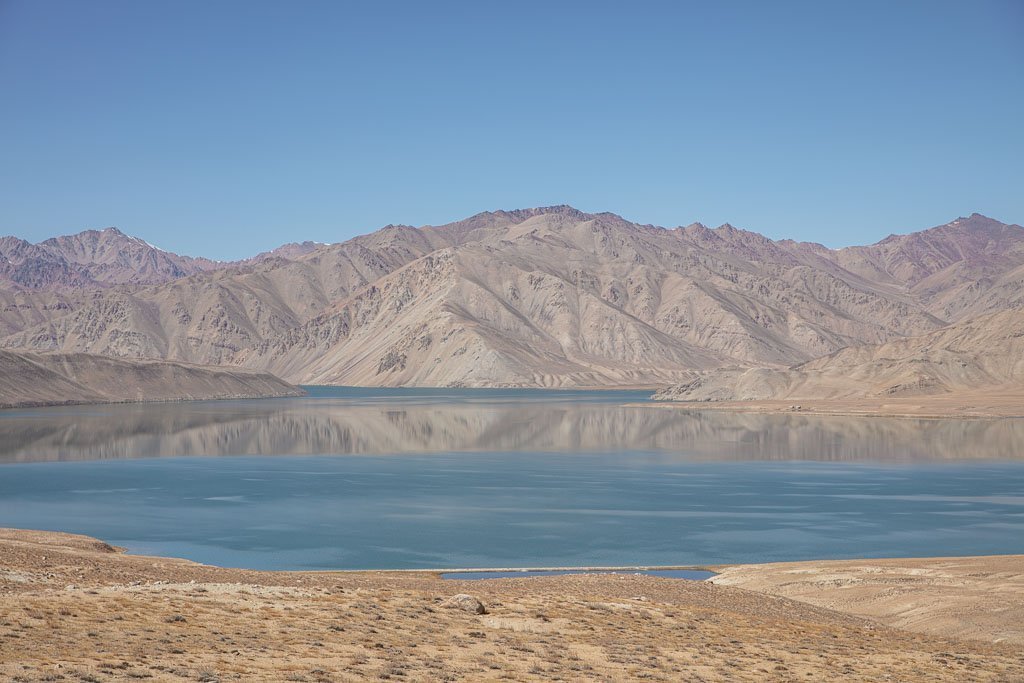
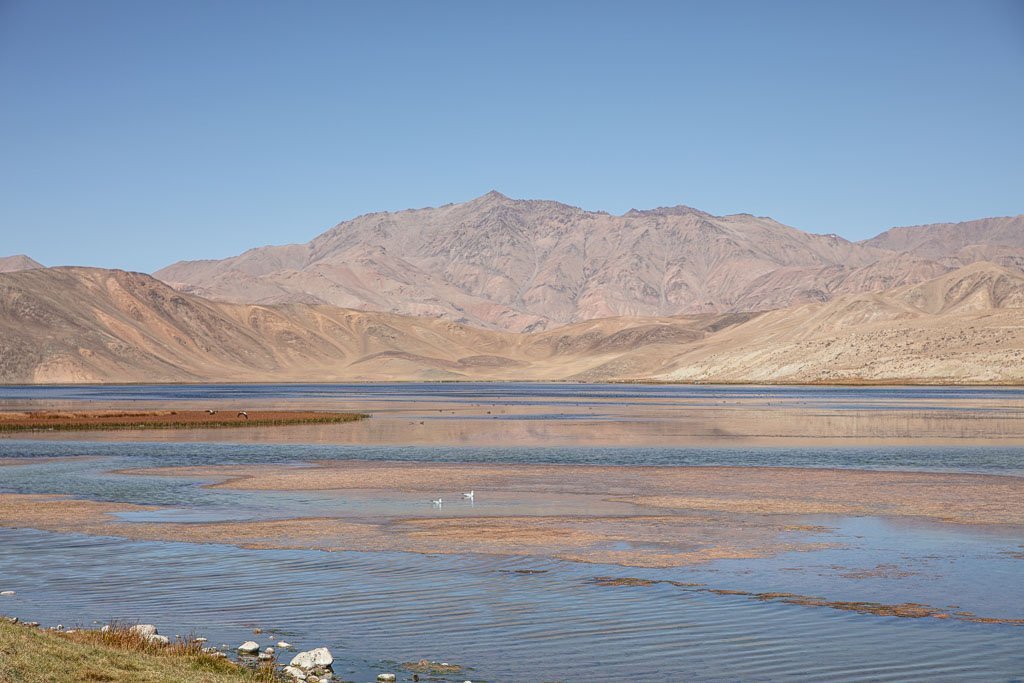
Alichur
If you’re traveling the Pamir Highway from Dushanbe, this is where you’ll notice things become more obviously Kyrgyz. Alichur is a village of several white-washed rectangular buildings just off the highway of predominantly Kyrgyz families. There are several guesthouses here marked with signs as well as stolvonaya- meaning canteen.
The locals in Alichur are really friendly and will likely come to hang out while you wander the village. There are many yurts that sit just off the highway around Alichur and along the highway nearby, and you’ll likely even see people out herding yaks in the pasture.
There is one guesthouse listed on booking.com, but otherwise, there are several around the village. I personally have stayed at Rahima Doronshoeva Homestay (+992 908482612 or +992 931065658) when I spent a night in Alichur, and eaten a couple of times at the canteen on the east end of the village (it’s usually full of truckers headed down from Kashgar to Dushanbe).
I recommend spending the night in Alichur so that you can visit the nearby Ak-Balyk pond in the morning just east of Alichur. Ak-Balyk means white fish in Kyrgyz, the small pond is filled with unbelievably clear and turquoise water best viewed in the morning before the wind picks up and you can see perfect reflections of the mountains to the south dazzling in it.
Another highlight of Alichur is the great stargazing you’ll have right outside your guesthouse.
As far as must-see sights in Alichur there aren’t many. There is a mosque in the middle of the village, and there are a few treks that can be started from Alichur to Zorkul and toward the Bazardara Valley.
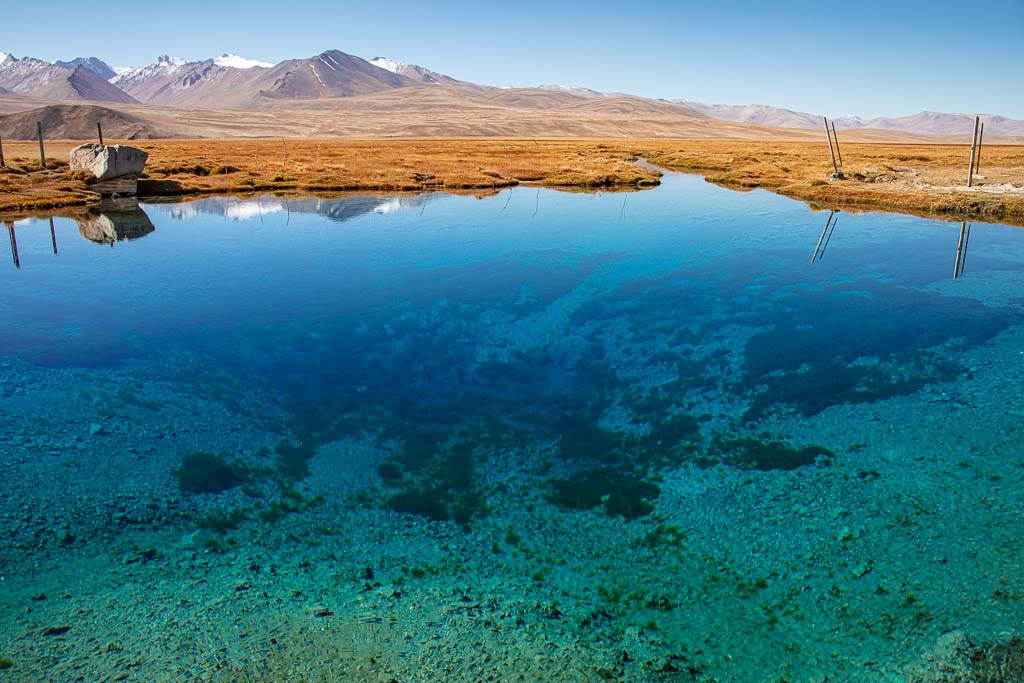
Jarty Gumbez, Keng Shiber, Kara Jilga & Bash Gumbez
To reach Jarty Gumbez, Keng Shiber, Kara Jilga & Bash Gumbez you will need your own transport (ie: 4×4 hire). Jarty Gumbez and Keng Shiber are Marco Polo sheep hunting camps that are possible to visit in the summer months (May-October).
Jarty Gumbez is located down a dusty dirt track south off the Pamir Highway at Povorot. Head south along the Afghan border between high altitude peaks to search for Marco Polo sheep (I saw hundreds of them out here). There is a very nice guesthouse at Jarty Gumbez with heated rooms and a hot spring, the family that runs the guesthouse and hunting camp, as well as the hunting guides that live out here, are incredibly friendly.
Keng Shiber is another hunting camp located just north of Zorkul, which can be reached from either the track that leads east from the Khargush Pass toward Zorkul and onto Shaimak or from the track that heads south from Bash Gumbez. Both Jarty Gumbez and Keng Shiber are great places to head for those wanting to photograph the milky way.
Nearby sites to Jarty Gumbez along the dirt tracks back toward the Shaimak-Murghab Road is the Ak Bura Meteor Crater, and the Shor Bulak observatory that is no longer in working order and allegedly closed to foreigners (I’ve been there and there was no one else there, and at that point, I did not know it was closed to foreigners).
Kara Jilga is another great place to head in this area. There is usually a yurt camp in the area with beautiful Wakhan scenery all around and the turquoise lakes of Kazankul & Jigitkul. West from Kara Jilga, you’ll have awesome views of Zorkul.
Read more in the Eastern Pamir Travel Guide
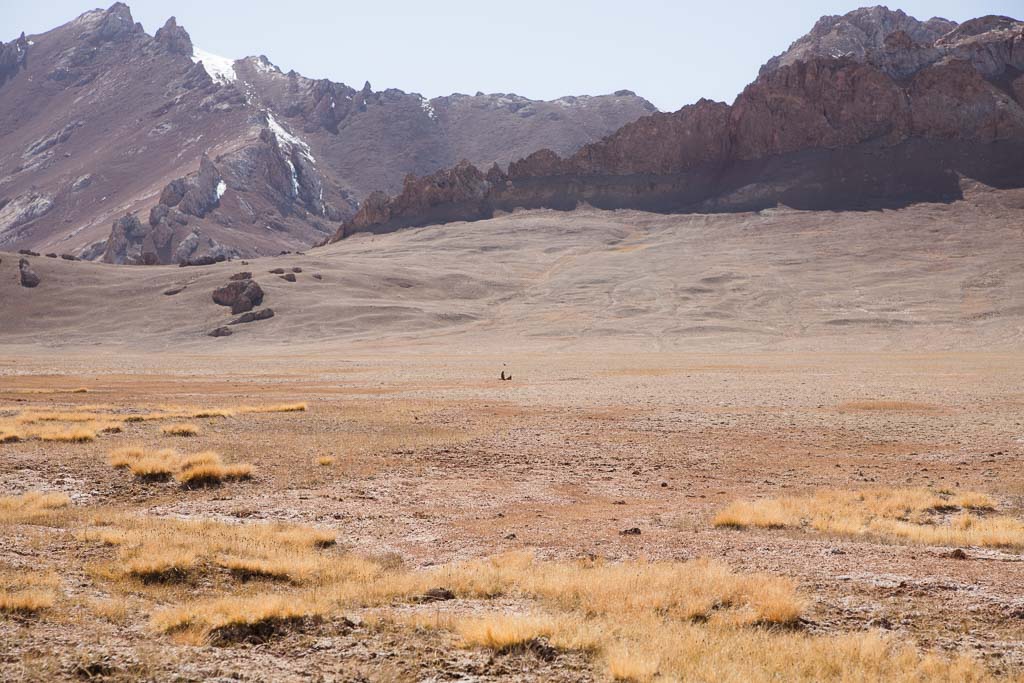
Madiyan Valley
Madiyan Valley is reachable from the Pamir Highway, where you’ll head west down a dirt track just south of Murghab. There is a settlement named Ak Tal in the valley that has lush green sceneries and trees along the river. Continuing deeper into the valley you’ll eventually follow the Elisuu River toward the south to reach Madiyan hot springs.
It’s worth stopping briefly in the village of Ak Tal to ask which route to take to Madiyan Hot Springs. There’s a lower route that stays alongside the Elisuu River and a higher route that climbs high above the river when the water is running high. You will need to cross a scrap metal footbridge to cross the river and reach the hot spring.
For those looking for a trek, you can trek up and over the Gumbezkul Pass to connect with the Pshart Valley that is located just north of Murghab. Madiyan Valley sits within the Tajik National Park, so you are technically supposed to have a permit on you, but chances are you won’t run into a ranger out here, and if you do they’ll just ask for the day fee (18 TJS).
Check out my guides to both the Gumbezkul Pass Hike and to Madiyan Valley Hot Springs
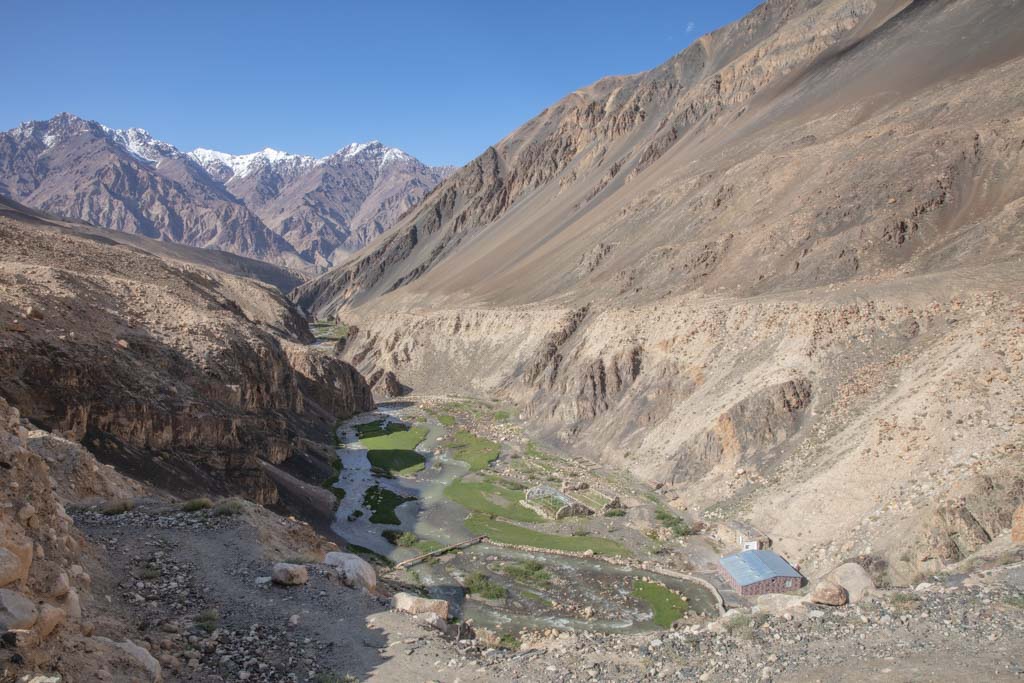
Murghab
Welcome to the wild wild east! Murghab is where those wanting to explore deeper into the eastern Pamir will base themselves. Murghab is set in a scenic valley, but the town itself is more utilitarian than it is attractive.
Somoni and Lenin are the two main streets through the town. There are a handful of guesthouses, the Pamir Hotel, and a chaikhana here. Don’t miss out on the shipping container bazaar in the heart of town. Both times I’ve arrived in Murghab I’ve stayed at Tulfabek Guesthouse (+992 935389159).
Make the most of your time in the east: The Murghab Travel Guide
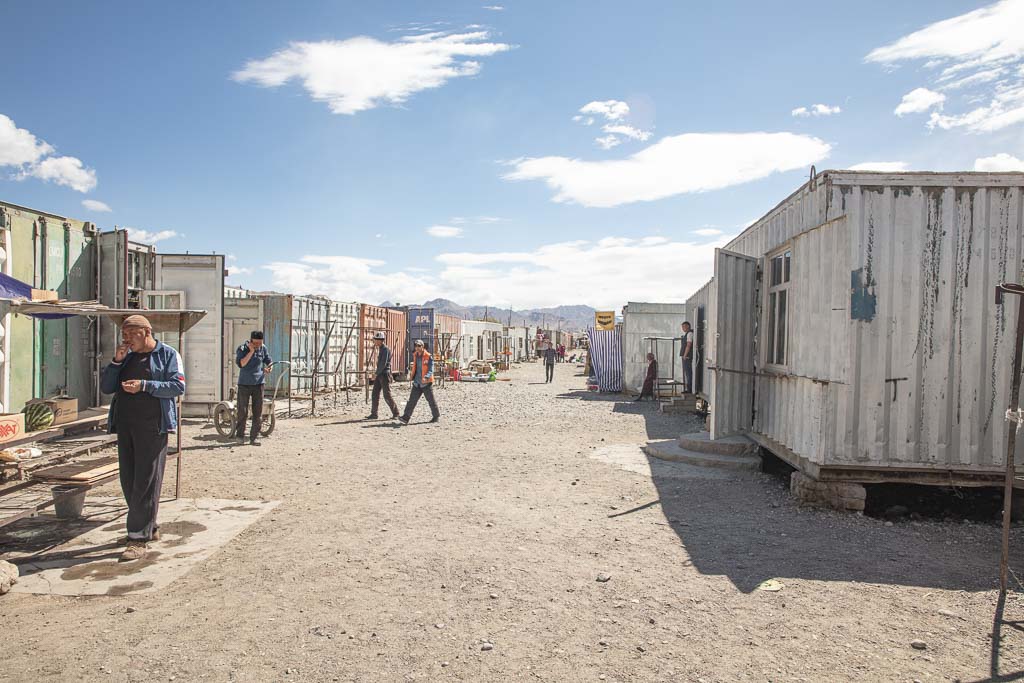
Rangkul
The draw to the Rangkul area is sand dunes, mountain desert landscapes, and salt lakes. There are yurt stays and guesthouses in Rangkul and it’s even possible to go camel trekking in the area. Rangkul is located northeast of Murghab near the Chinese border (north of the Qolma Pass), and there are shared taxis that depart in the last afternoon on most days from the bazaar in Murghab for around 30 TJS per seat.
Shaimak
Shaimak is pretty far off the beaten path. Most who visit Shaimak do so as an alternative to the Pamir Highway, but heading east from the Khargush Pass to Zorkul and Kara Jilga and then continuing east to the furthest southeast corner of Tajikistan- Shaimak.
Shaimak is a small village that sits below the impressive bluff of Ak Tash. Shaimak was of strategic importance during The Great Game when between 1830 and 1907 Britain and Russian vied for power in Central Asia. Shaimak was important because it was the one point you could be at and view western China, Afghanistan’s Little Pamir and across into Pakistan (back then British India).
North from Shaimak shortly before returning to Murghab are beehive-shaped tombs at Konyekurgon. You can take a detour off the Shaimak-Murghab road to visit the Ak Bura Crater, and Shor Bulak Observatory. There is a guesthouse in Shaimak, but note that to reach Shaimak it will likely be by 4×4 hire.
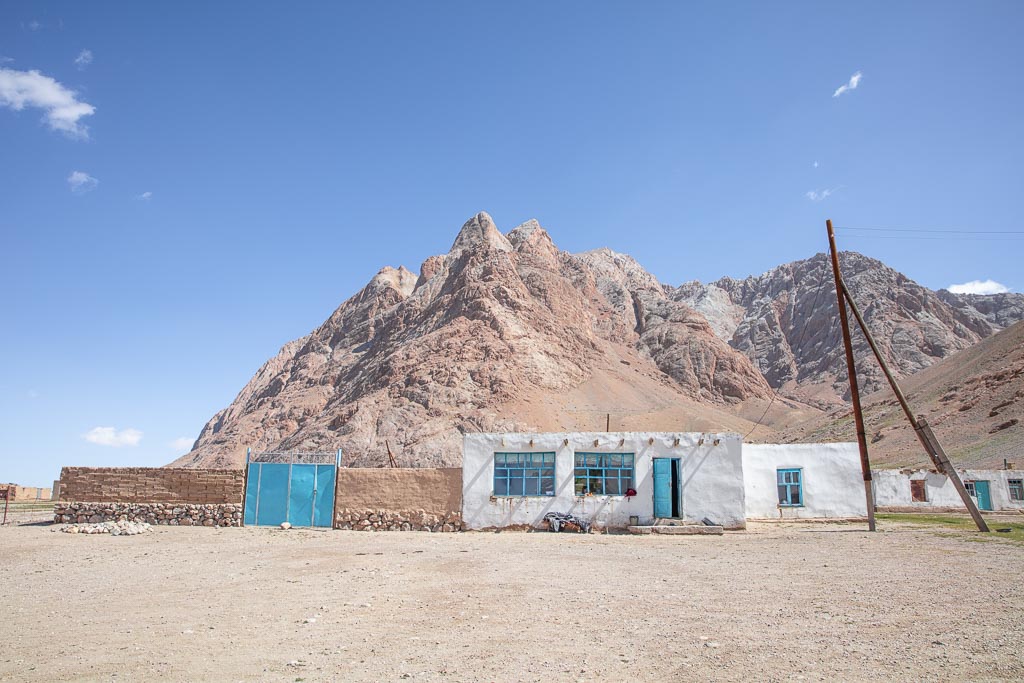
Pshart Valley
Pshart Valey swirls with color just north of Murghab. From the yurt camp in the Pshart Valley, it is possible to do the long day trek previously mentioned up the Gumbezkul Pass to connect with Madiyan Valley. You can grab a shared taxi out here from Murghab for about 100 TJS per seat. It is possible to continue west on foot in the Pshart Valley to eventually reach the Murghab River where it flows into Lake Sarez.
Pshart sits in the Tajik National Park, so you should have a permit on you.
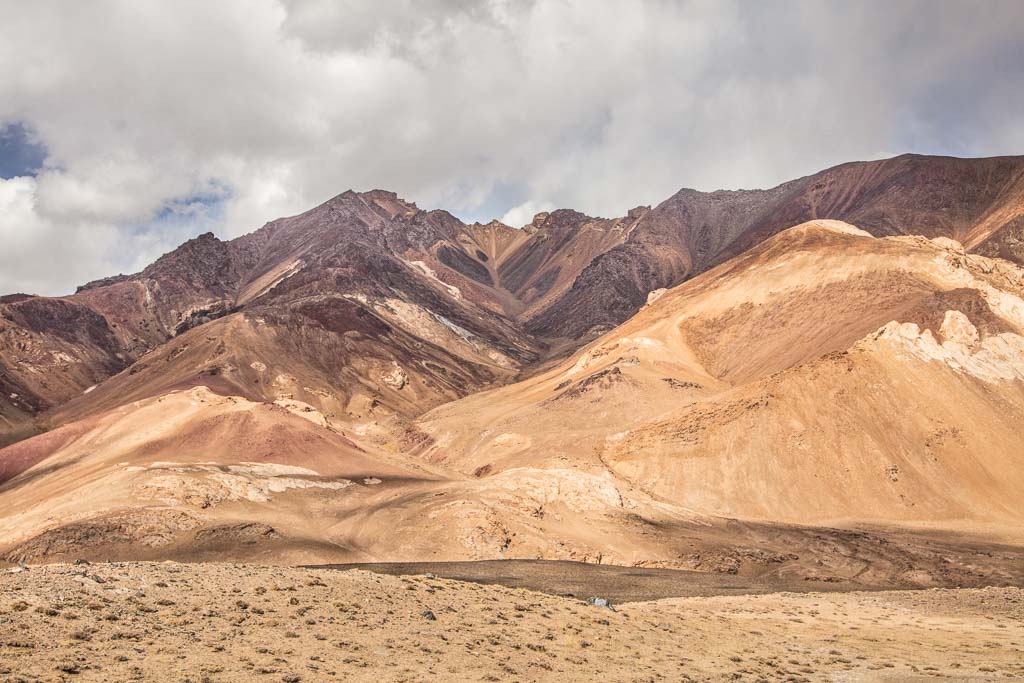
Ak Baital Pass
Ak Baital means white horse in Kyrgyz and is the chosen name for this 4,655 meter pass. The pass looks like something out of this world, and also don’t be surprised to see it snow here- even in summer. This is also one of the best places to try and spot Marco Polo sheep from along the Pamir Highway, so make sure and stop to have a look for them.
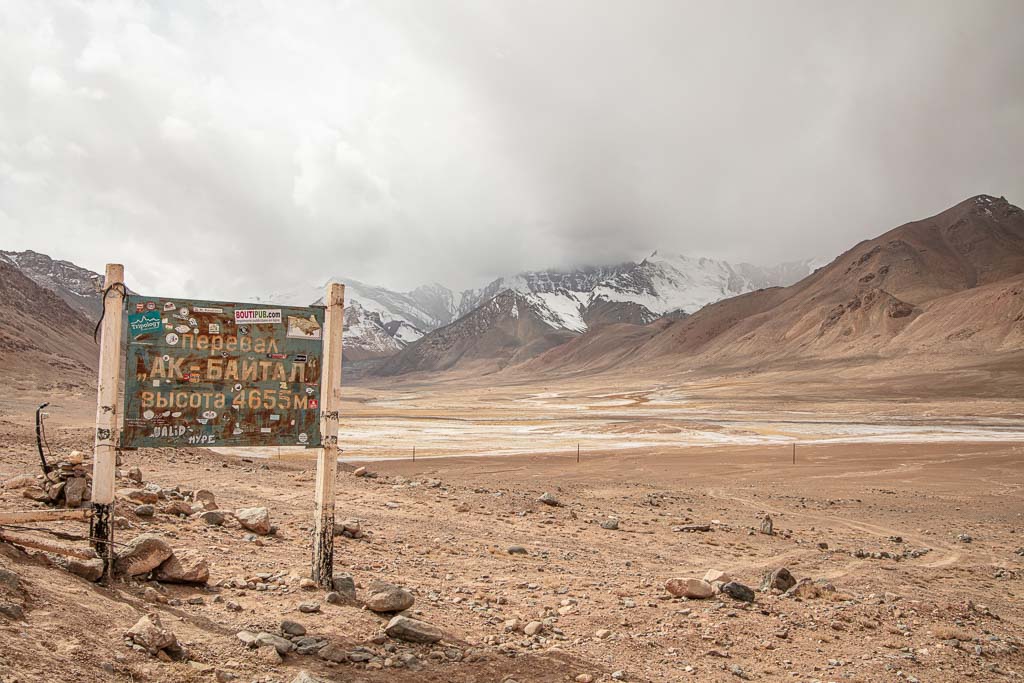
Karakul
Karakul is usually the last stop for those headed for the Kyrgyz border at Kyzyl Art. Karakul is a massive lake just off the highway caused by a meteor impact.
There is a small village on the east shore of the lake of the same name where it’s possible to grab a meal or spend the night in a guesthouse. South of Karakul it’s possible to follow jeep tracks toward Kök Jar where you can link back up to the Bartang Highway and descend to Gudara. Read up more on what to do during your stay in Karakul.
If you’re spending any time around Karakul and you’re looking for a good warm-up hike, check out the Aral Yuj (South Aral Peak) day hike.
Plan your visit: The Karakul Travel Guide
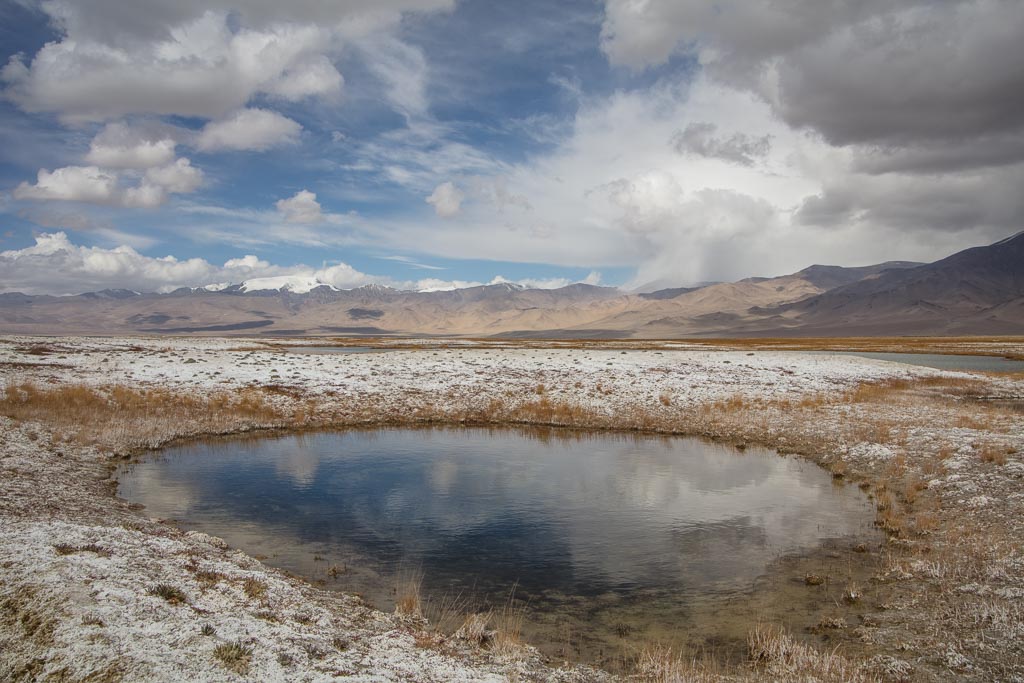
Sughd Region
The Sughd region is located in northwestern Tajikistan and is centered around the ancient Sogdiana Civilization. The Sughd Region is a bit wealthier than the remainder of Tajikistan as the Fann Mountains helped create a natural barrier that protected them from the 1990’s Tajik Civil War that ravaged much of the country.
Khujand
Khujand is Tajikistan’s second-largest city situated in the Tajik Fergana Valley. Most who end up in Khujand are traveling either to/from Kyrgyzstan or Uzbekistan as the three borders gnarl together here.
Sites to check out in Khujand include Panjshanbe Bazaar, Sheikh Massal ad-Din Mausoleum & Complex, the ancient Citadel & Kamoli Khujandi Park, and the tallest Lenin Statue still standing in Central Asia. There are a number of chaikhanas around town to grab a meal and quite a few hotels and hostels which you can book here.
If you’re looking for some awesome day trip from Khujand, I’d definitely recommend visiting the former uranium mines at Taboshar as well as the blinding white Akhkon Salt Flat in Asht District.
Plan your time in Khujand: Khujand Travel Guide + 14 Things To Do
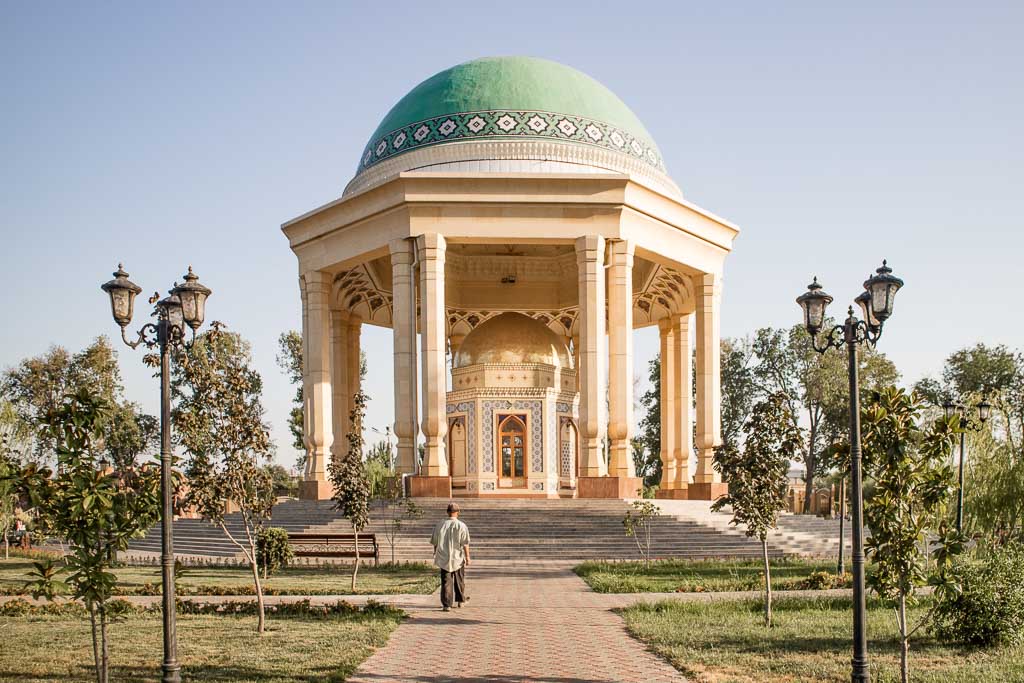
Istaravshan
Istaravshan is a 90 minute shared taxi away from Khujand and a great place to stop off for a couple of hours or a day to break up the drive time between Khujand and Pankjakent or Dushanbe.
Make sure and visit Mug Teppe, Shahr-e-Kuhna, Hazra i Shah Mosque, Hauz i Sangin Mosque, Sary Mazar, Chor Gumbez, and Abdullatif Sultan Madrasa before you leave. Many of these sites are smaller and less impressive, yet similar to what you would see in the more famous and more crowded Silk Road cities across the Uzbek border. Shared taxis from Khujand will cost 15 TJS per person.
Don’t miss anything: The Istaravshan Travel Guide + 8 Things To Do
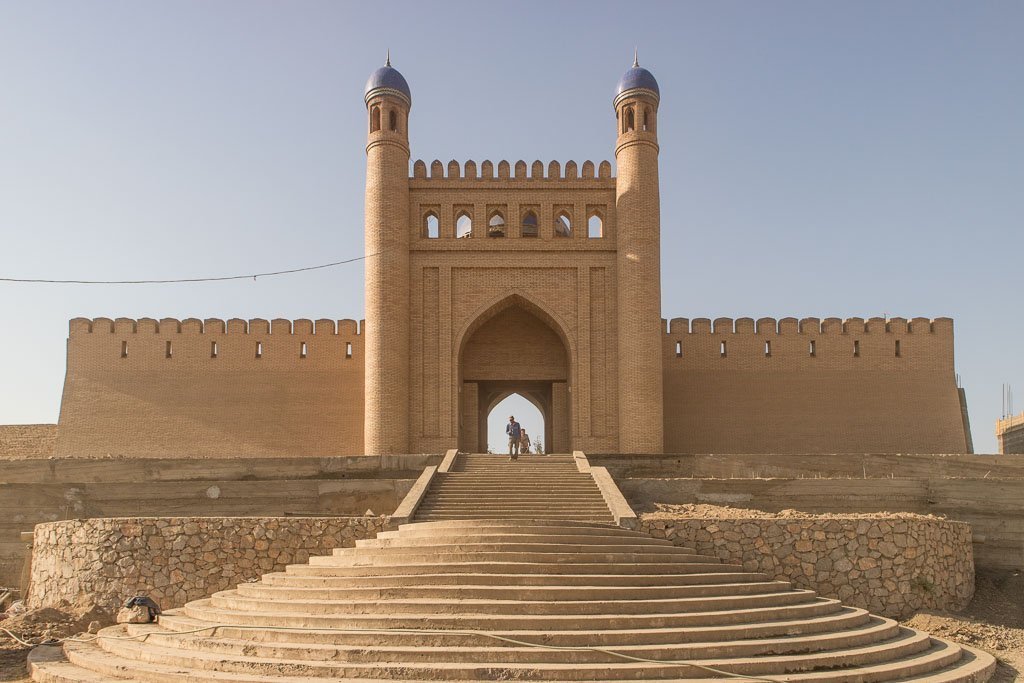
Panjakent
The main reason people head to Panjakent is that it’s the jumping-off point to the Haft Kul and the Lakes Loop Trek in the Fann Mountains.
Panjakent does have a few attractions in itself including Ancient Panjakent Archeological Site, Rudaki Museum, Olim Dodkhokh Mosque & Madrasa, the Panjakent Bazaar, the Devastitch Statue, and a golden Lenin Statue.
There are a handful of hotels and guesthouses in Panjakent, I personally recommend Salom Hostel. For transport to Khujand, Istaravshan, the Haft Kul, Artuch, Dushanbe and Samarkand taxis leave from taxi stands not far from the bazaar. Just ask around the bazaar and you will get pointed to which one you need to head to.
If you’re planning to cross the border between Panjakent and Samarkand, read this post first.
Make the most of your Panjakent visit: The Panjakent Travel Guide + 5 Things To Do
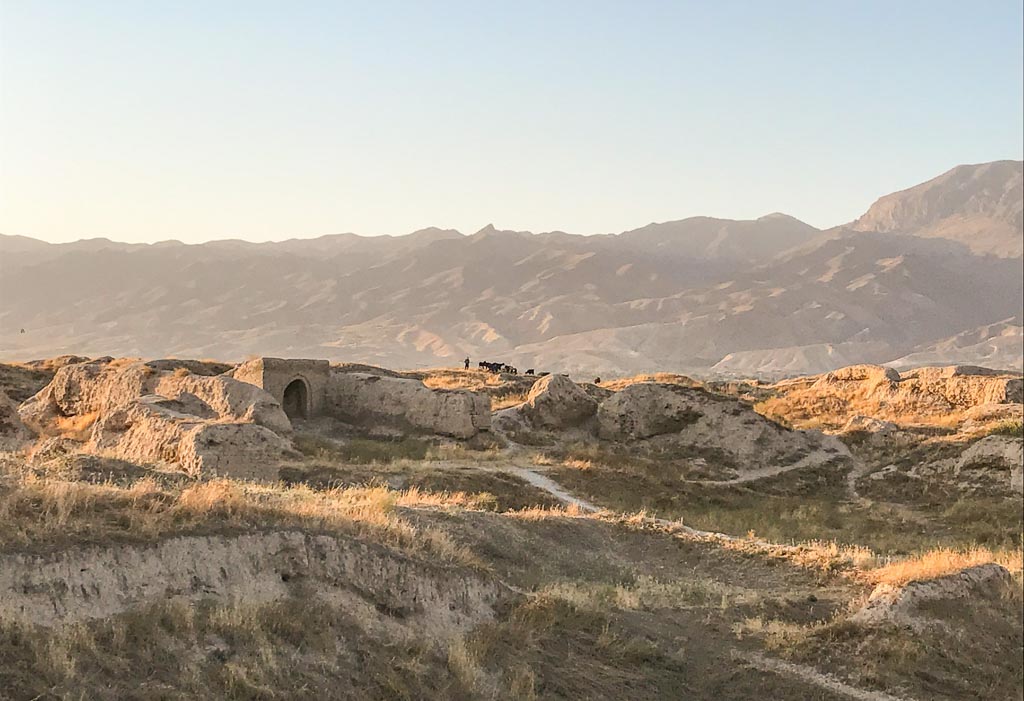
Panjrud
Panjrud is located off the main road to Panjakent on the way to Artuch Base Camp. Panjrud is important because it is the village that Rudaki the famous Persian poet was born. There is a mausoleum dedicated to Rudaki in the middle of Panjrud. Check booking.com for guesthouses in Panjrud.
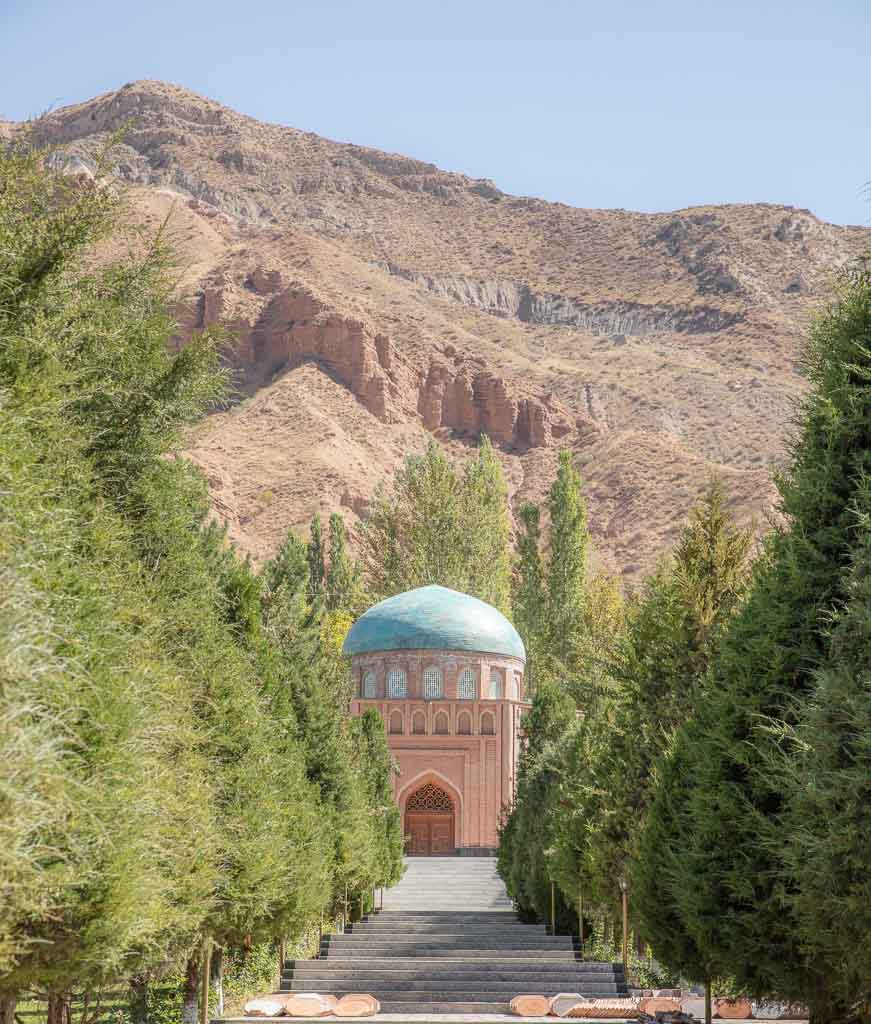
Haft Kul
The Haft Kul is a string of seven beautiful lakes that vary in color from light turquoise to nearly black. This is the easiest trekking to access in Tajikistan and can even be done as a day trip from Panjakent.
The road goes all the way to the 6th lake, making the only lake reachable by foot only the 7th lake of Hazorchashma. Many will spend 2-3 days trekking here getting dropped off near the village of Shing and trekking down to the 7th lake and back.
There is a homestay ran by the friendly Jumaboy and family called Najmidden Homestay near Nofin Lake.
You can make an alternate trek starting from the village of Mogiyon to the west of the Haft Kul, hiking down to Rogich Village and then up and over the Komichura Pass to reach the 6th Lake (Marguzor) in the Haft Jul and then trek back to the first lake.
Additionally, from the west shore of Marguzor, you can trek to Kiogli Village and then over Tavasang Pass to either head toward Artuch, Chimtarga Pass, or Kaznok Pass to the Lakes Loop Trek, or to the Dukdon Pass to continue to Iskanderkul.
Make sure and have your passport and e-visa handy as they will be checked at the checkpoint near Shing. Read more on trekking in the Haft Kul in my Haft Kul Travel Guide.
Plan your trek in the Haft Kul
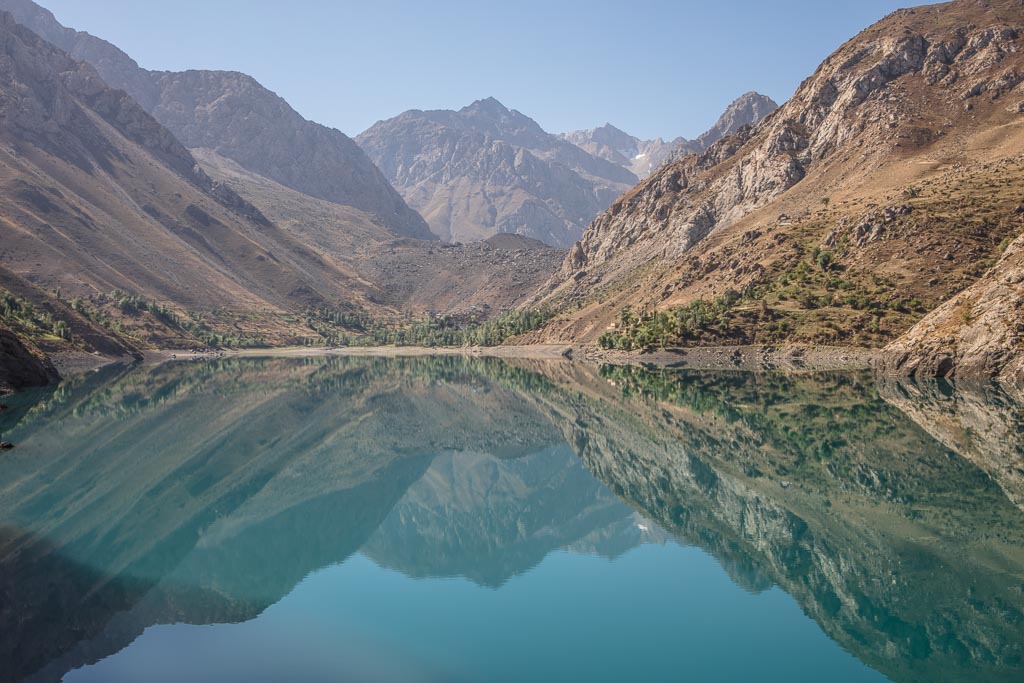
Fann Mountains
The Fann Mountains are stunningly beautiful and home to the gorgeous lakes of Alovaddin, Kulikalon, Bolshoi Allo, Iskanderkul, and many more. There are several routes that can be taken leading you to these lakes, as well as beautiful valleys and rivers.
For those more serious into mountaineering, there are a few 5,000 meter + peaks in this range, the tallest being Gora Chimtarga. Read more about trekking in the Fanns in my Fann Mountains Travel Guide.
Read: The Ultimate Guide to the Fann Mountains
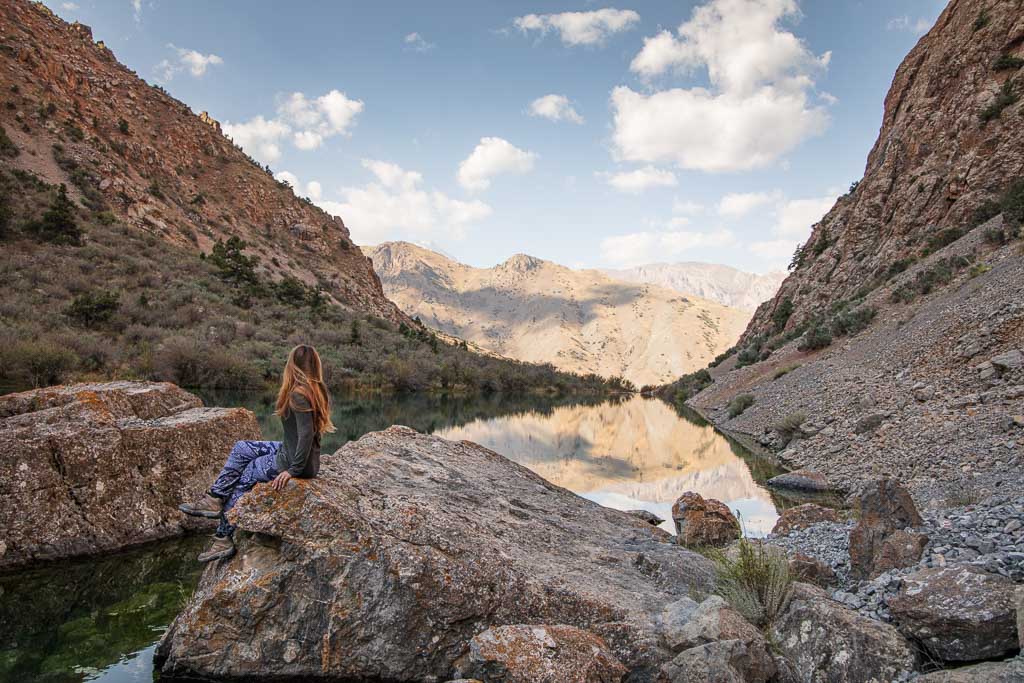
Yagnob Valley & Margib
The Yagnob Valley is much less visited by foreigners than the Fanns and the Haft Kul but is equally as interesting. The Yagnob Valley is home to several remote settlements of people who still live traditionally as they have for hundreds of years and even still speak the ancient Sogdian language.
Margib is the main village and jumping point into the Yagnob Valley. Shared taxis are available from Sarvoda on most days as the Yagnobi traders that come down from Margib will be returning home, seats usually run about 60 TJS, but usually, it’s easier to charter the entire car from the Sarvoda Bazaar for 300 TJS.
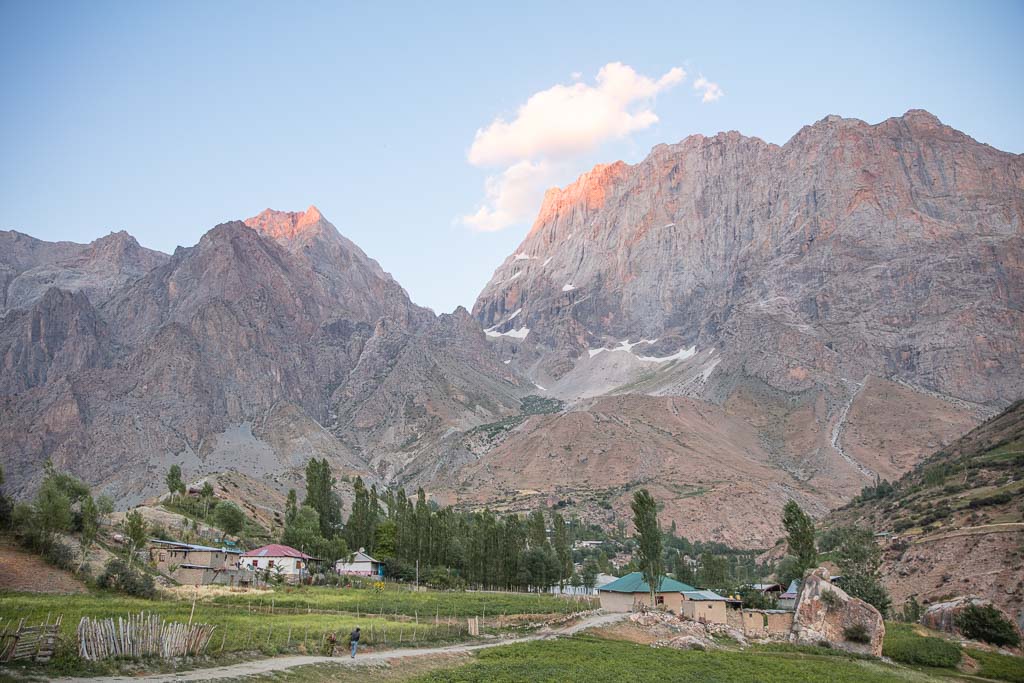
Read more and plan your trip to the Yagnob Valley
Ayni
Ayni isn’t much of a stop in itself as it is the main transport hub for those headed into the eastern Zeravshan Valley. There is an ATM here for those hoping to withdraw cash and a mosque that may be of interest.
Sarvoda
Sarvoda isn’t a site itself, much like Ayni. The main reason you would be here is to grab a shared taxi bound for either Margeb & the Yagnob Valley, Iskanderkul, or Vertical Alovaddin Base Camp.
There is a guesthouse here called Mehmonkhona Yazdon if you end up getting stuck here overnight. There is a chaikhana just outside of Sarvoda that is painted green and has outdoor seating right along the main highway that sells great laghman.
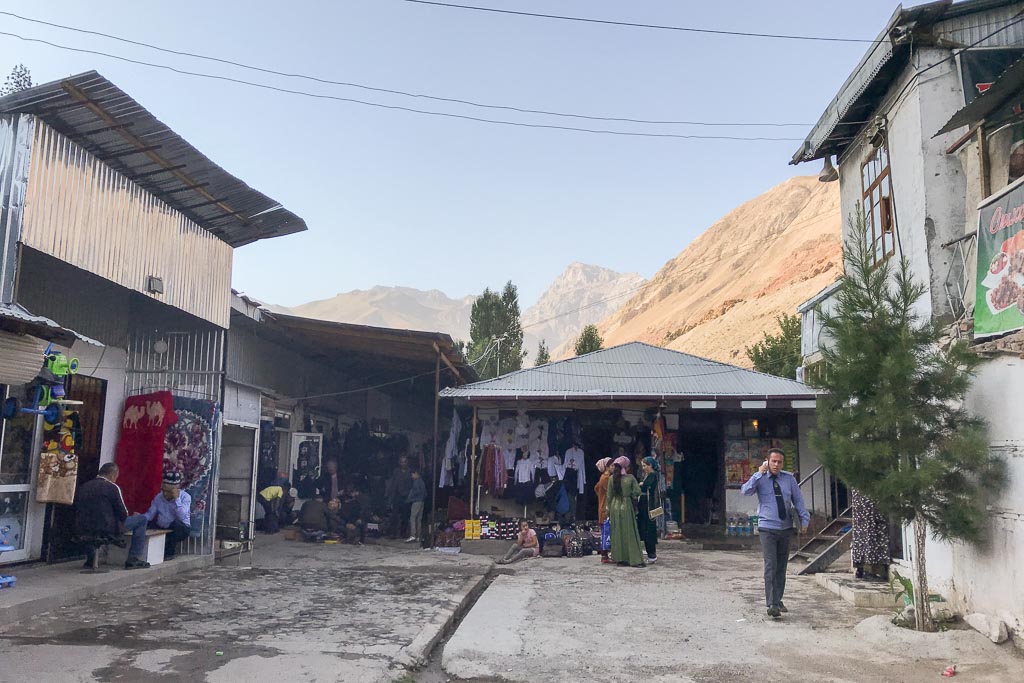
Khatlon Region
The Khatlon region makes up the southwestern corner of Tajikistan. Khatlon can get dreadfully hot in the summertime. The best time of year to visit the Khatlon area is in springtime.
Qurgonteppa
Qurgonteppa is a city situated in the southwest of Tajikistan, about two hours by bus or shared taxi from Dushanbe. The main attractions to check out in Qurgonteppa include the Chiluchor Sacred Spring, the Ajina-Teppa Buddhist Monastery, and the Mausoleum & Museum of Bibikhonum. Learn how to get to Qurgonteppa and more here.
Yahksu Valley, Sary Khosar Nature Reserve & Childukhtaron Reserve
These three areas offer some truly off-the-beaten-path experiences in Tajikistan and offer a taste of rural Tajik lifestyle.
Sary Khosar is reachable by heading north of Kulab to Baljuvon where you can either arrange a UAZ (500 TJS) or wait with the locals for the “Machina Kalon”, an old Gaz-66 (20 TJS per person) that trundles up and down Sary Khosar Valley a couple of times a day.
Childukhtaron is probably the most well-known of these three destinations as it is a popular Tajik vacay spot. You can reach Childukhtaron by heading north of Kulab to Muminobad where you can begin arranging transport. A windy mountain road also connects Baljuvon to Childukhtaron which I recommend if you’re visiting in early summer and have your own transport (the rolling green hills of Khatlon between Baljuvon and Childukhtaron reminded me of being in parts of Italy).
A little further north, the Yakhsu Valley which can tie you to Tavildara along the Northern Pamir Highway Route can be accessed through a town by the name of Khovaling.
Read more about the Yakhsu Valley, Sar i Khosar, and Childukhtaron here.

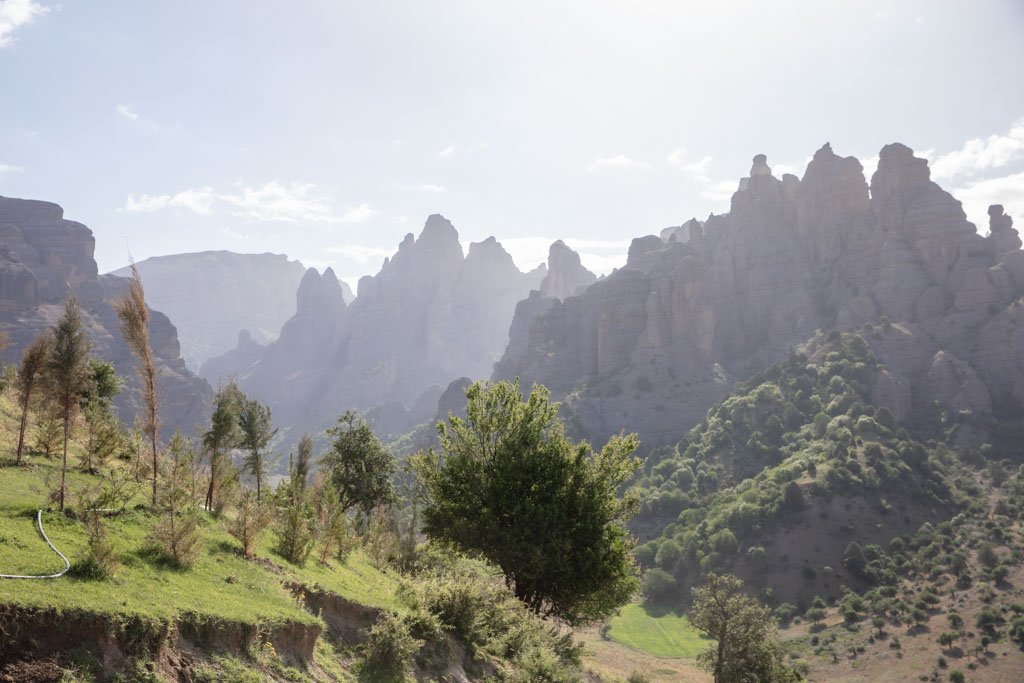
Kulob
Kulab is Tajikistan’s third-largest city The biggest attractions here are to stock up at the massive bazaar before heading out on the Pamir Highway and the Shrine to Mir Said Ali Hamadani.
Hulbuk
Visiting Hulbuk Fortress in Pingan can be done as a day trip from Dushanbe or as a stop along your Pamir Highway adventure, as it is very close to Kulob. The main attraction is, of course, the 11th-century Hulbuk Fortress. Read up on how to get to Hulbuk in this post here.
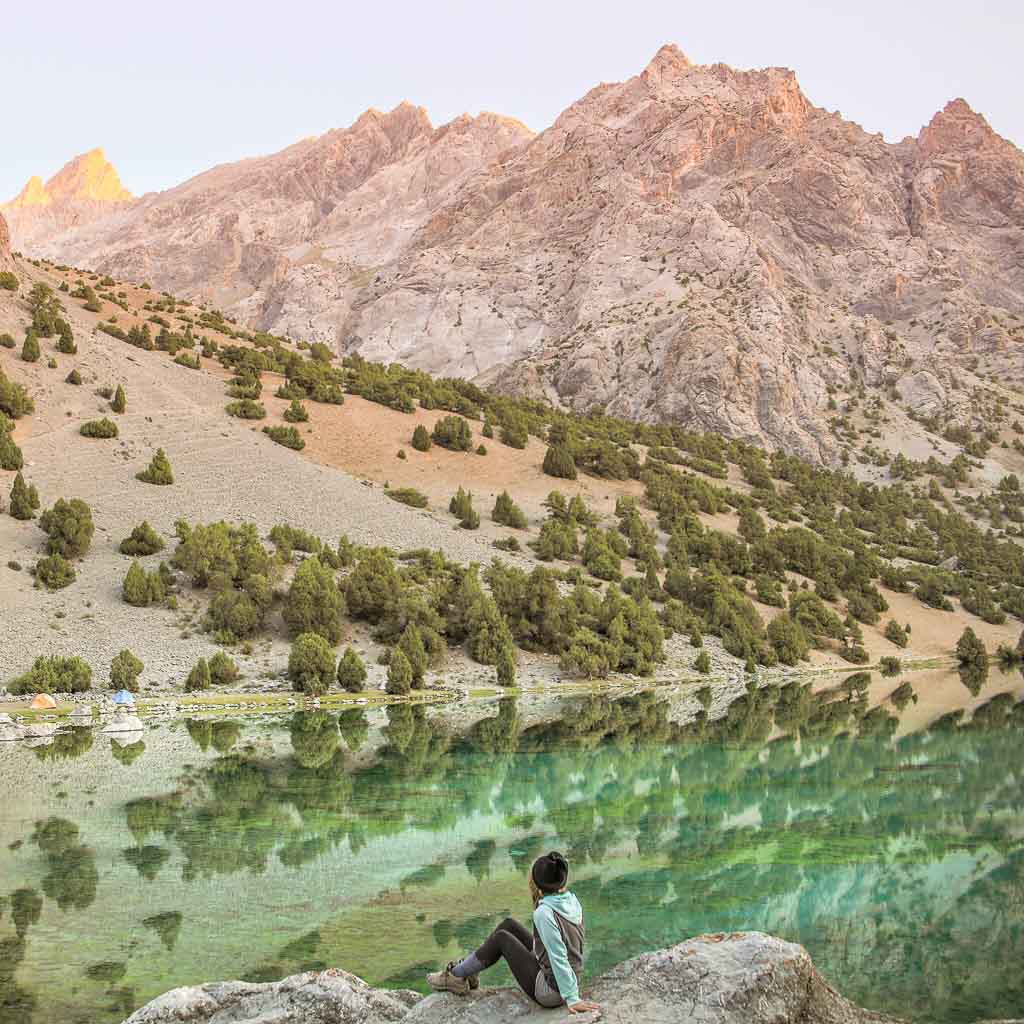
Trekking In Tajikistan
Tajikistan is a dream for trekkers and mountaineers. There are far too many treks to mention in this already forever-long guide. To learn more about trekking in the country check out the following posts:
- The 10 Best Treks in Tajikistan
- The Fann Mountains Guide
- Trekking The Haft Kul In Tajikistan’s Fann Mountains
- A Guide to the Lakes Loop, Fann Mountains
- Crossing Chimtarga Pass
- A Guide to Bolshoi Allo Lake in the Fann Mountains
- A Quick Guide to Iskanderkul & Sarytag
- The Trek to Timur Dara Lake in the Southern Fanns
- Crossing Dukdon Pass
- Yagnob Trekking & Travel Guide
- The Lakes Loop
- The Yagnob Valley Trekking & Travel Guide
- The Jizeu Trek, the Best Overnight Trek in the Pamirs
- How To Get To Lake Sarez
- How To Get To The Khafrazdara Valley & Grum Grijmailo Glacier
- Trekking Over Gardan i Kaftar Pass from the Rasht Valley
- The Gumbezkul Pass Hike from Pshart to Madiyan Valley
- The South Aral Peak Hike neay Karakul
- A Trek to Pik Engles Meadow
- The Tajik Wakhan Valley Travel Guide
- The Pamir Highway Guide
Looking for more ideas? Read the 10 best treks in Tajikistan
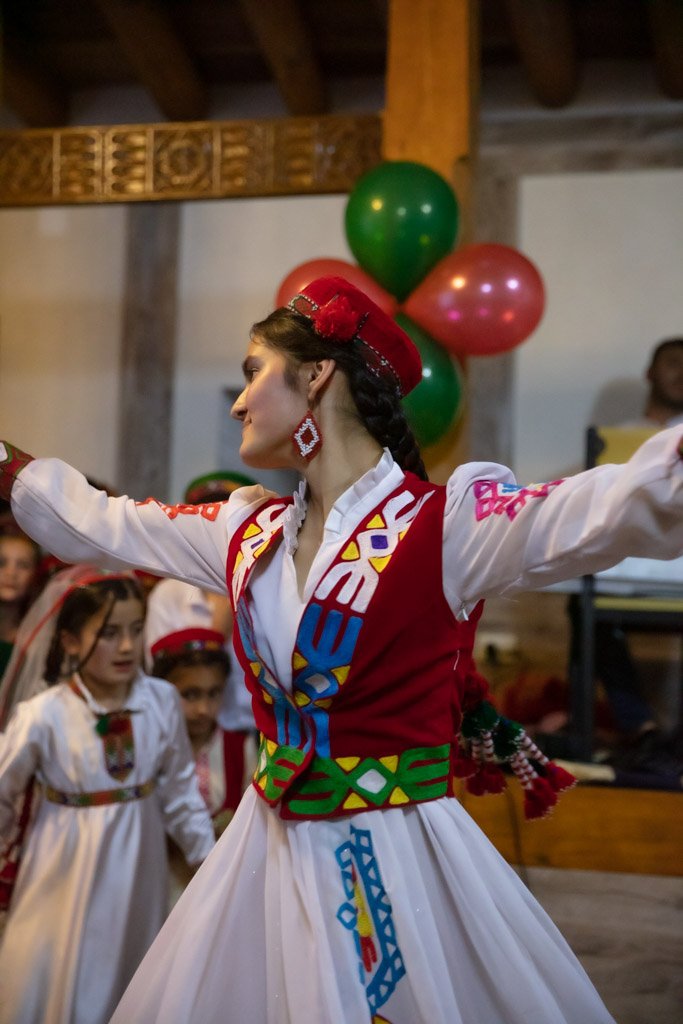
Tajik Festivals
There is no shortage of festivals in Tajikistan. There are many that are only celebrated in one particular village and others that are celebrated nationwide. Here are a few to list:
- Nowruz– This is the Persian New Year that usually falls March 20-21 each year. The day is marked by celebrations all over the country.
- Sayri Guli Lola Festival– Held in spring just after Navruz typically. The festival celebrates springtime and the tulips it brings with it. The song Naqshi Kalon is commonly played and celebrations usually include choirs, traditional music, and dancing.
- Victory Day– Celebrated on May 9 each year marking the Soviet defeat of the Germans in 1946 during WWII. The largest celebration happens at Victory Park in Dushanbe.
- Ruz i Nour– Held on May 25, celebrated by Ismailis to commemorate the current Aga Khan’s first visit to the GBAO in 1992.
- Imamat Day– Celebrated by Ismailis in the Badakhshan on July 11 each year. Commemorates the anniversary of the current Aga Khan taking over the Imamat of the Ismaili.
- Roof Of The World Festival– Held in Late July in Khorog each year celebrating Pamiri traditions & culture. Features music, dancing, and artwork from across the GBAO region.
- Roof Of The World Regatta– Held at the end of July, this sailing competition takes place on lake Karakul. There are hopes to get Karakul marked the official highest navigable body of water in the world, beating out Lake Titicaca.
- At Chabysh– Held in late July to early August each year near Murghab. The festival is centered around horse games but also includes craft & art exhibits and yurts.
- Eid al Qurban– Eid al-Qurban or ‘Feast of the Sacrifice’ is a huge holiday in Tajikistan as well as the rest of the Muslim world as it marks the end of the Hajj. The dates of Eid al-Qurban do float around year to year, but the holiday is usually celebrated in mid-August to mid-September. If you are in Tajikistan on the 3 days Eid al- Qurban is celebrated, you may very well be invited by a complete stranger to their family celebrations. On my first visit to Tajikistan, I was wondering the streets of Dushanbe trying to find a good place to grab lunch when an older man walked to me and asked what time it was (in Russian). I responded ‘Sechas chas’ (one o’clock). He then told me I looked hungry and grabbed my arm and walked me down a street, down an alleyway (um, am I being kidnapped?!) that finally opened up into a courtyard. The man’s entire family that came from all over Dushanbe and the surrounding communities was there. The whole family then proceeded to feast for about the next 6 hours, setting plate after plate out that we dug into. His family members only spoke Russian and Tajik (my Russian was fairly limited and my Tajik was minimal back then) so one of his sisters called her cousin who was going to university in Khorog who spoke English and acted as a translator to fill the gaps in my Russian capabilities. This is why I love Tajiks, some of the friendliest and fun people in the world.
- Independence Day– Celebrated September 9th each year, marking Tajikistan’s 1991 Independence from the Soviet Union. Independence Day is celebrated nationwide and usually includes parades, concerts, and fireworks.
- Ruz i Mavlud– The Aga Khan’s birthday, celebrated on December 13.
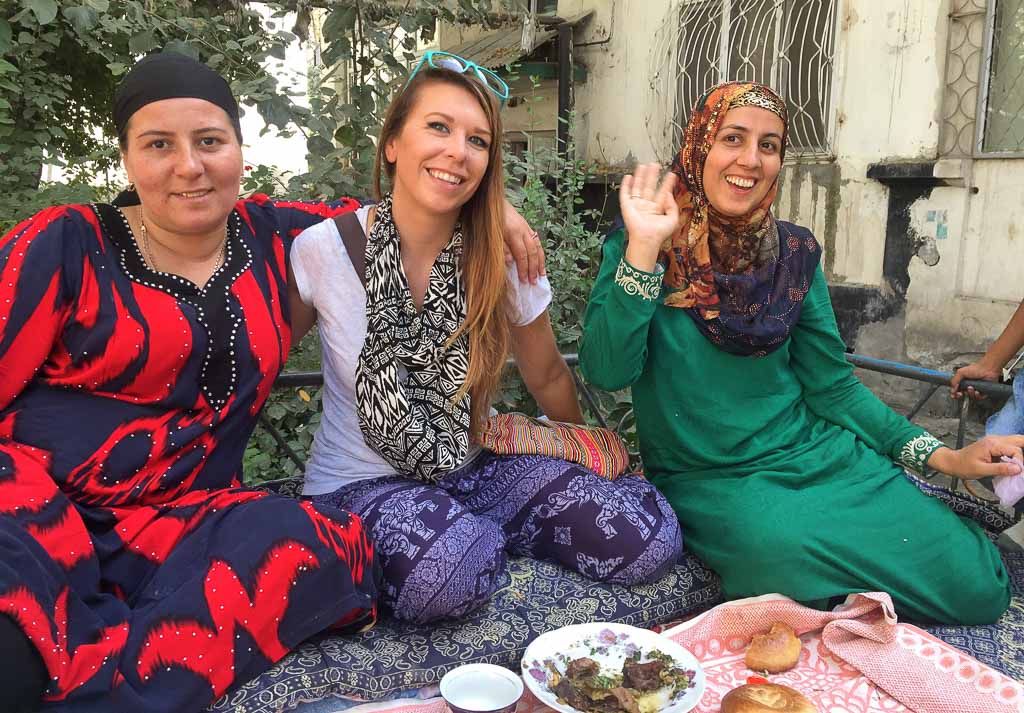
Tajikistan Travel & Tour Operators
Tajik Companies Offering Tours Within The Country
- Paramount Journey Offers some of the best itineraries around Tajikistan and staff are extremely knowledgeable.
- Pamir Guides Ran by the friendly and kind Saidali (he’s helped me out of a number if binds in the country!). Can arrange travel to both Pamirs and Fanns.
- Unique Pamir Started in 2018 by the amazing Zhandiya (she is a wealth of knowledge on the Pamirs!), Unique Pamirs offers a number itineraries in Tajikistan as well as the Afghan Wakhan, Kyrgyzstan, and Uzbekistan.
- Women Rockin’ Pamirs First female guides in Tajikistan! Started by French NGO to get Tajik women into the guiding business. Offering trekking tours of the Pamirs.
- Discover The Pamirs Specializing in trips in the Tajik Pamir and Bartang Valley, ran by the wonderful Saidmamad.
- Pamir Highway Adventure Offers trips to both Pamir and Fanns.
- Tour De Pamir Agency offering guided Pamir trekking.
- Sarez Travel Specializes in Lake Sarez travel as well as the Pamirs and Fanns.
- Bartang & Sarez Tours Specializes in the Bartang Valley including Lake Sarez and Khafrazdara Valley.
- Badakhshan Travel Specializes in the Pamirs and GBAO.
- Discovery Tajikistan Agency offering tours all over the country.
Western & Foreign Based Companies Offering Tours In Tajikistan
- G Adventures Offering overlanding adventures that include Tajikistan, as well as itineraries continuing through or coming from other ‘Stans including Kyrgyzstan, Kazakhstan, Uzbekistan, and China. Most range from 6 to 23 days.
- Intrepid Travel Another popular overlanding style tour company. Offering a 13 day tour from Bishkek to Dushanbe including the Pamir Highway.
- Mir Corp US based company offering trips to Tajikistan in addition to trips they lead all over the former USSR and Balkans.
- AdvanTour Tour company that specializes in Central Asia tours, as well as areas of the former Soviet Union.
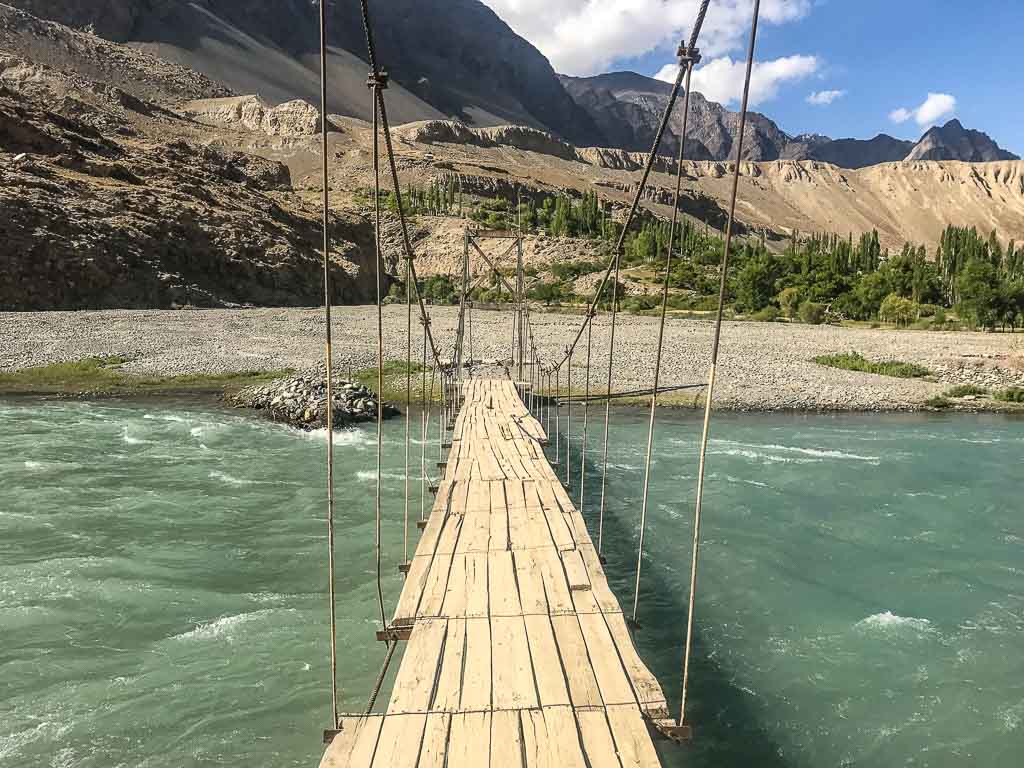
Tajikistan Travel Budget
Traveling Tajikistan on a budget isn’t too difficult to accomplish, however, it’s not as cheap as backpacker meccas of Southeast Asia or Central America. Here are three different tiers of travel style budgets (these estimates are per person):
285 TJS/$25 USD Per Day
Staying in dorms & homestays, eating at the bazaar & chaikhanas, traveling by marshrutka & sometimes shared taxi, and trekking unguided.
570 TJS/$50 USD Per Day Per Day
Staying in decent double rooms & homestays in rural areas, eating at chaikhanas & international restaurants, traveling by shared taxi or splitting the cost of car & driver hire with other travelers, and going on an occasional guided trek.
1140 TJS/ $100 USD Per Day
Sleeping in luxury hotels in cities & homestays in rural areas, eating at international restaurants when in cities and chaikhanas when in the rural, traveling by private car hire, taking guided and fully supported treks including equipment, porters, and meals.
My personal budget when averaged out over my first trip in Tajikistan averaged 750 TJS ($81 USD)/day (including the Pamir Highway)- I, of course, did not travel Tajikistan on the tightest budget- this was my dream destination so paying a little more to do what I truly wanted to do on my timeframe was worth it in my eyes (I did hire my own driver on the Pamir Highway). However, you can do this trip for a hell of a lot cheaper than this. Little did I know that I would return every year.
In 2017 my budget (excluding my private tour to Lake Sarez) averaged less than 180 TJS ($20 USD)/day- On my second trip to Tajikistan, I traveled by marshrutka & shared taxi everywhere I went and stayed in hostel dorms & homestays. Plus I spent nearly two months in Tajikistan so I didn’t have much on time restraints.
Tajikistan Travel Packing List
Trekking & Camping Gear
- Inreach Explorer+– GPS & SOS beacon, that can also send and receive text messages. Delorme/Garmin offers some good monthly plans when in use.
- Solar charger– To keep electronics charged in remote areas.
- External battery pack– Great in a pinch when batteries are dead and you’re in the middle of nowhere.
- Backpack– I recommend the Osprey Ariel 65L backpack for women.
- Daypack– My personal favorite is the Osprey Hikelite Plus.
- Hydration Pack– Have water available without having to reach for a water bottle.
- 3 Season tent– I use the MSR NX Hubba-Hubba solo tent when I’m traveling alone and love it! I also use a Mountainsmith Morrison Evo 2 tent for when I’m traveling with others.
- Sleeping bag– Useful for trekkers & cyclists. I use a Nemo sleeping bag cold rated to 15 F/-5 C.
- Hiking Boots– My personal favorite is the La Sportiva Nucleo High GTX hiking boot.
- Lightweight cooking camp set– For trekkers and cyclists that plan to prepare their own meals.
- Water Purifier– I personally use the Katadyn water filter. Tap water in the entire country is unsafe for drinking and natural water sources can be contaminated.
- Trekking Poles– Useful for the steep scree slopes and river crossings you may encounter.
- Headlamp– Useful while camping, and for the usual power outages, you’ll have in Murghab and other rural areas.
- Sunscreen– Don’t let the cold fool you, the sun is still powerful, especially at high elevations.
- Mosquito Repellant– Recommended in the summertime especially in the Khatlon Region & around Karakul.
- Prescription & Over the counter medications
- Toiletries
Guidebooks
- Tajikistan and the High Pamirs by Robert Middleton & Hue Thomas. This is a huge book, but it has so much good info on Tajikistan from the history, great-game stories, travel information, and more.
- Bradt Guide Tajikistan by Sophie Ibbotson. Probably my top pick for guidebooks on the country.
- Central Asia by Lonely Planet. Handy to have with you, although don’t necessarily treat it like a bible. Things rapidly change and the currency can fluctuate so it’s not always dead-on, however, the new book for 2018 just released in June. The Central Asia Phrasebook by Lonely Planet I found this to be a handy item for Tajik, Russian and Kyrgyz phrases, not so much for the Wakhi phrase section.
- Trekking In Tajikistan by Jan Bakker & Christine Oriol. The much anticipated and hugely updated print version of Jan’s ebook. Jan has become a friend over the years and along with Christine have led trekking expeditions in the Pamirs, Fann, and the Wakhan Corridor in Afghanistan.
Maps
- The Pamirs Map by Markus Hauser
- Northern Tajikistan Map by Gecko Maps
- Southern Tajikistan Map by Gecko Maps
- Fann Mountains Map by EWP (can be ordered direct from EWP as well)
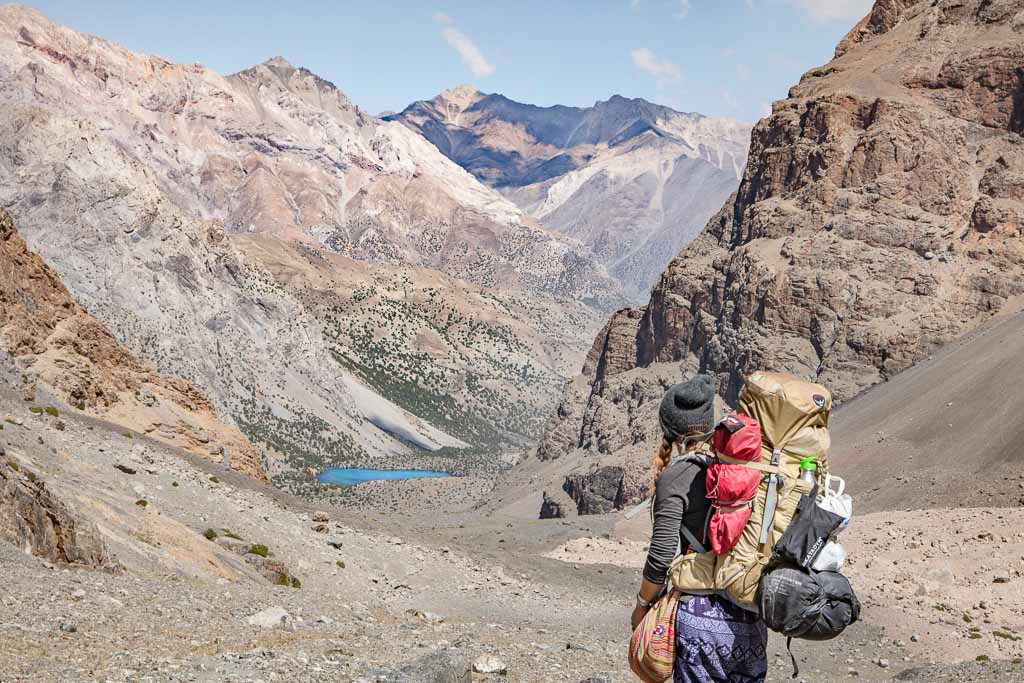
Great Online Tajikistan Travel Resources
- Pamirs.org: A great all-around resource for all things Pamir. From trekking, visa & permit information, cycling, sport, and more.
- Trekking in the Pamirs: Jan Bakker’s website with information on many hikes all over Tajikistan (not just the Pamirs!).
- ZTDA: Zeravshan Tourism Development Association. Munira & Jamshed are very knowledgable about trekking, cultural experiences, handcrafts, and more in the Zerafshan, Fann Mountains, and Yagnob Valley. Office located in Kamoli Khujandi Park in Khujand.
- PECTA: Pamir Eco-Cultural Tourism Association. Zhendaya who is often working in the office in the City Park in Khorog is very helpful. Can arrange just about anything for the Pamir and can arrange guides and/or porters.
- Trekking In The Pamirs: Jan Bakker’s website with information on trekking in Tajikistan.
- Monk Bought Lunch: Travel blog by Stephen Lioy who has been based in Bishkek, Kyrgyzstan for a few years now.
- Indy Guide: Making travel in the whole of Central Asia & Mongolia easier by providing the largest community marketplace of Central Asian tour operators and drivers.
Internet & Mobile
Tajikistan now offers tourist sim cards to travelers. You can get one from the Dushanbe Airport or at a Tcell or Megafone shop. The only downside is that the sim cards are only active for 10 days at a time. Once the 10 days are up you will have no service at all until you go into a shop and provide a copy of your passport, visa, and a registration slip from your accommodation (ask your hotel/hostel/etc for one).
In Dushanbe, you’ll have LTE coverage, outside it’ll range from 3G to nothing at all.
When I visited Tajikistan in 2016 social media apps like Facebook, Instagram & Twitter were all blocked, so I had to download a VPN in order to use them. When I returned in 2017 this was not the case, so know that some websites could be blocked at any time without any notice.
Tajikistan Travel Health & Safety
In general, Tajikistan is a safe country to visit. Of course, Tajikistan has had occasional incidents over the years but the vast majority of visitors depart the country unscathed.
The most common afflictions travelers encounter in Tajikistan are food poisoning/stomach upset and altitude sickness.
For tips and tricks to stay safe and healthy in Tajikistan, read my Tajikistan Safety Guide.
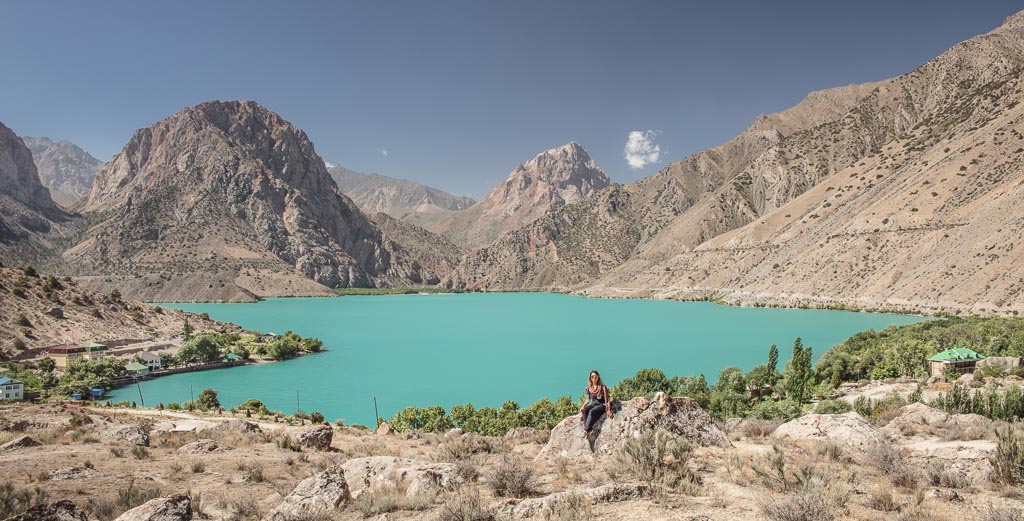
Any Questions On Tajikistan Travel?
Ask your Tajikistan travel questions in the comments below.
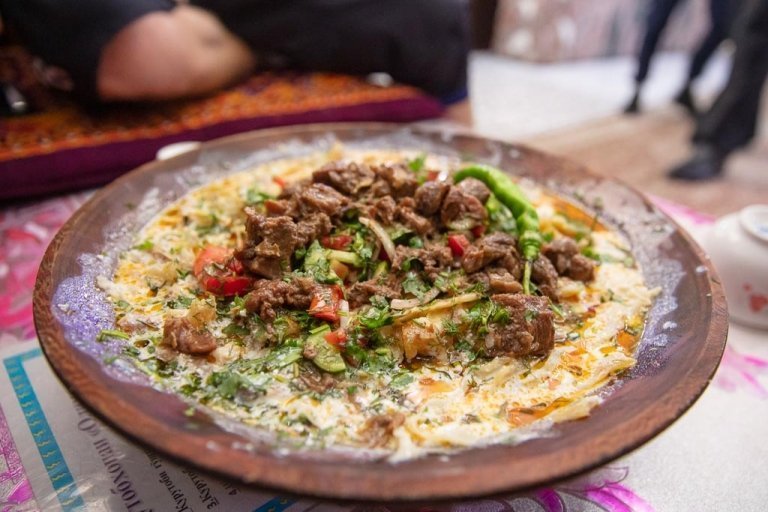
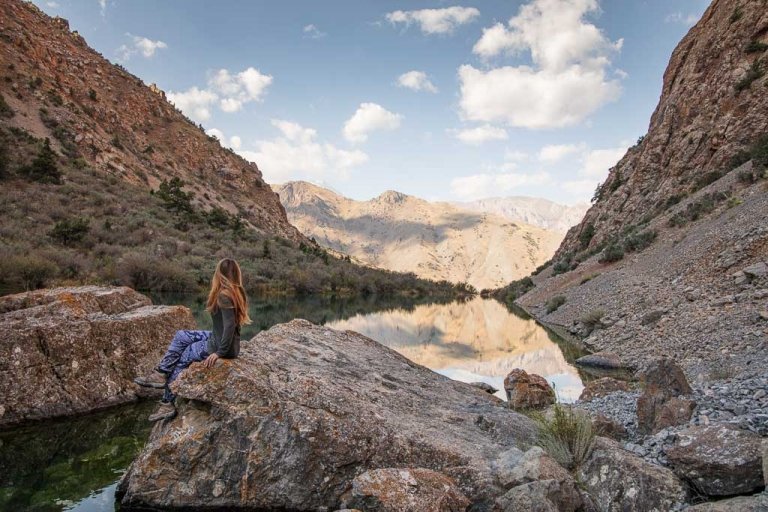
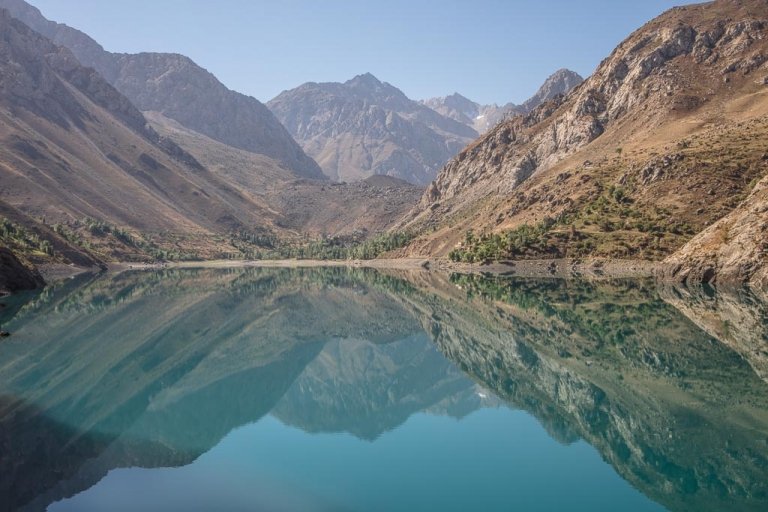
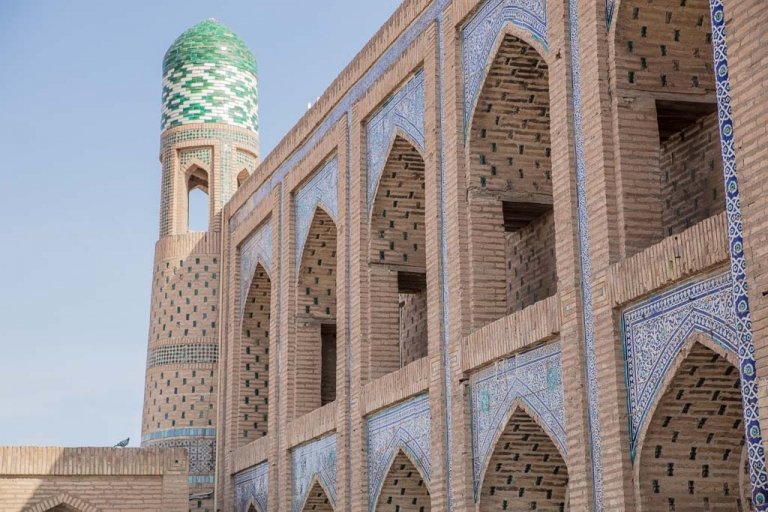
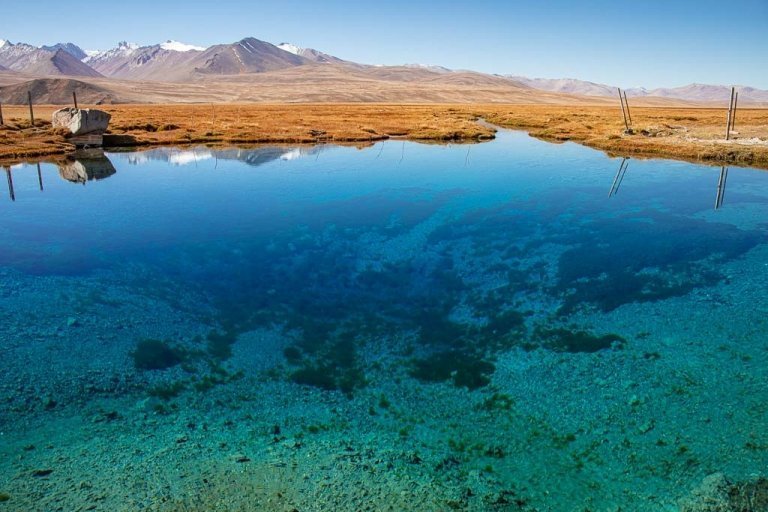
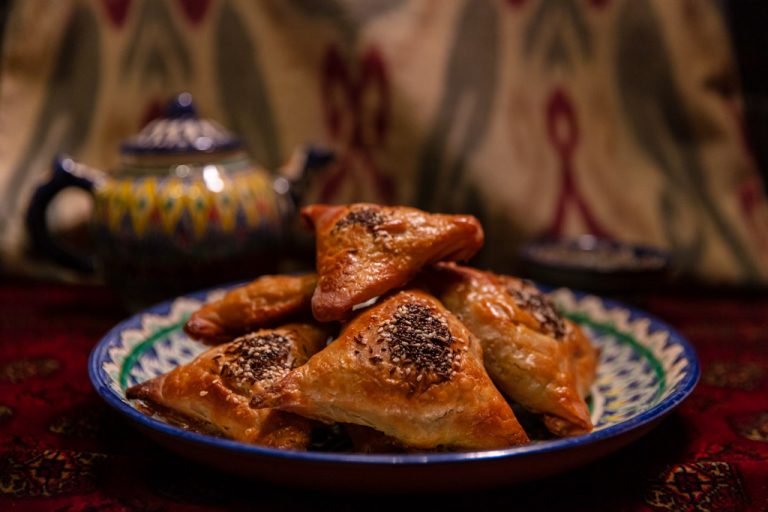
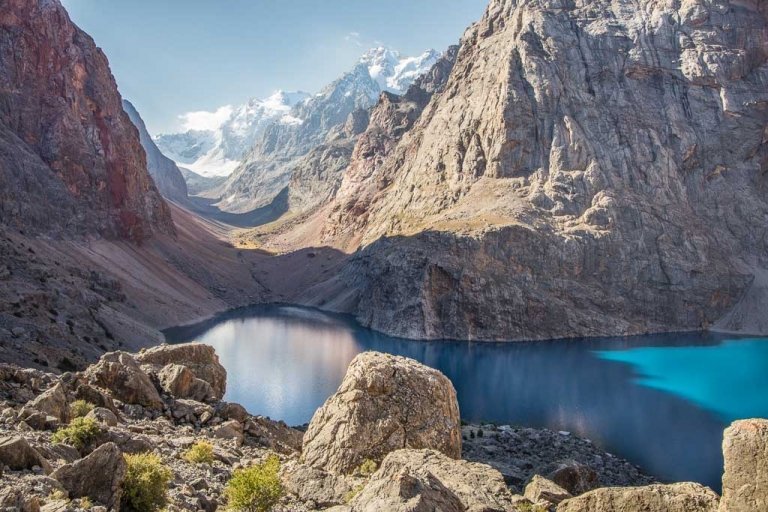
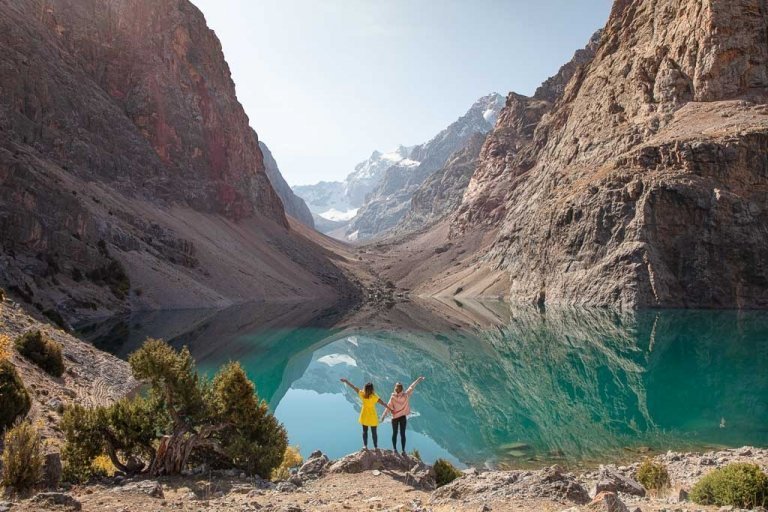
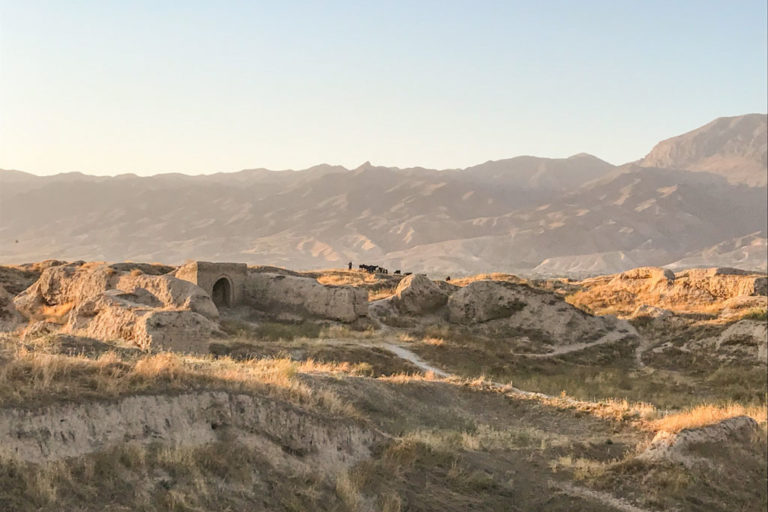
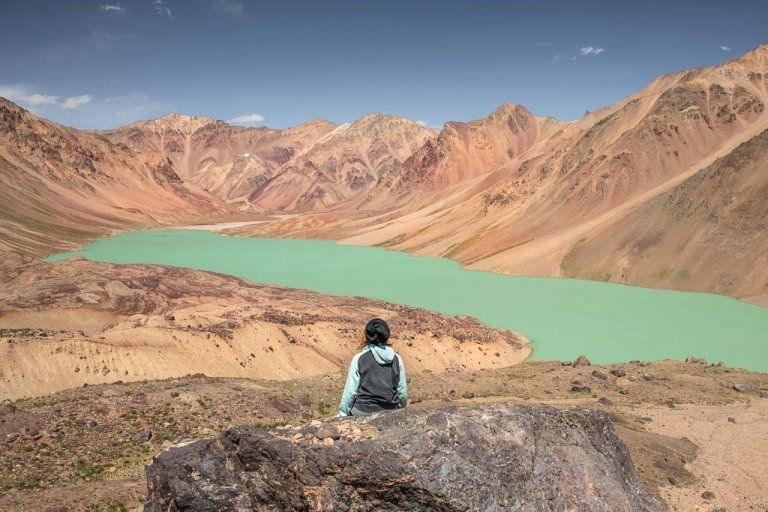
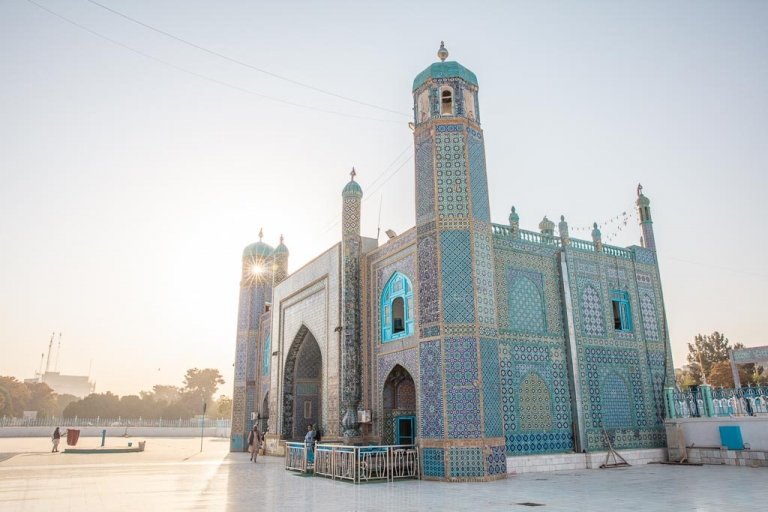
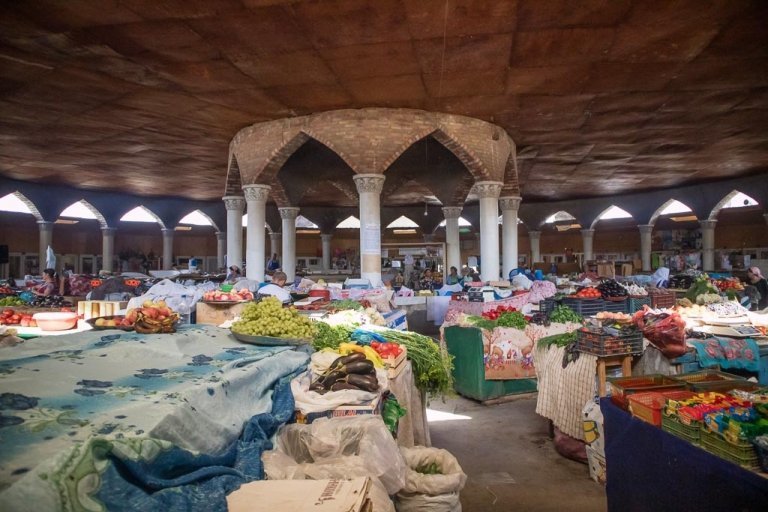
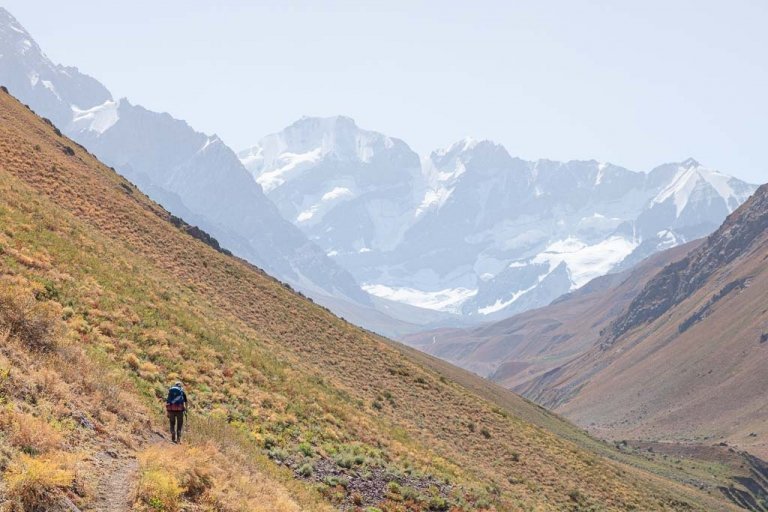
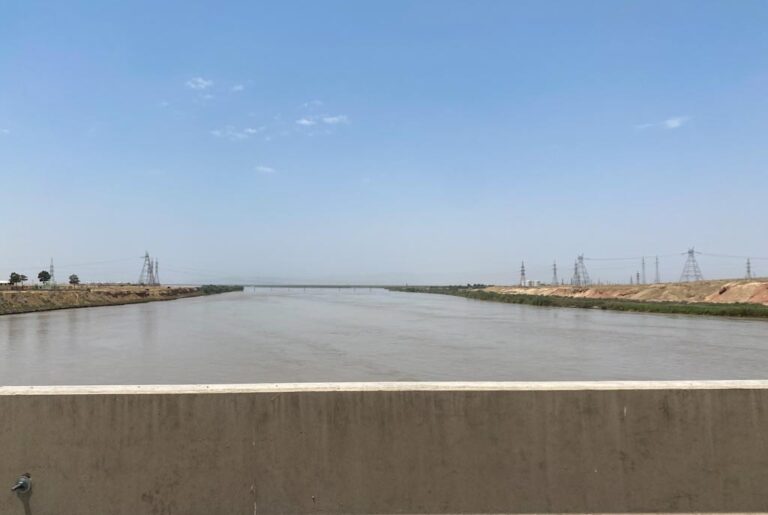
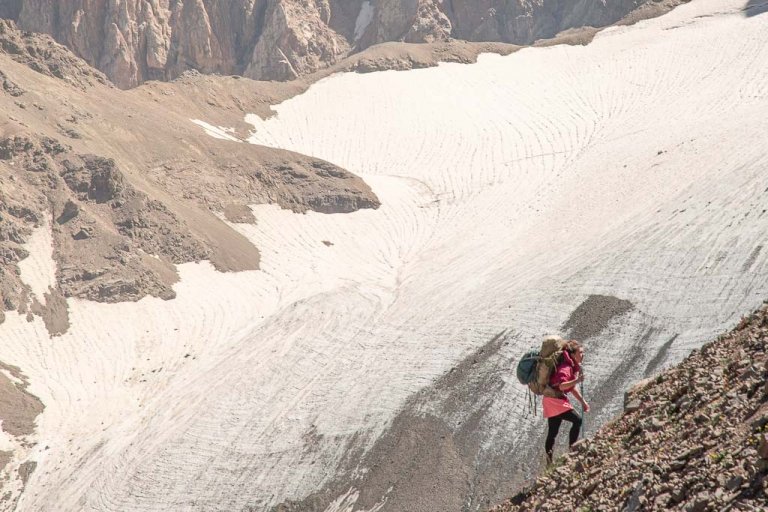
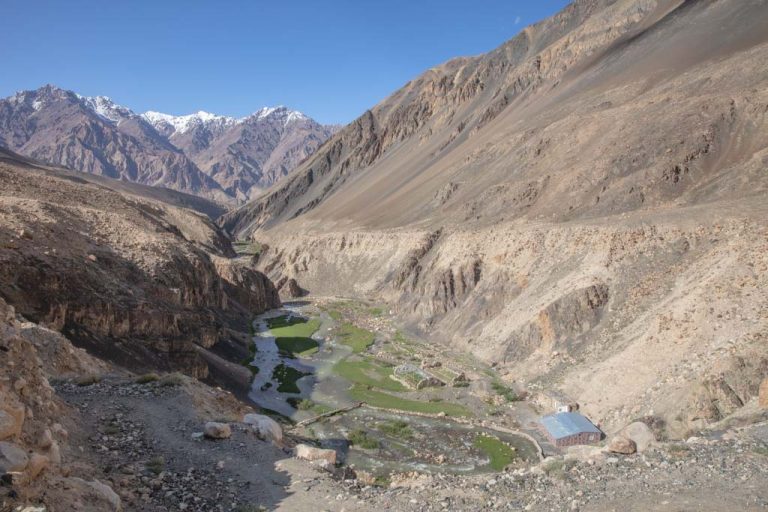
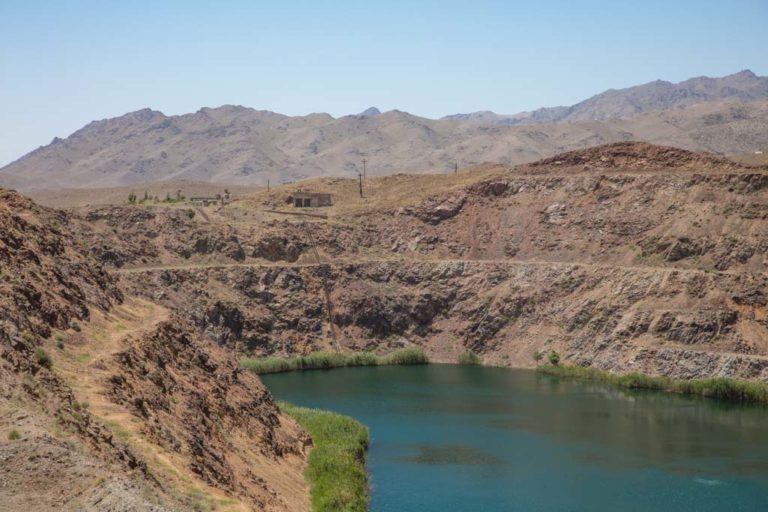
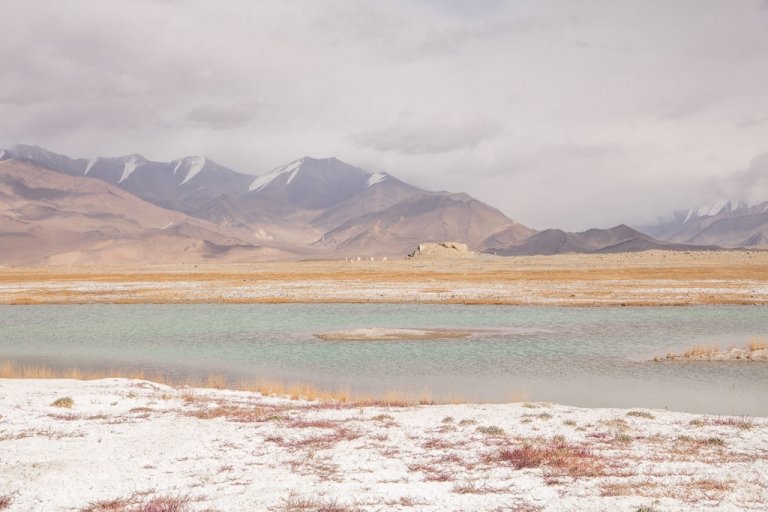
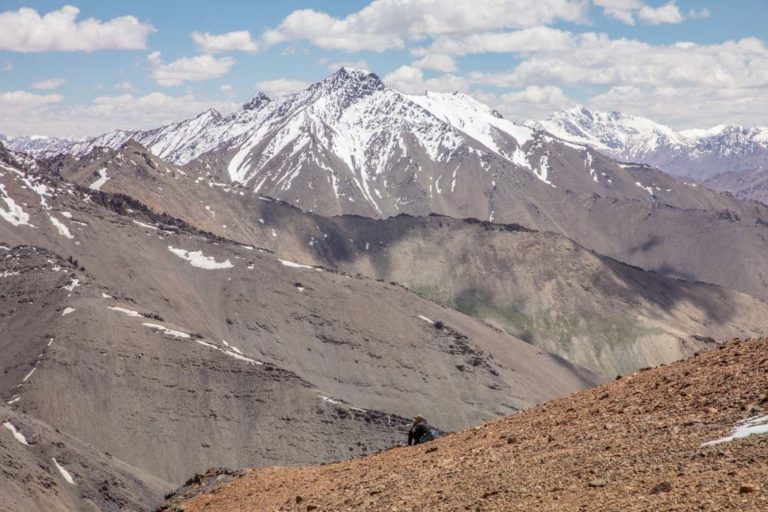
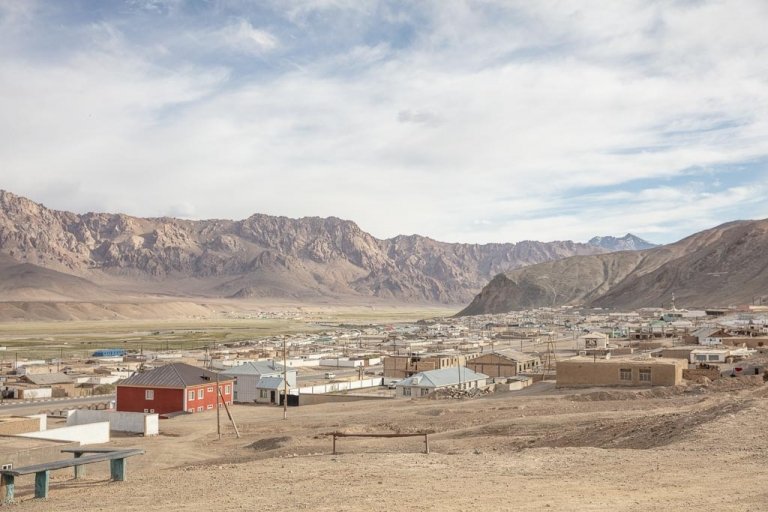
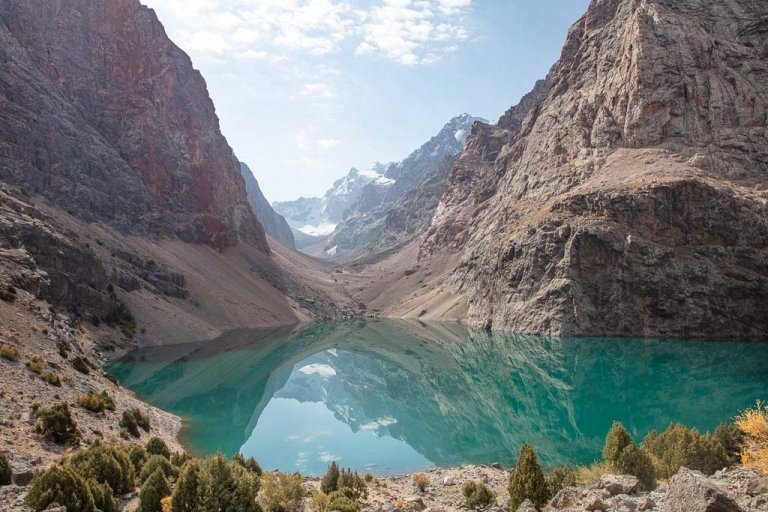
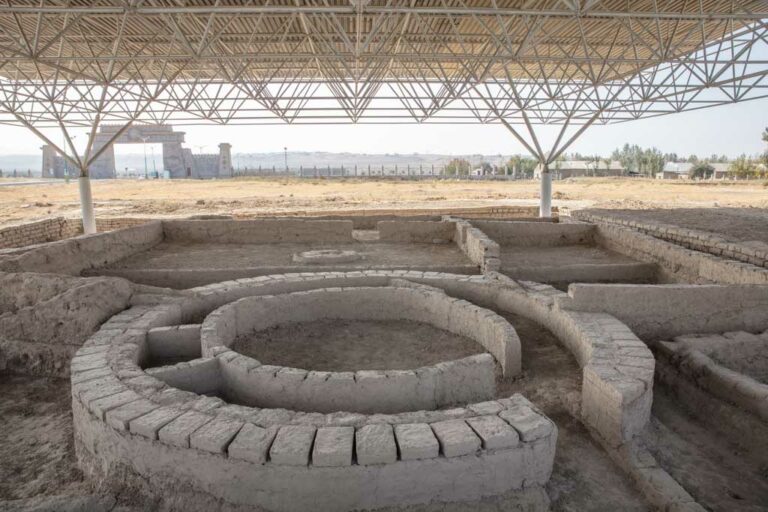
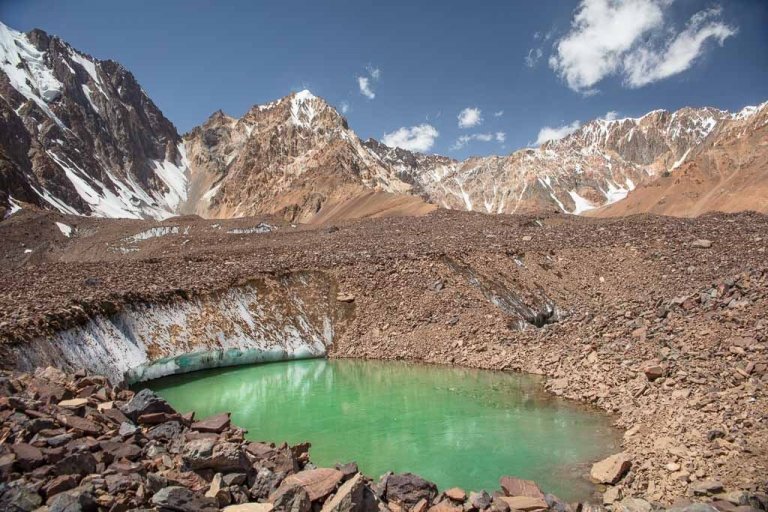
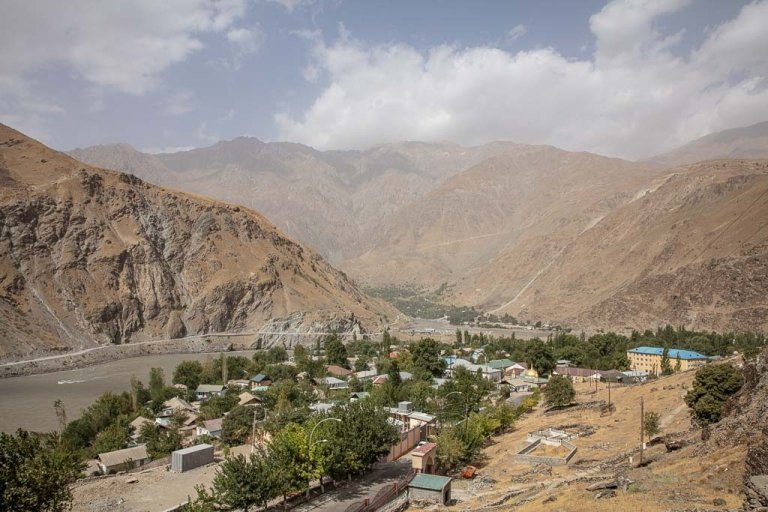
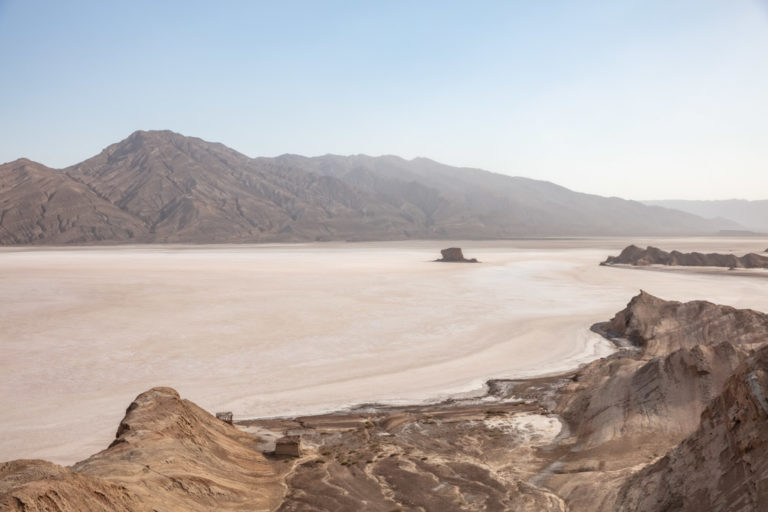
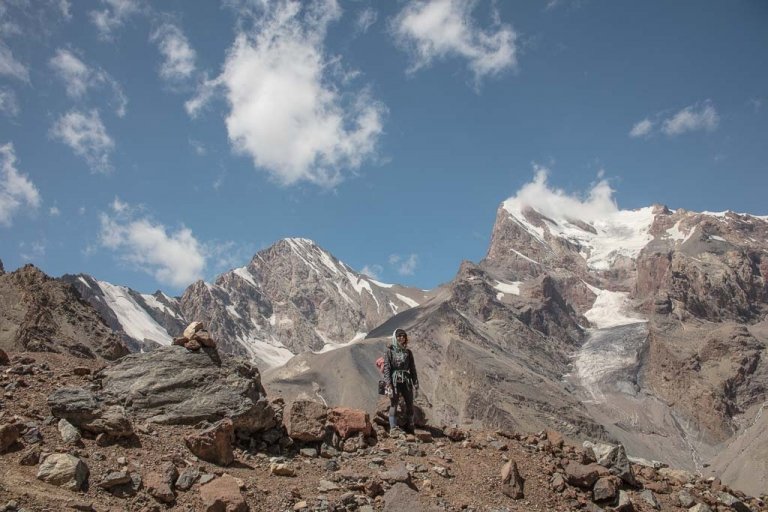
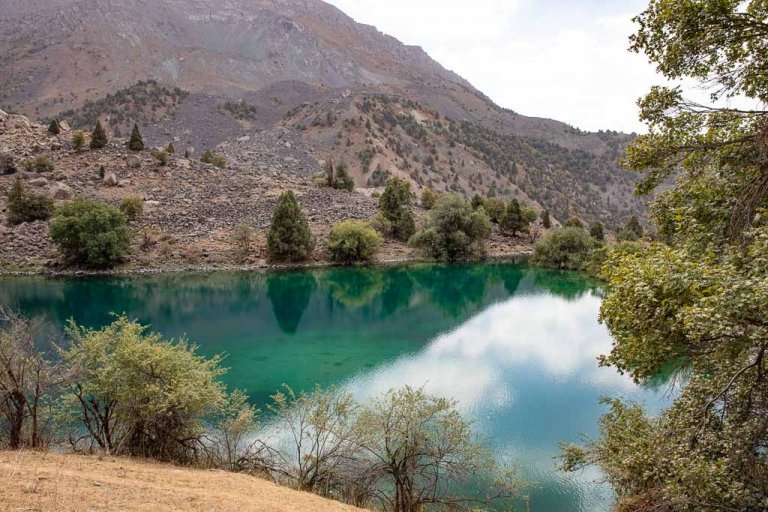
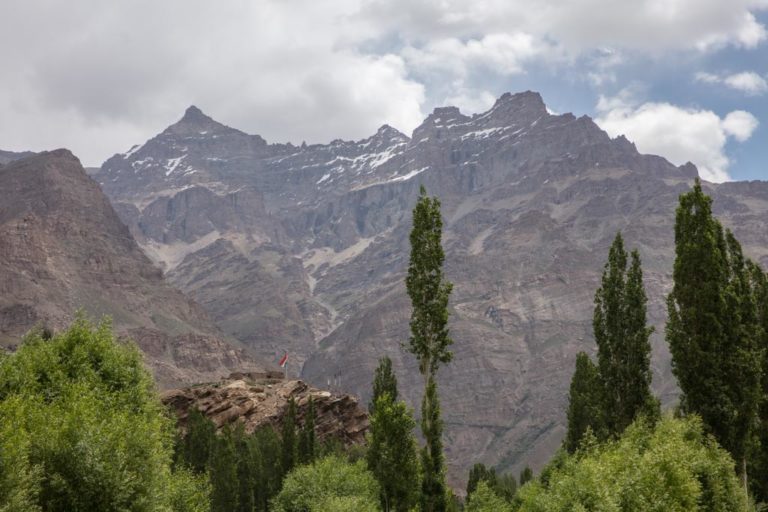
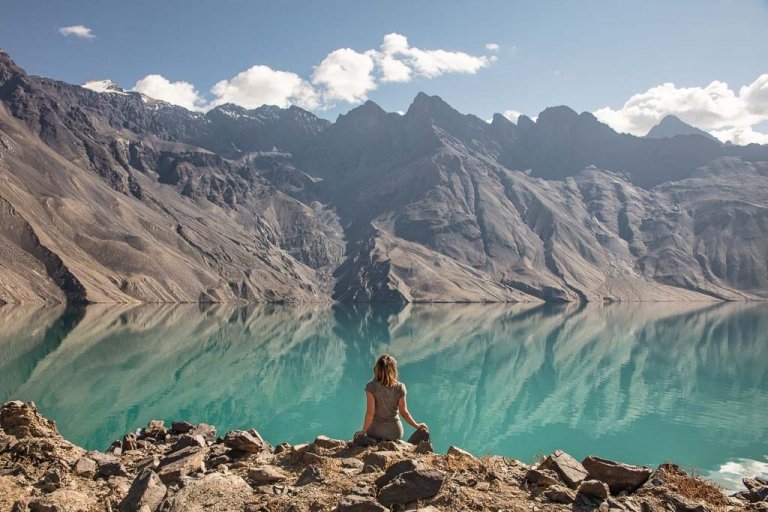
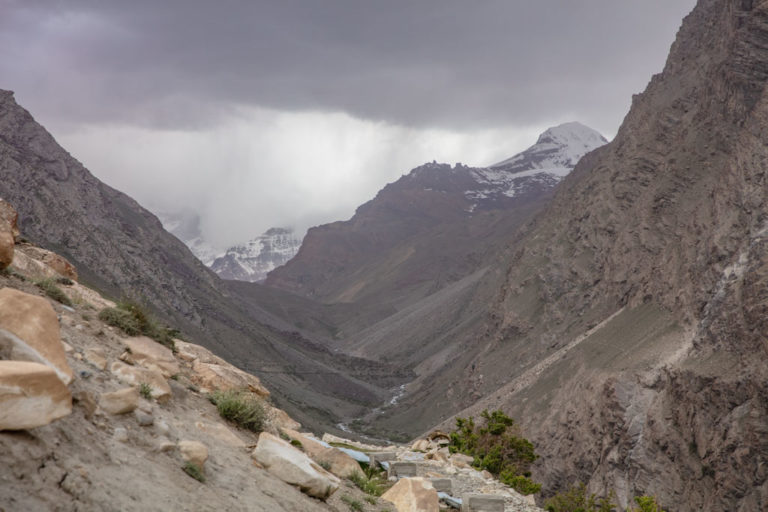
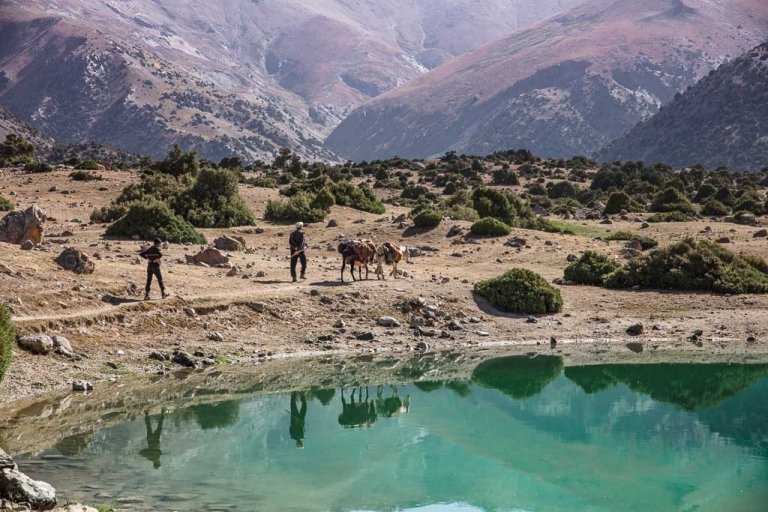
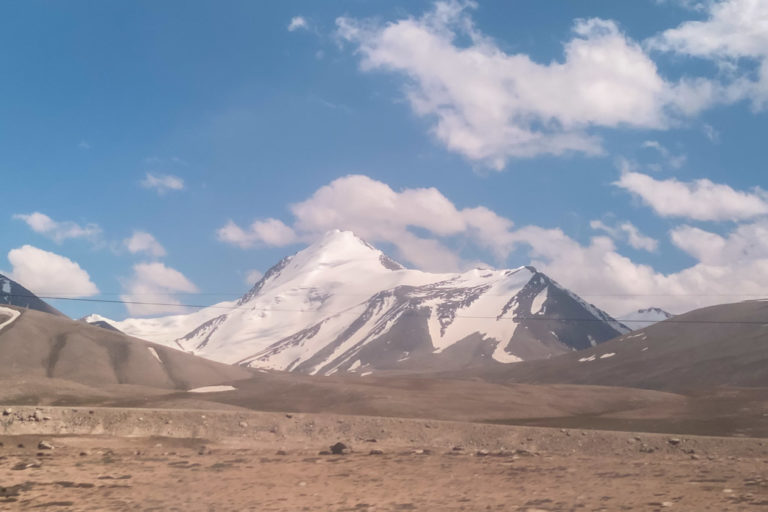
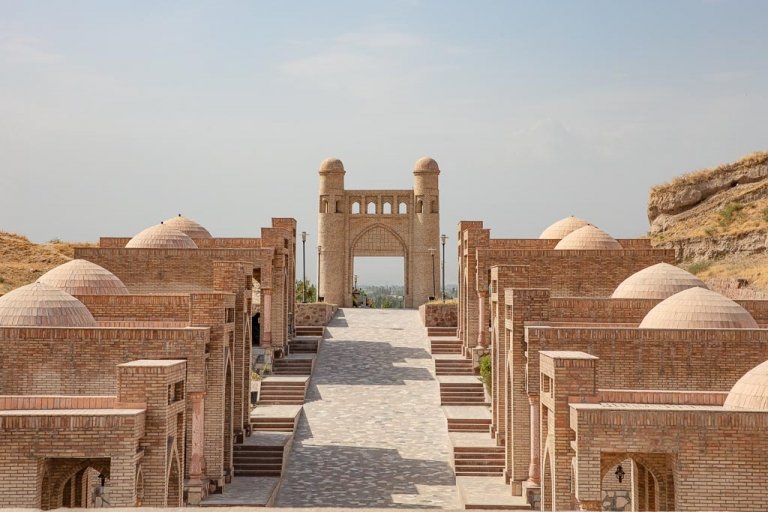
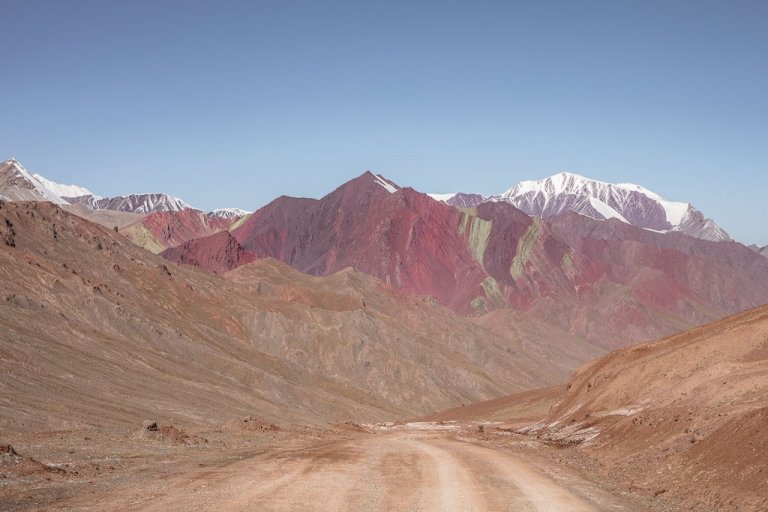
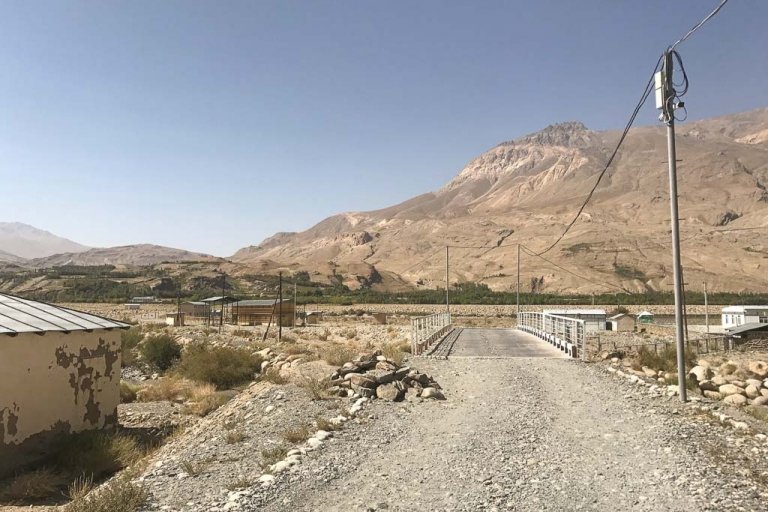
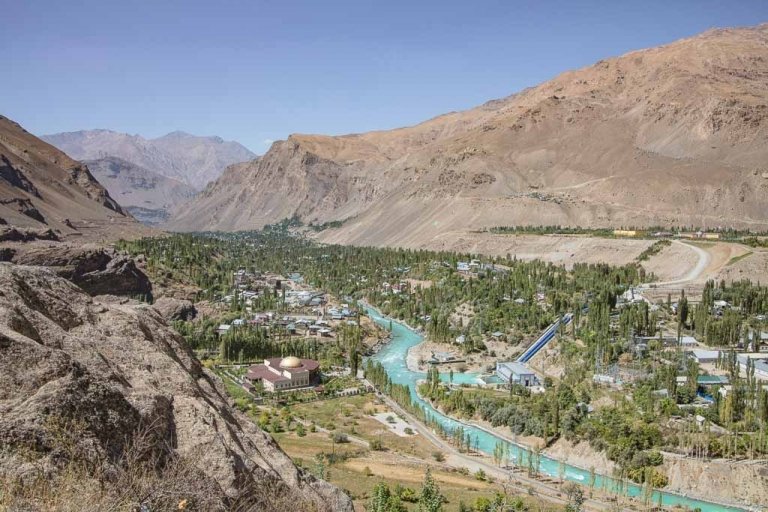
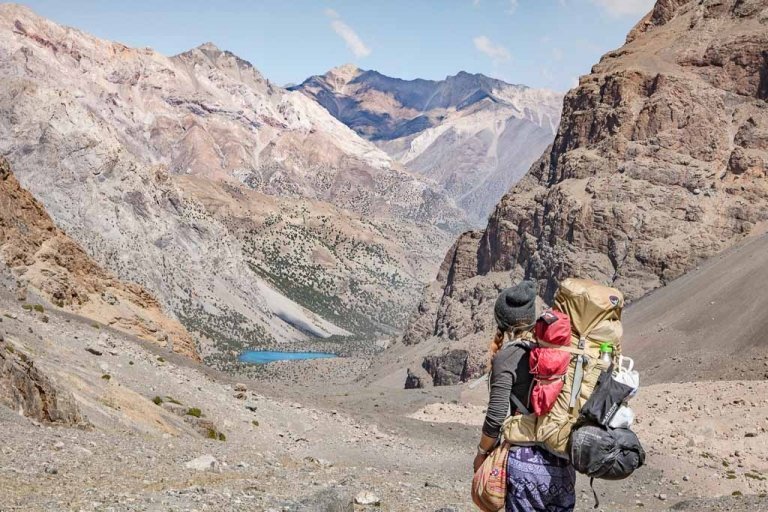
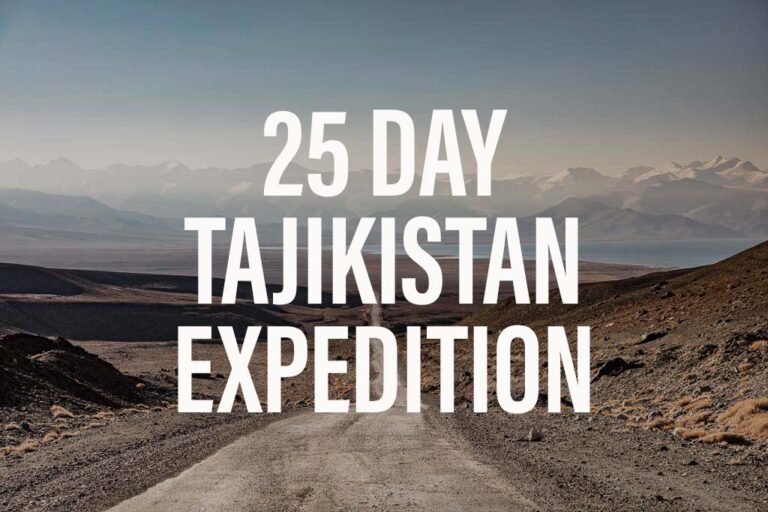
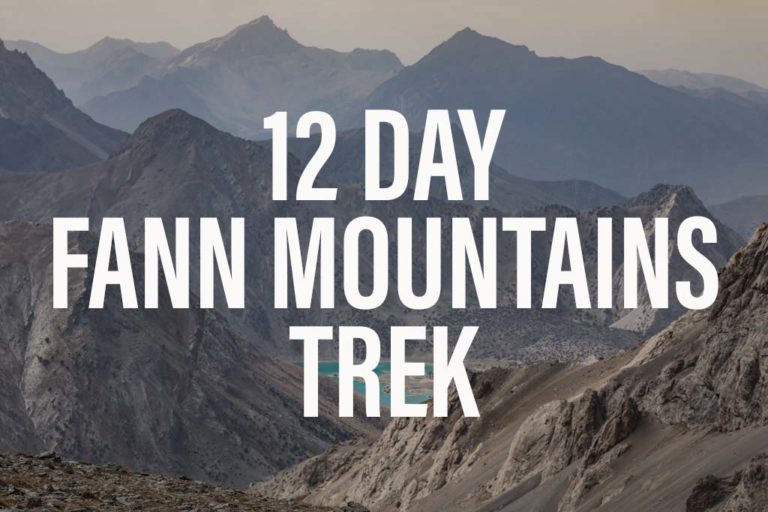
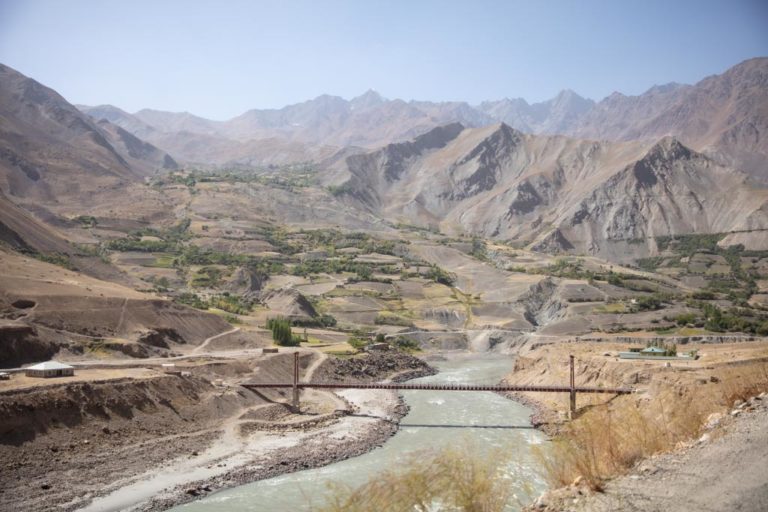
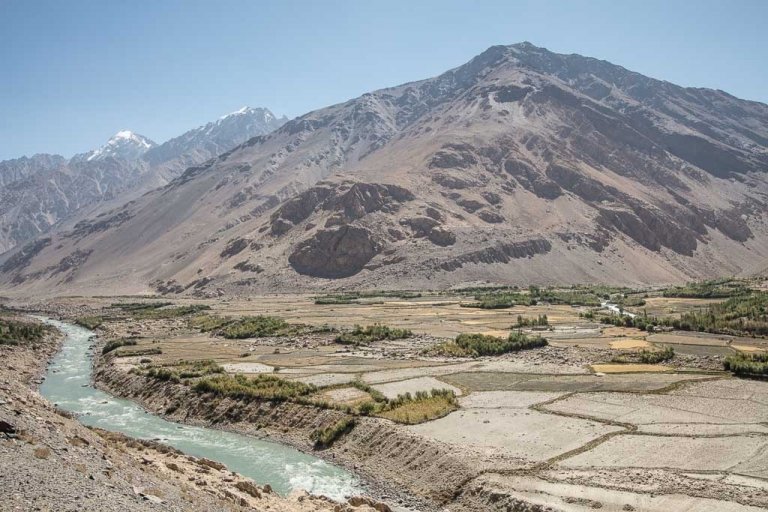
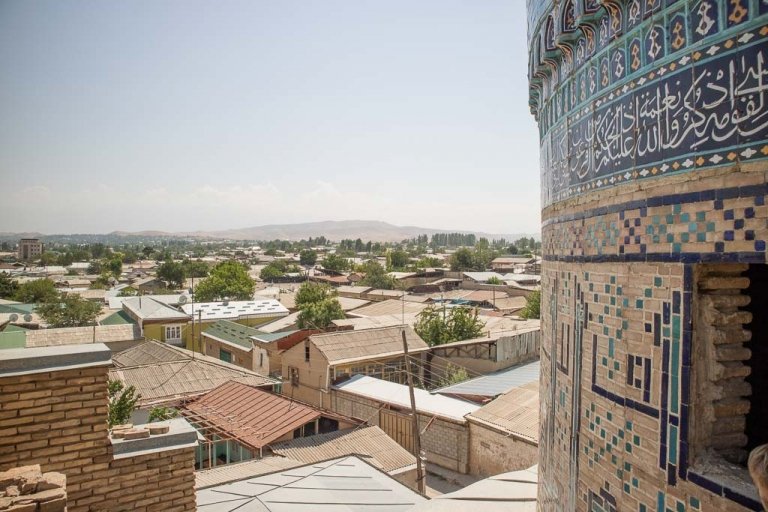
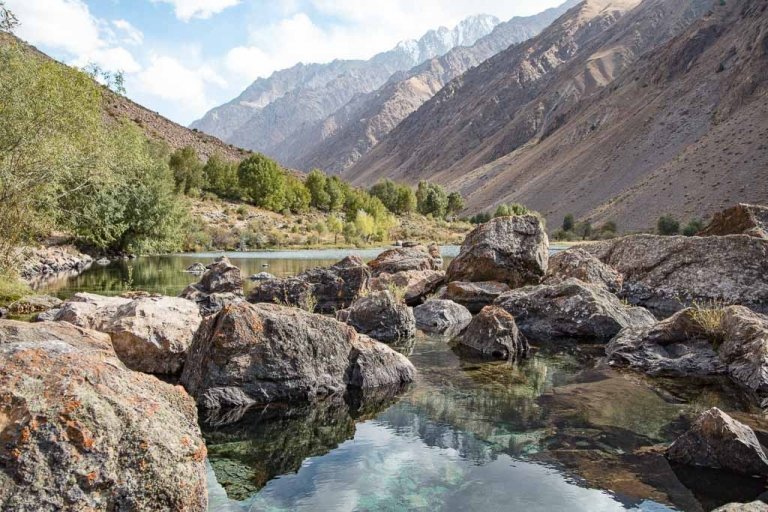
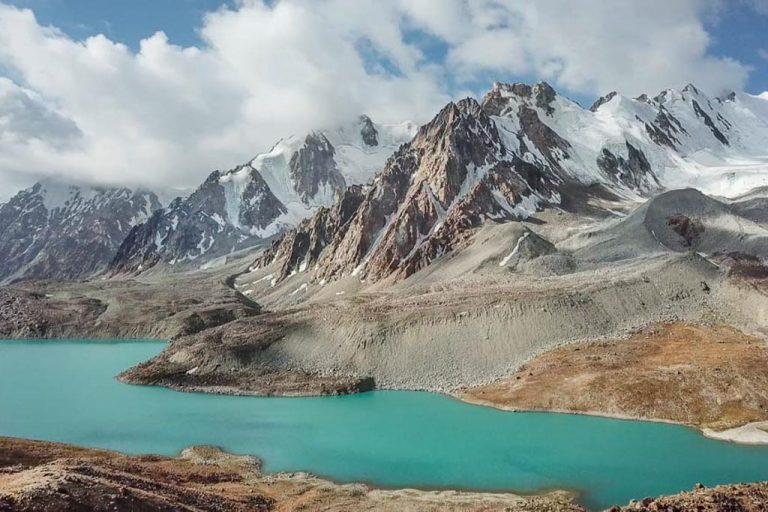
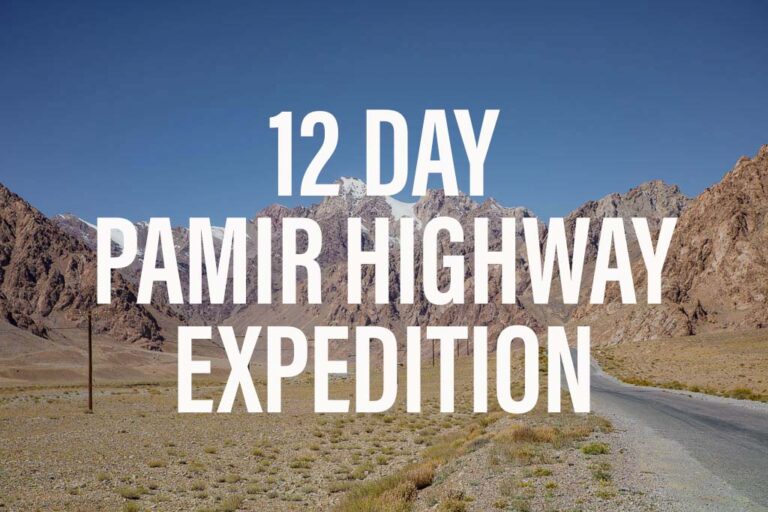
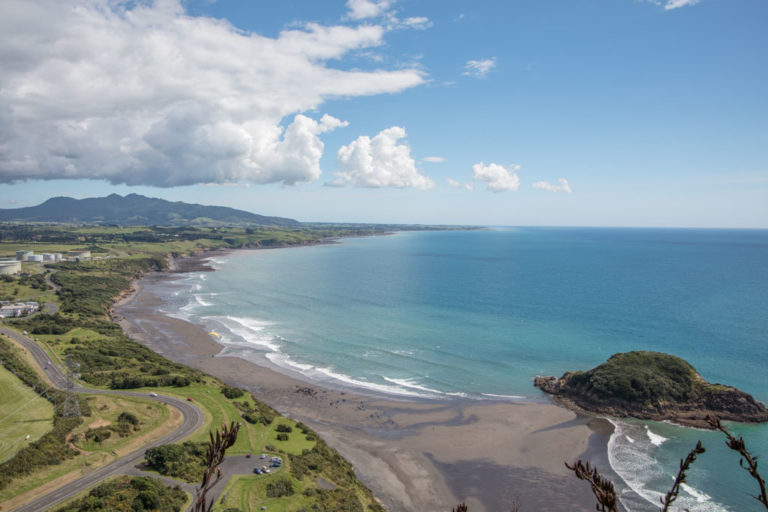
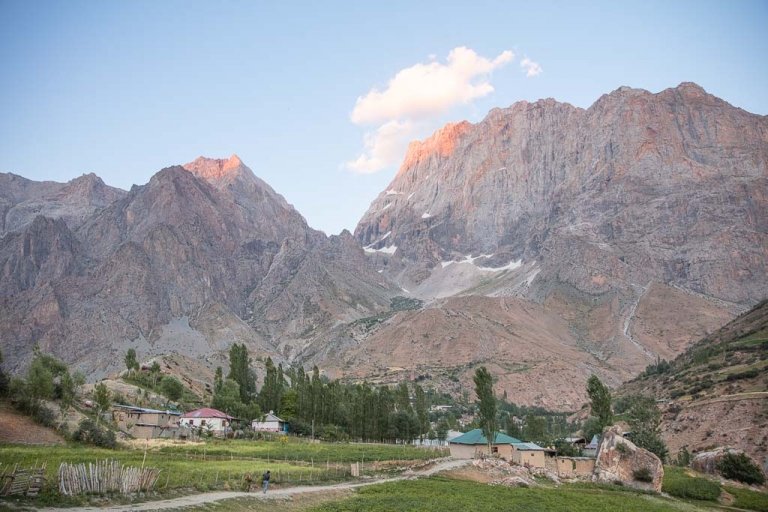
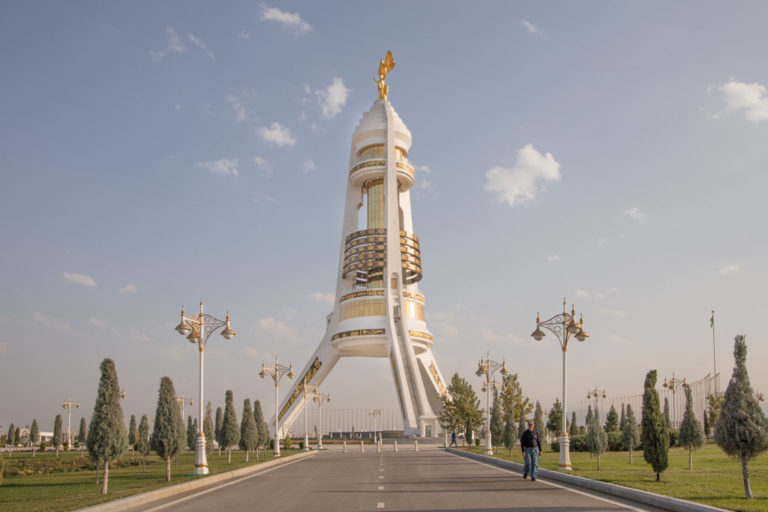
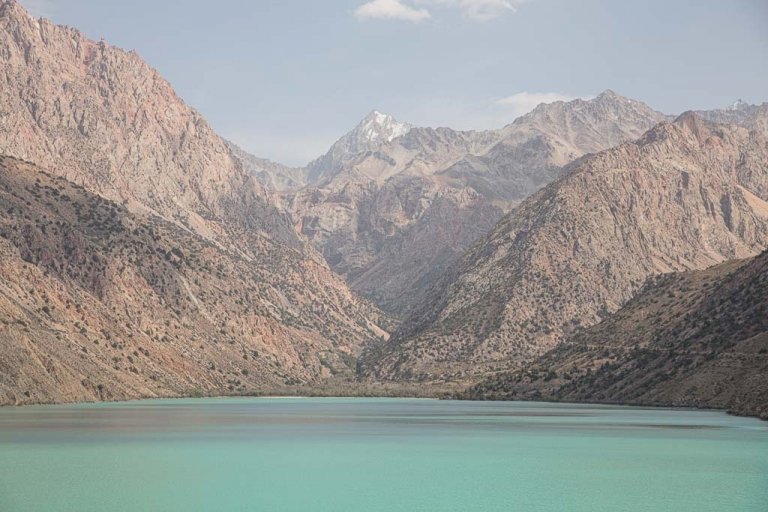
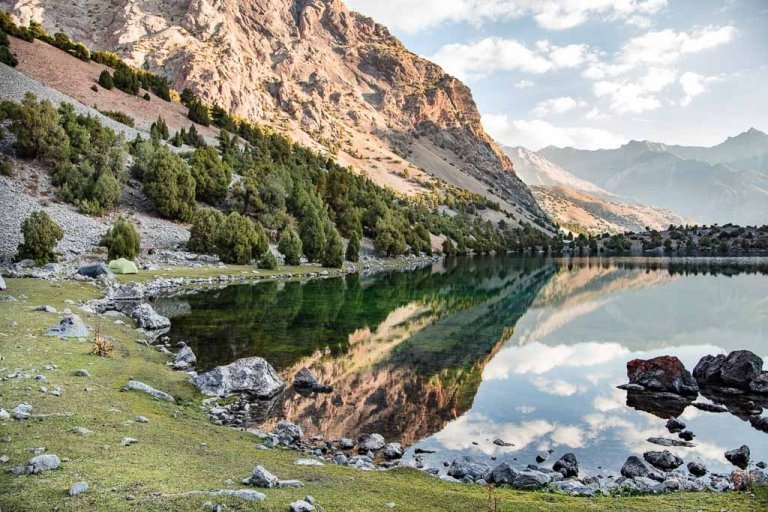
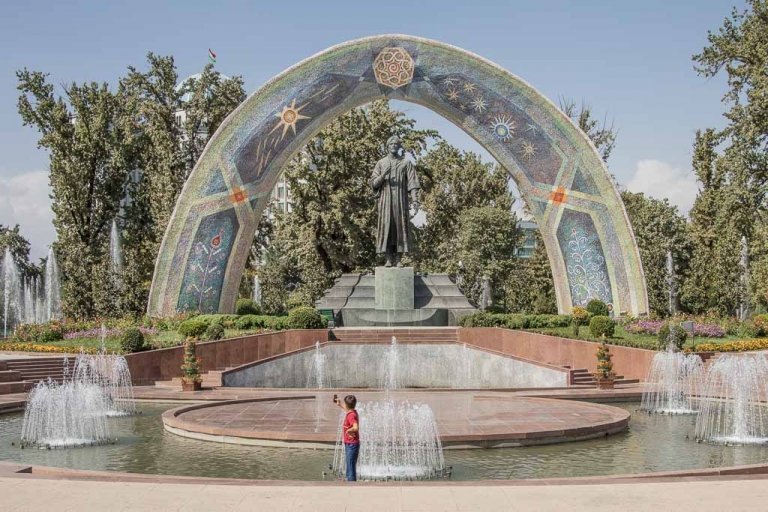
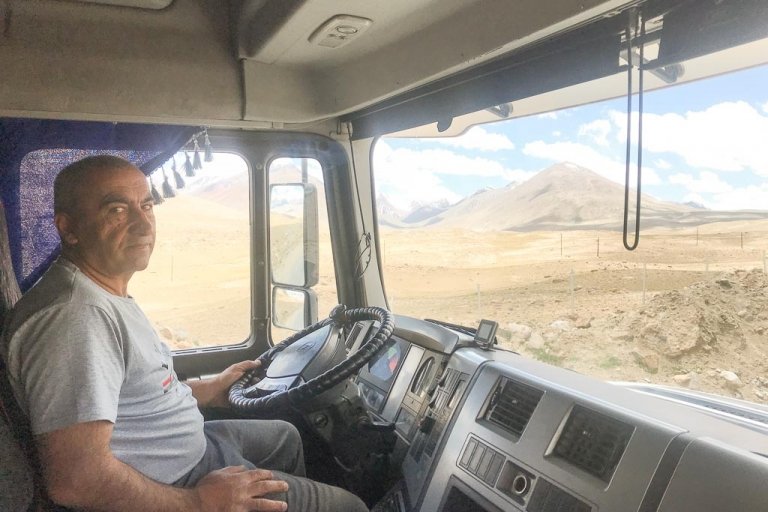
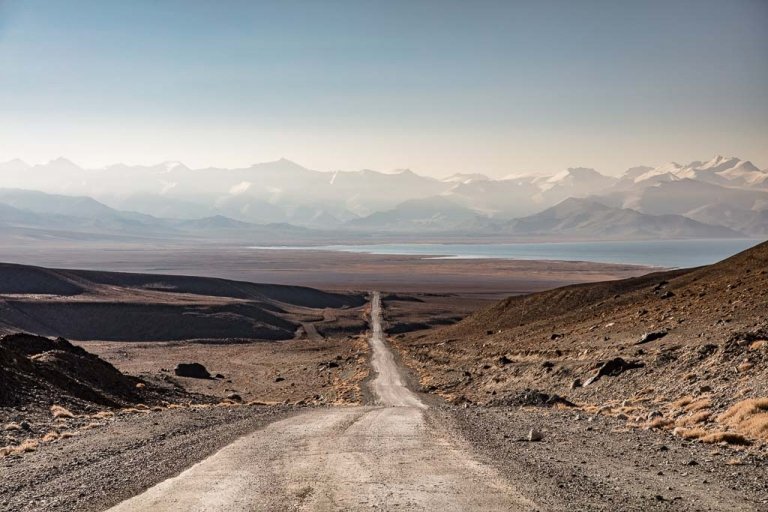
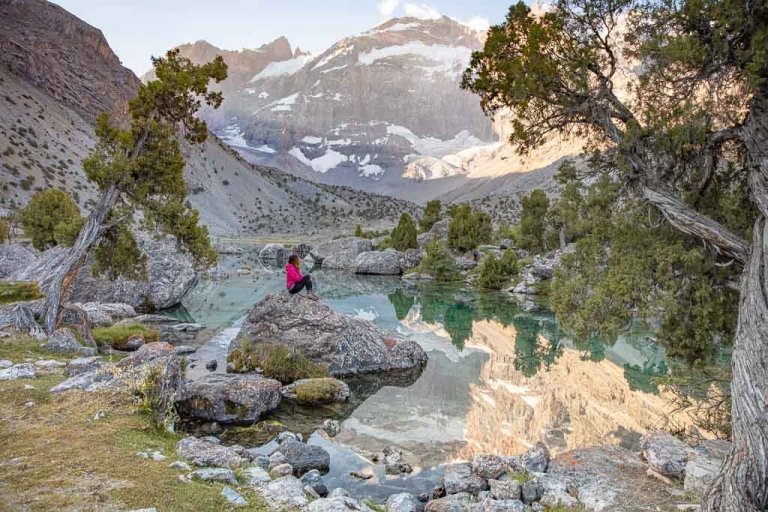
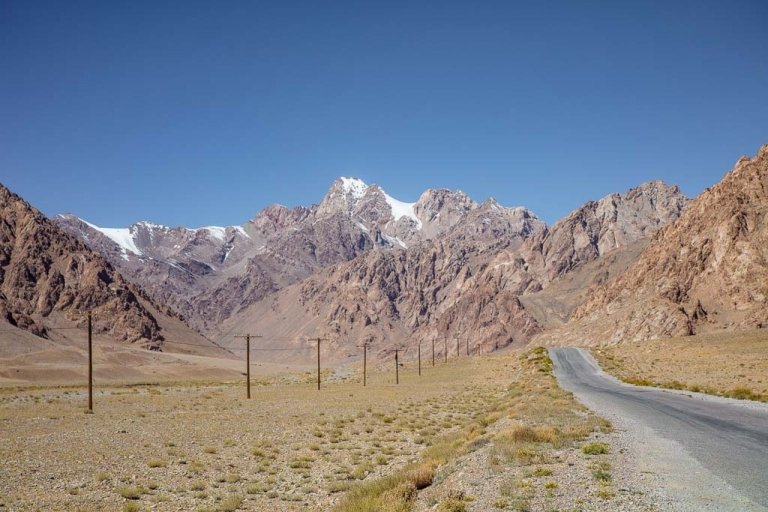
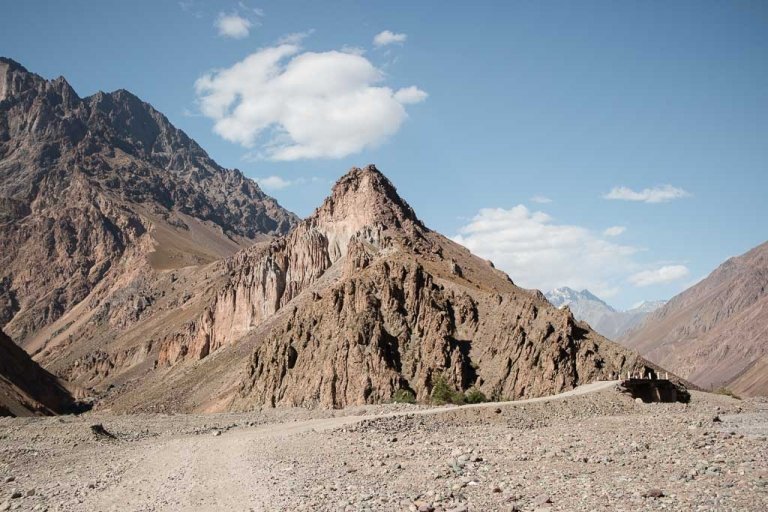

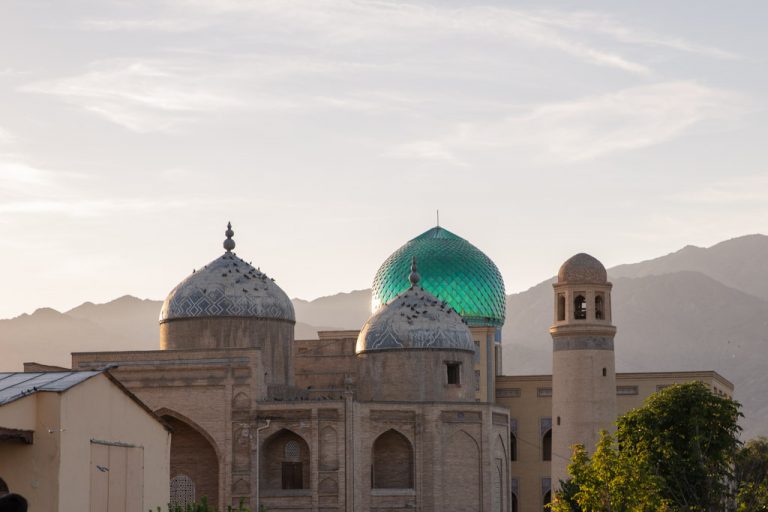
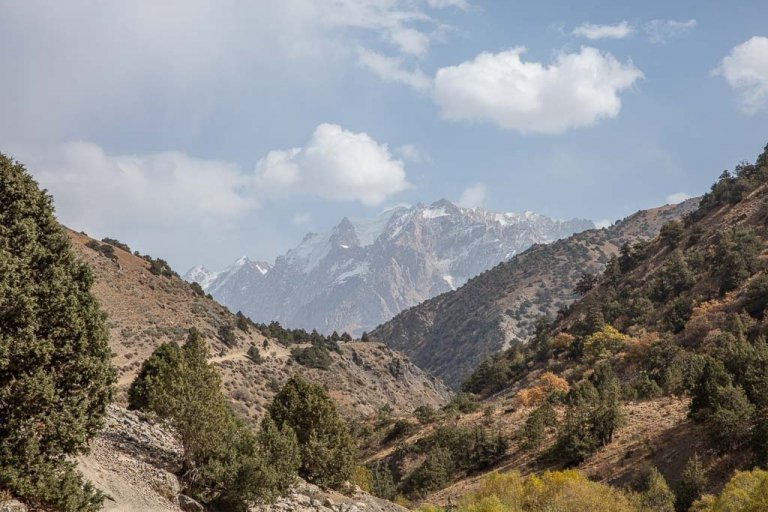
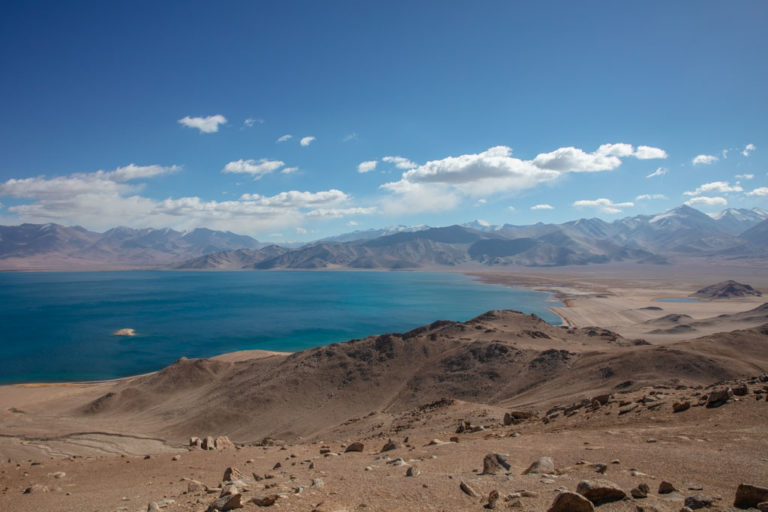
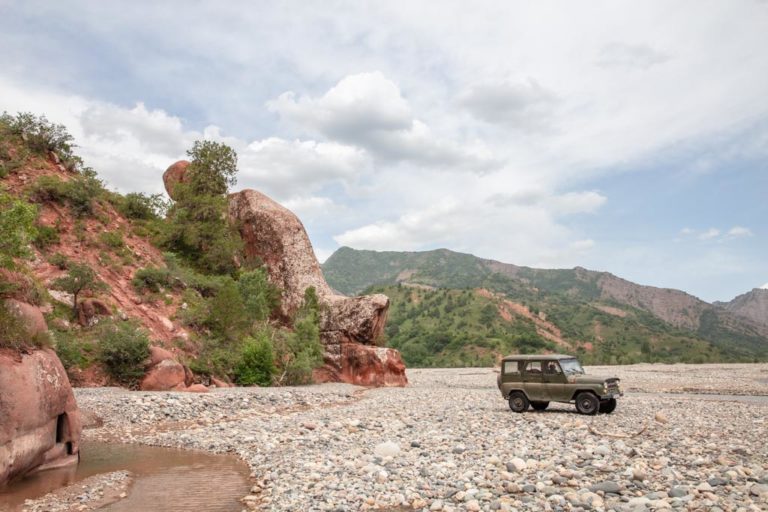

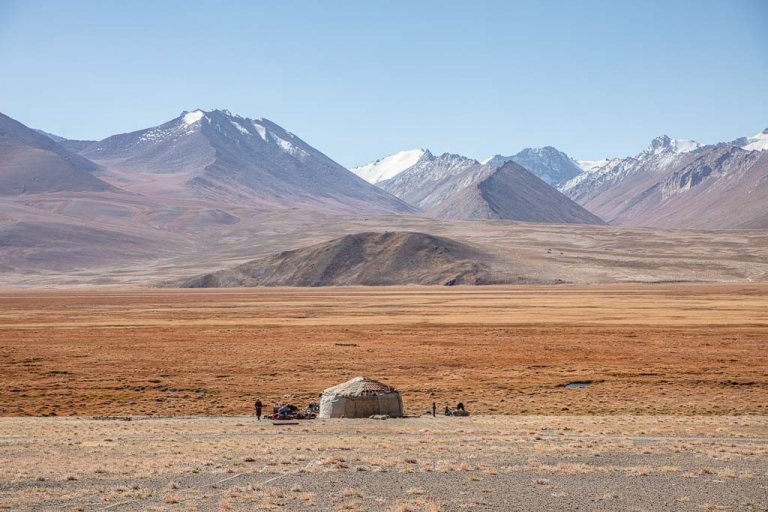
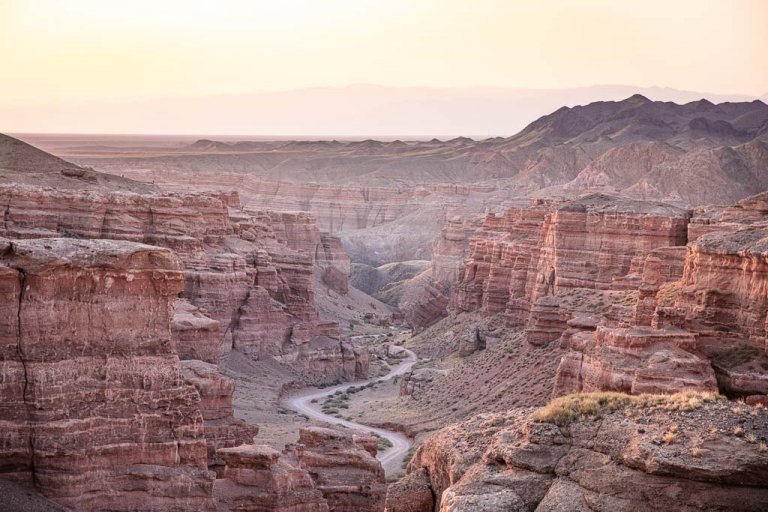
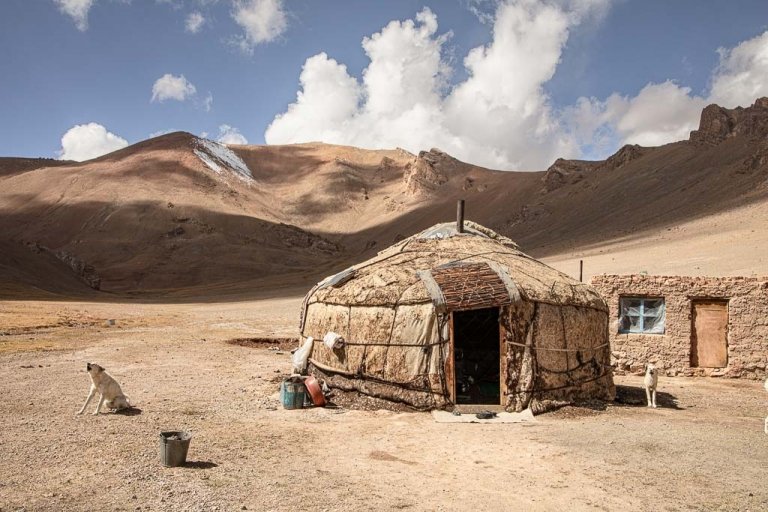
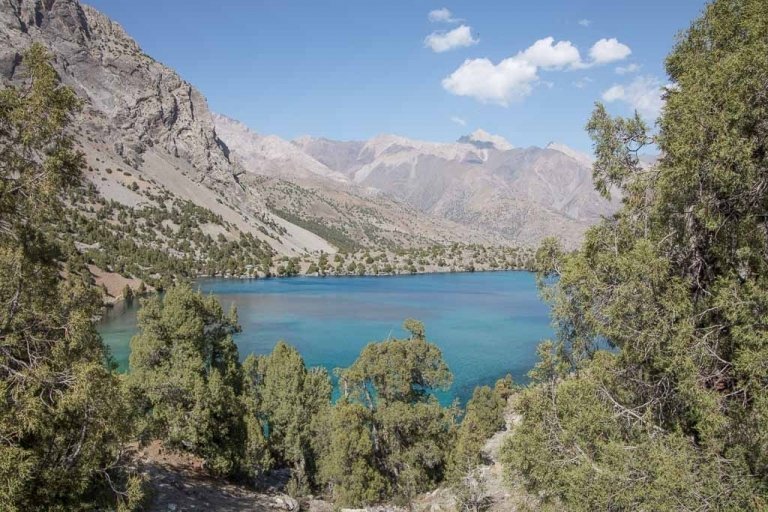
looks Great thanks for sharing this
What a great article! We’re currently dreaming of going to Tajikistan again – we’ve been
there before and we love, love love it! Here’s to a year with loads of travel plans and new experiences!
– Veronika
i’m coming over to your blog every now and then. the level of information and detail is immense.
i’m thinking of combining Kyrgyzstan and Tajikistan. Doing the Pamir highway from Osh to Dushanbe. I’ve seen you said the Pamir highway is accesible from June to mid-September.
Just wondering what are you thoughts if it’s done from beginning september to end of september. I would be on a tight schedule doing Kyrgyzstan so as to reach Tajikistan (hopefully) by the beginning of September. Around mid-september to end of september is dangerous because of the snow? Have you heard anyone doing it around say October for example?
Hey Martin,
July-Sept is best weather-wise but September and October are good months to travel the Pamirs, albeit colder. Keep an eye on the Kyrgyz-Tajik border reopening too- since the Vorukh conflict back in April/May 2021 the Kyrgyz-Tajik border crossings have been officially closed to foreign passport holders, though there are some reports of people having gotten through (and one guy I know that got stuck at the Kyrgyz side and was turned around). Hope this helps your planning, enjoy the Pamirs!
Amazing how much details the guide is. I’ve visited Tajikistan twice. Yeah, cycling the Pamir Highway. Yet I know less than 1/10 what you post. Good job. I probably will go there again in 2022 to visit friends and planning to do some trekking.
Glad to hear you’re returning, enjoy!
Dear Nicole, many thanks for your exhaustive guide on the country. I also read your posts on Dushanbe and the best restaurants there, so this will be a great starting point as we move as expats to Tajikistan in the next few months. 🙂
Hi Mariela, wow that is exciting that you will be moving to Dushanbe. I return to Tajikistan this week, so do check back as should have some updates coming up here soon!
The person who writes a very beautiful post is always of a good heart and whenever I am sitting alone, I spend my time looking at such a good post, you have written a good post, which is as much as you can in your life. Will be appreciated And you keep writing such good posts in your life, I wish you all the best.
I can’t say thank you enough for all the detail and info in this guide, I can see you have poured your heart and time into this and really care about Tajikistan. As I go back and re-read sections as a finalize my planning I become more and more excited to arrive in August
Best,
Stewart
You make me miss home so much Nicki! I can’t wait to go back next year 🙂
Great guide, thank you so much for putting this together. I am taking a sabbatical next year and plan to use it to travel the Silk Road and include the Pamir Highway.
Good article, I hope you bring many tourist to us un Tajikistan
Very nice meet you, I wait you return in Khorog
Please return to Tajikistan, you have written so many nice words. I host you in Jirgatol if you com
Tank you for kind words about my homeland. I live Moscow at work now but I miss home often.
Thank you for the tips
красивые фотографии
Hi Nicki, I am beyond excited to go to Tajikistan and that I found your blog in the process. There is so much info I’m learning here that I’ve never found elsewhere 🙂 Thank you!!
Wow I don’t think I’d ever heard of Tajikistan before! I saw a photo pop up on pinterest and ended up on your blog and quickly was sucked into reading about this mystery country (to me anyways LOL). This place is gorgeous, though maybe a little too wild for my own travels just yet!
It’s a bit rough around the edges but its definitely on the prettiest countries around to me. Glad I could introduce you to Tajikistan!
Wow gret photos and informative post, though I have to admit I didn’t read through all of it! Cheers
Thanks!
As my trip comes to a close in Osh and now happily reunited with fast internet, I wanted to thank you for all your efforts into this guide. Between this country guide and all your others on Tajikistan it greatly helped me travel this beautiful country. I started from Osh and made the loop going to Khujand, the Fans Mountains, Dushanbe and up the Amir Highway back to Osh. Was a fabulous time!
Good to hear it helped you out and that you had a great time!
Wow, this is information overload! Thanks for all your effort into making a useable travel guide. I’m in my planning stages for 2019 and am happy to have found your blog
Glad you’ve found it helpful, I hope you have a great trip
Wow this really is the ultimate guide, you’ve included anything I could ever think of! Thank you for sharing your beautiful photos as well.
Thanks! It was difficult to find info when I was planning my first trip there, so wanted to help others out that want to visit.
I’ve just began my planning for my mountaineering trip in Tajikistan in 2019. I’m happy to have found this page, because it gives me so many ideas of activities and places I want to see when I’m not playing mountaingoat
Hope you enjoy mountaineering in TJ next year!
Привет из Беларуси Ники!
Great informations here, I hope this finds you well. I will be going to Tajikistan in September for some trekking in Fannski Gori, and then taking the Pamir Highway to Osh. I have found your blog very useful in planning. I hope that you may be in Tajikistan in September this year and could join you in trekking! If not I will love to host you in Belarus sometime 🙂
Большое спасибо,
Валентина
Hi Valentina,
Glad this is helping with your planning. Good luck, I hope you love it in TJ!
Thanks Nicki for this greatly detailed guide! I am planning a trip to Tajikistan for later this summer and after seeing your photos and reading your blogs about the country I am very excited to visit.
I hope you have an amazing time in Tajikistan this summer.
Kyle again here,
I still am so thankful for all your posts on Tajikistan! It has really, truly helped me get a kick start on planning this trip. My only doubt now is that I won’t have enough time- I never thought I’d say that about a country that there’s so little information on it in regards to travel.
Hey Kyle,
There’s never enough time! I still haven’t touched the North-Central or Southeast parts of Tajikistan. I’ve also got so much to explore in the Eastern Pamir as well. I’d say pick an area or two (dependent on the time you have) that interests you the most and focus on them.i know it’s a tough decision though! Good luck out there 🙂
Ahh, this sounds like such an amazing trip! The photos are amazing!
Tajikistan and Yemen are officially my two favorite places now! Tajikistan I think is the easiest place in the world to photograph because everything there is beautiful. Definitely going back.
This is a wonderful guide, thank-you so much. I don’t think we will ever be needing the Lonely Planet anymore with bloggers upping their game so much.
Thanks! I wanted to get a most up-to-date guide put out there for anyone planning a visit, the LP can get a bit outdated in that part of the world since everything seems to change so quickly!
Such an excellent detailed guide. The Indian version is called Samosa and I love it 🙂
Thanks for the correction!!
I’ve never wanted to go to Tajikistan until I started reading your posts about it. Holy cow it’s beautiful! Looks like my kind of place and I’m definitely adding it to my list!
Go! You won’t be disappointed, I promise. I just loved it, I can’t wait to back!